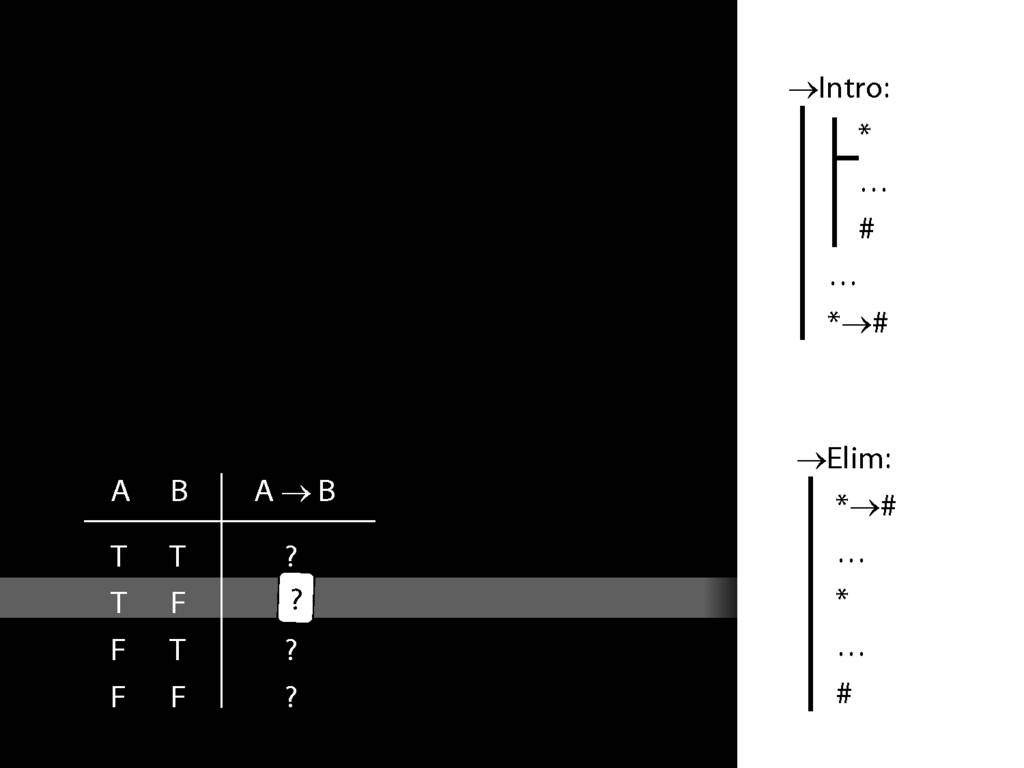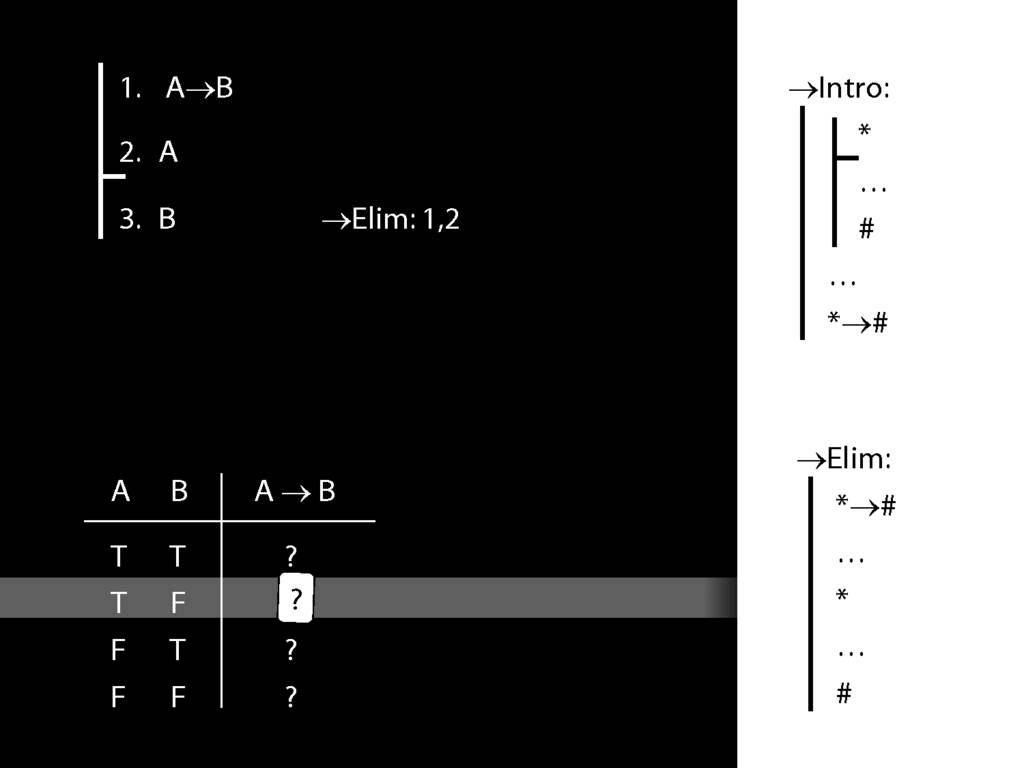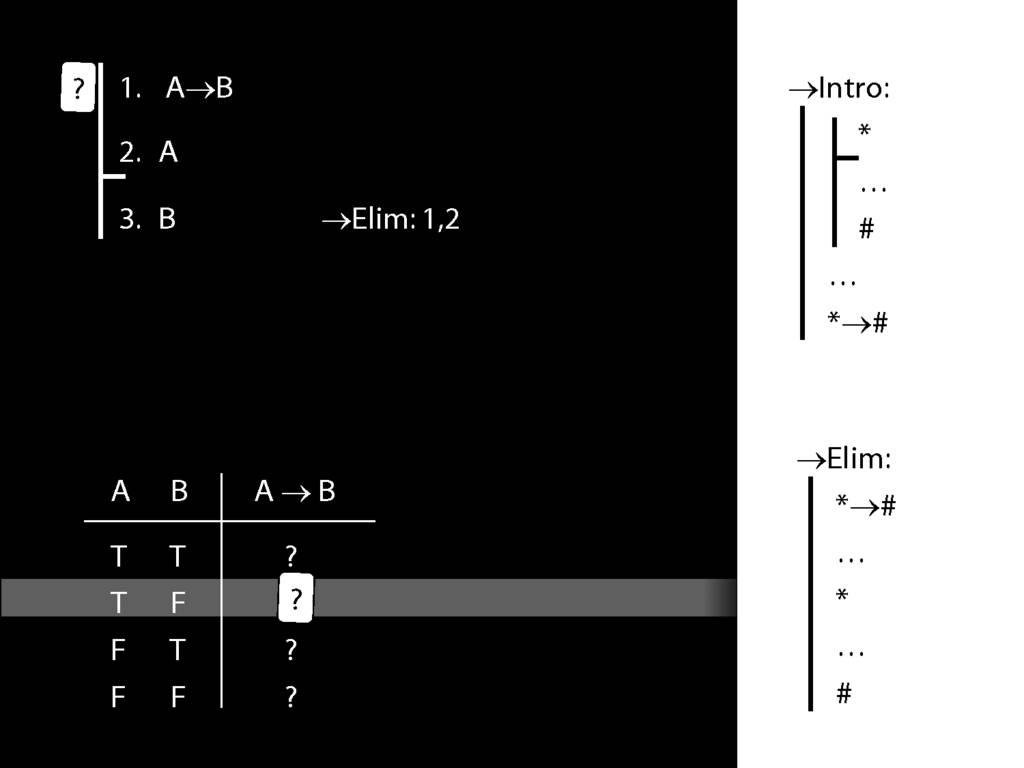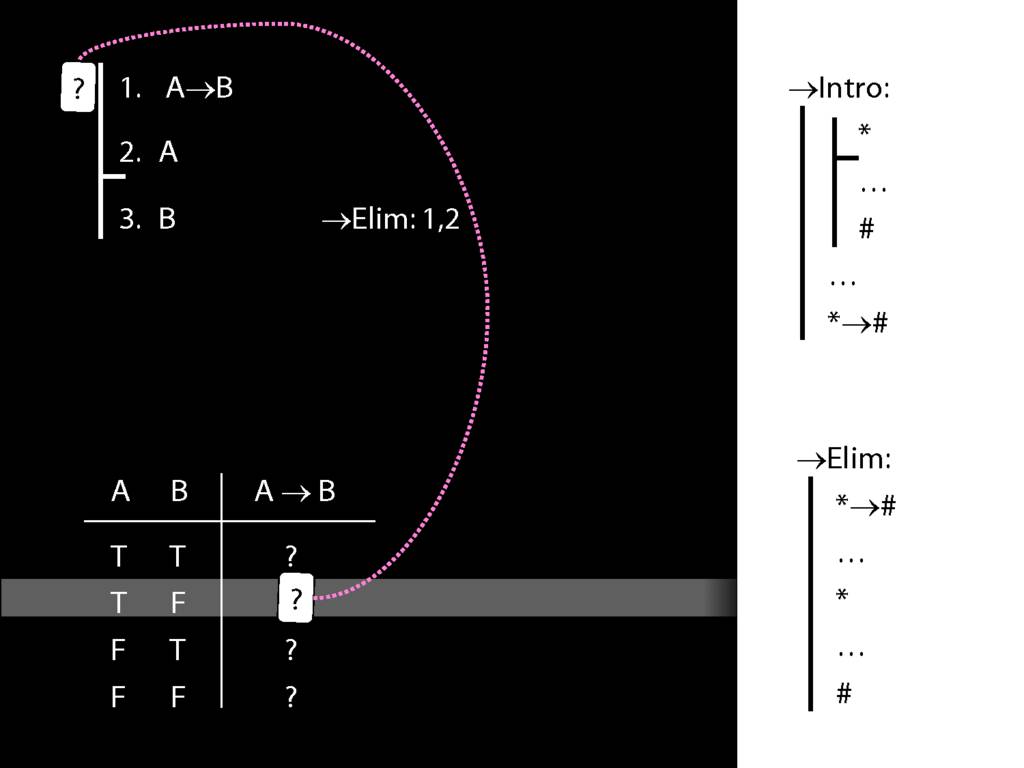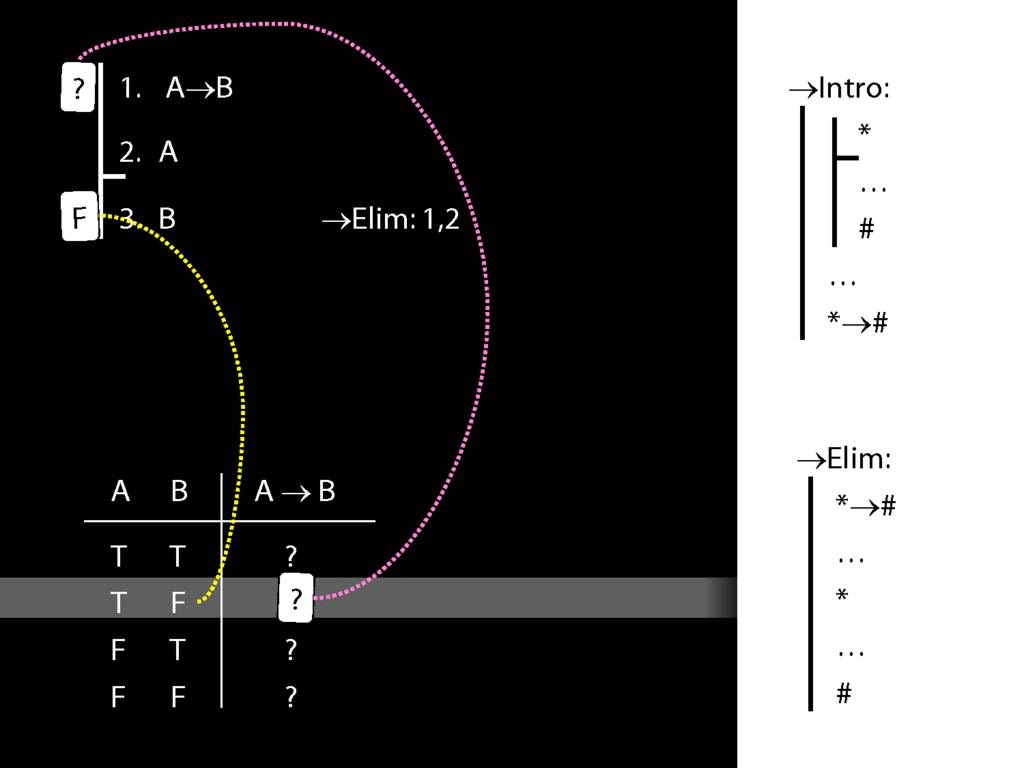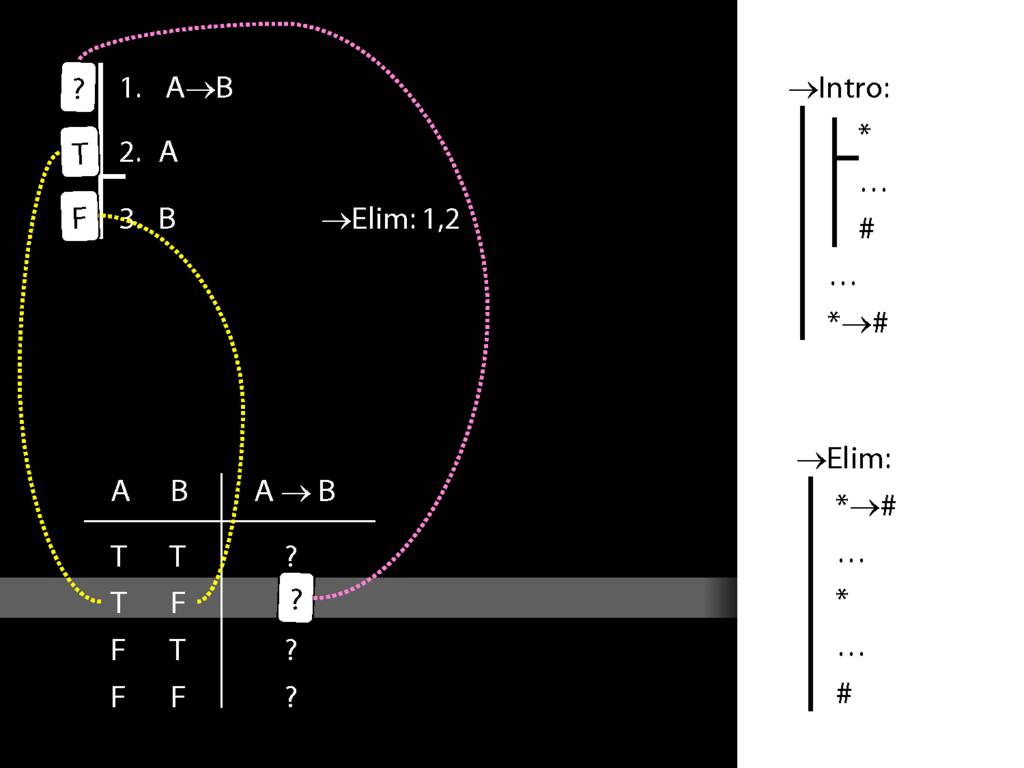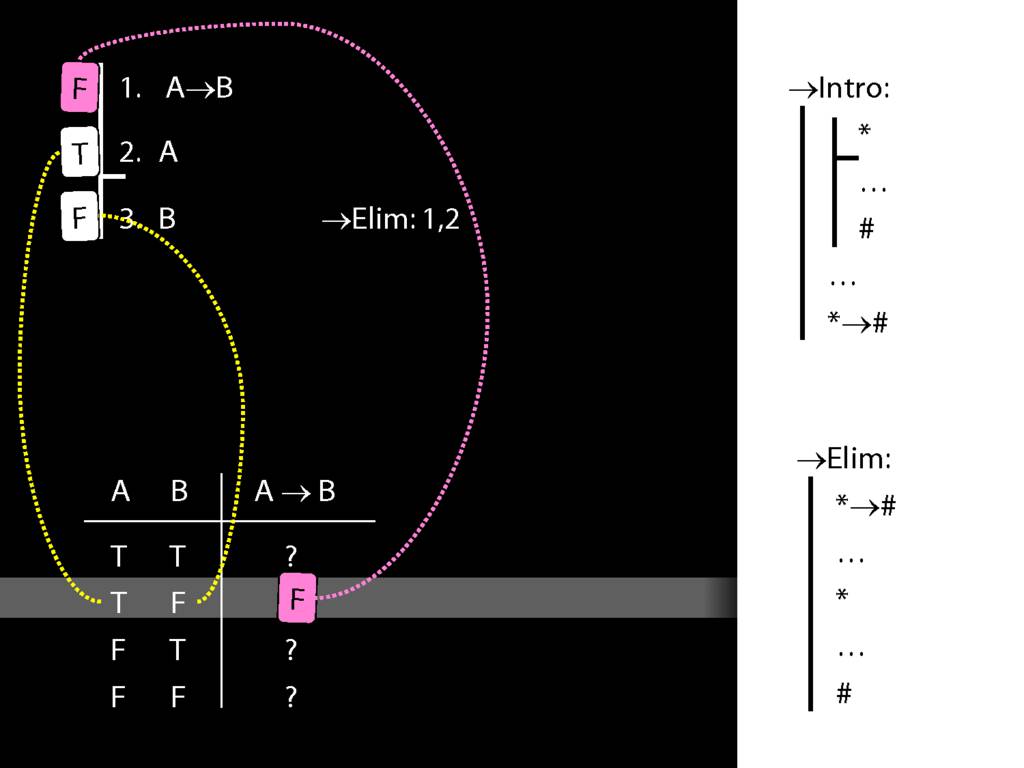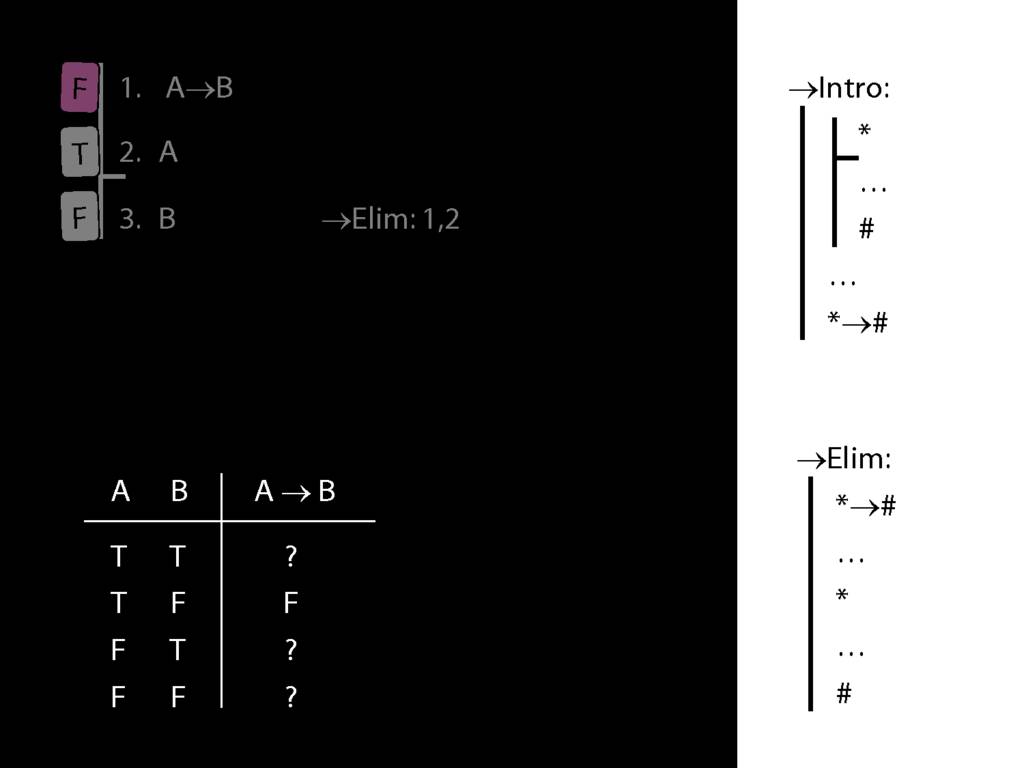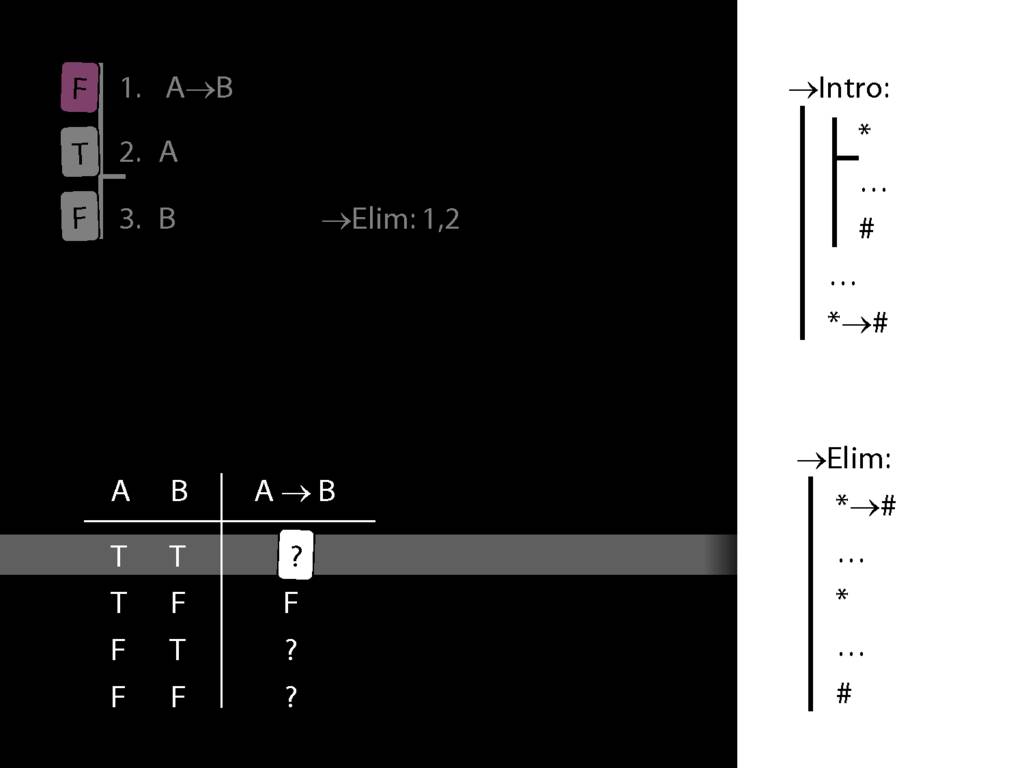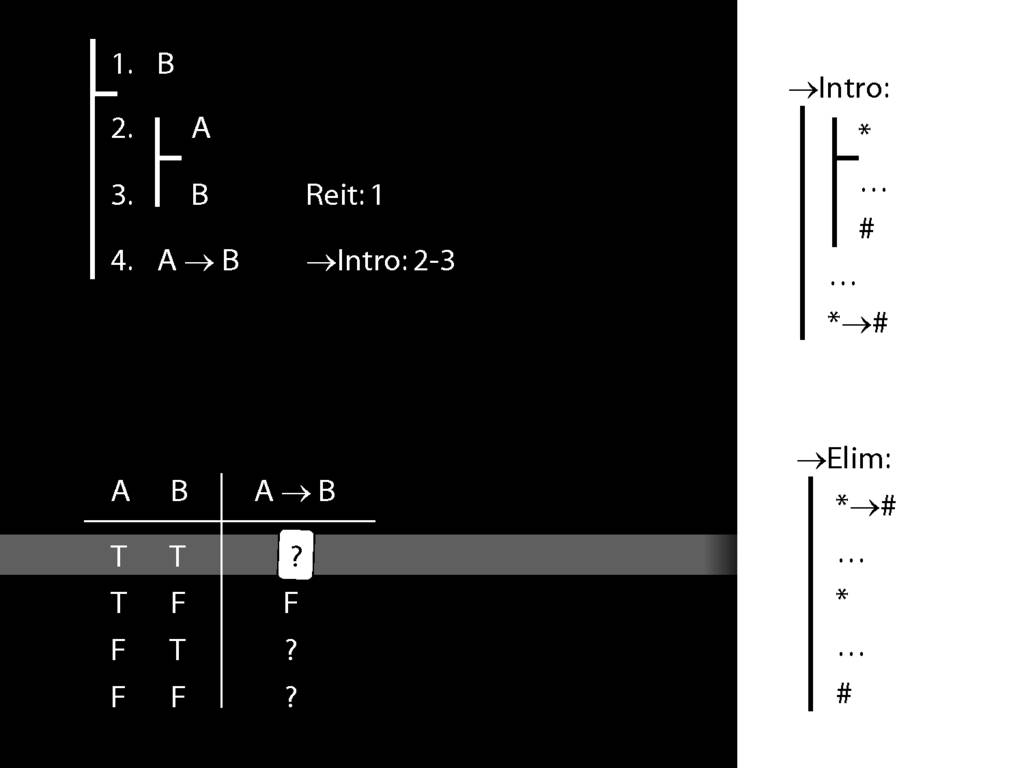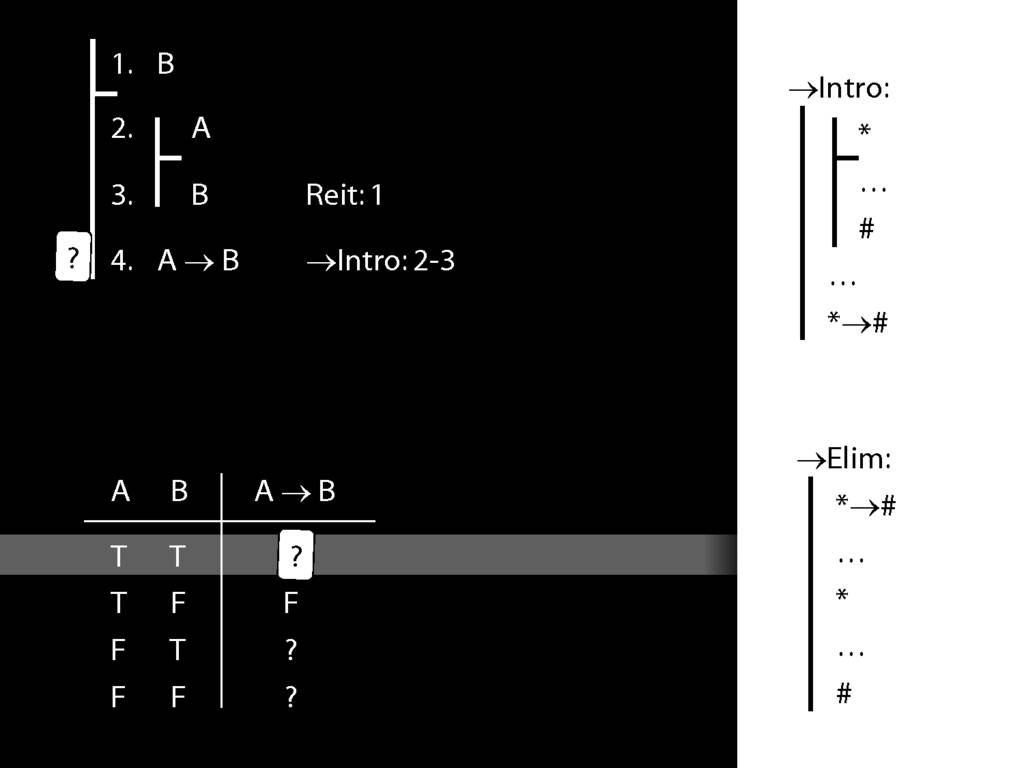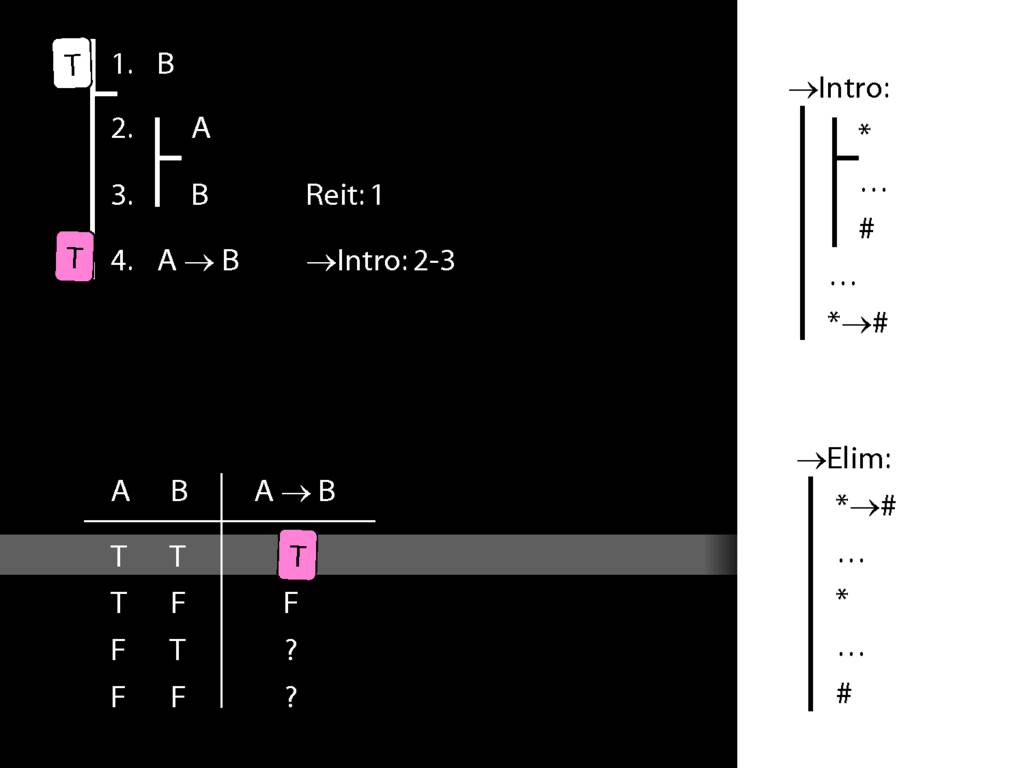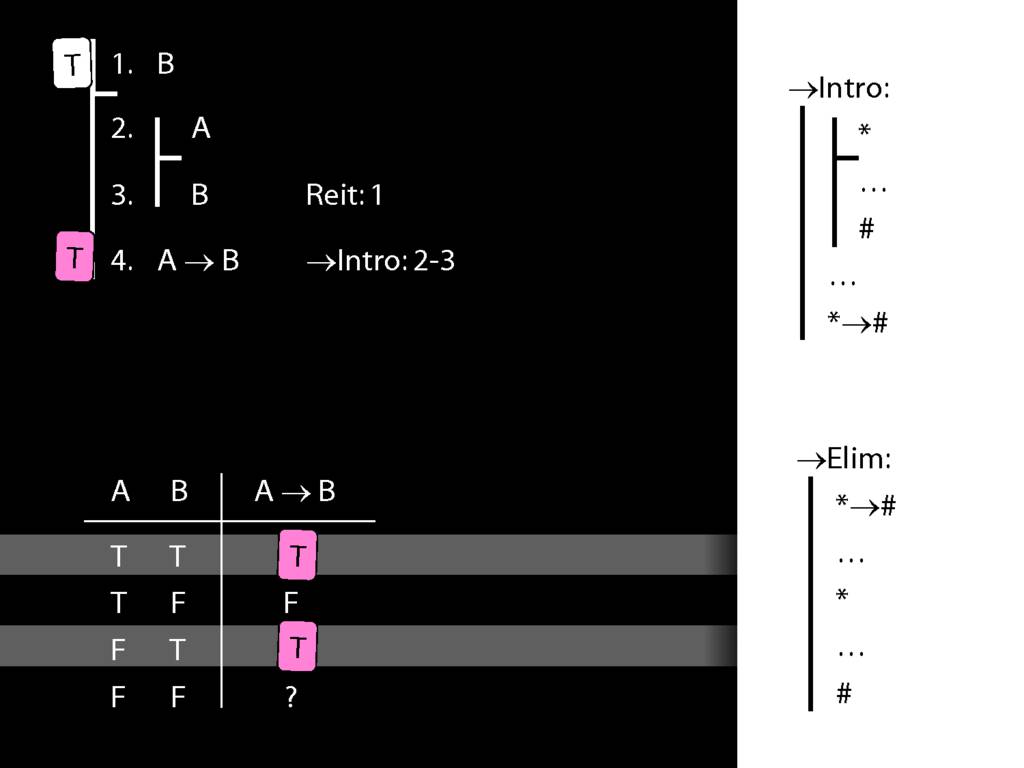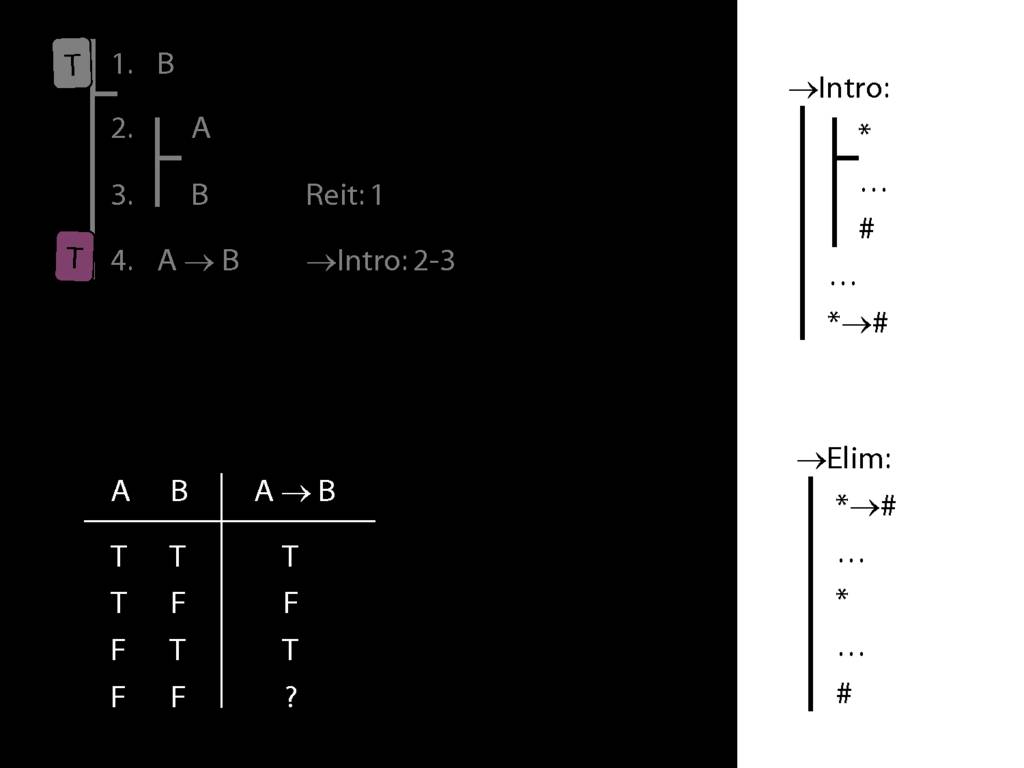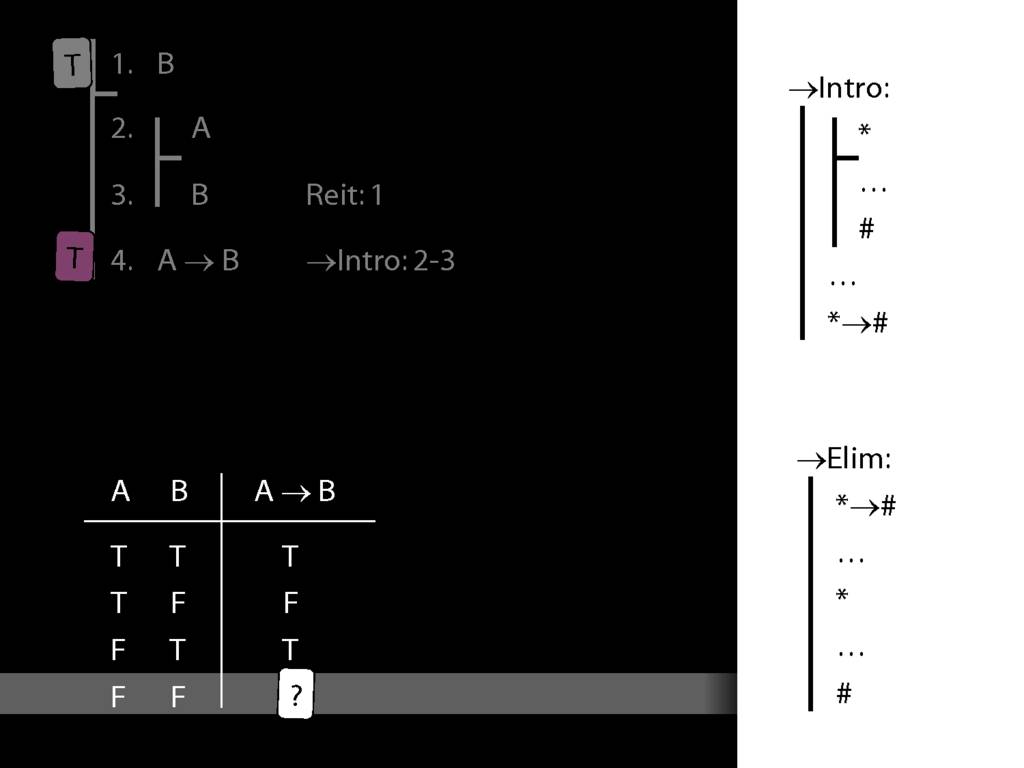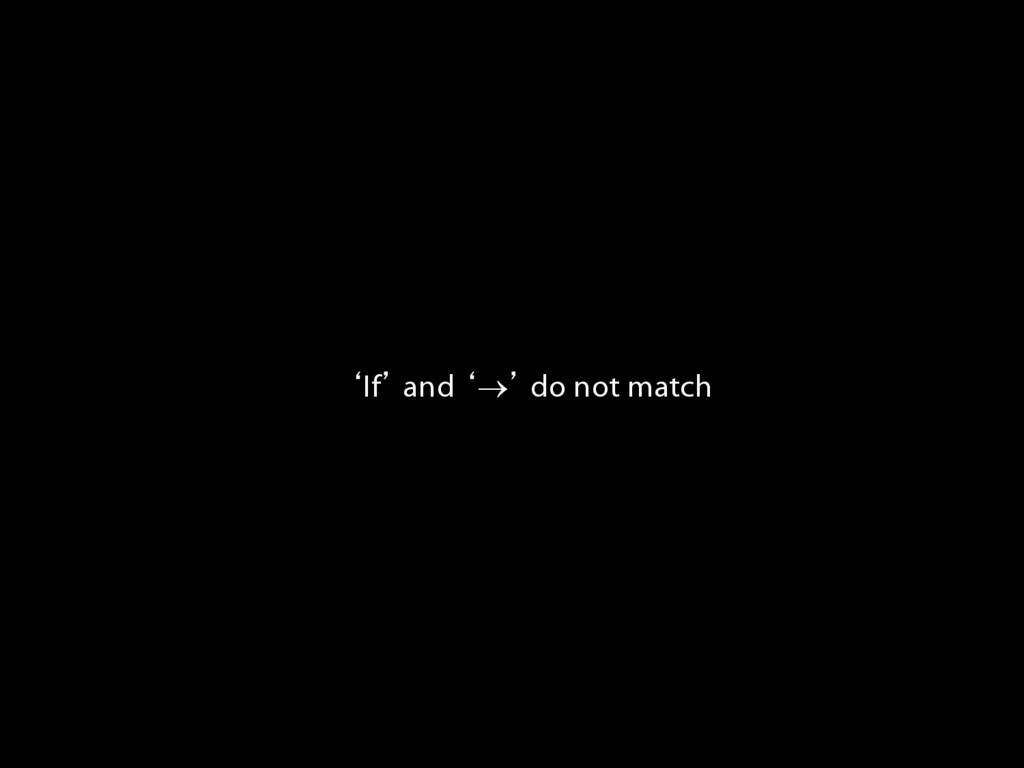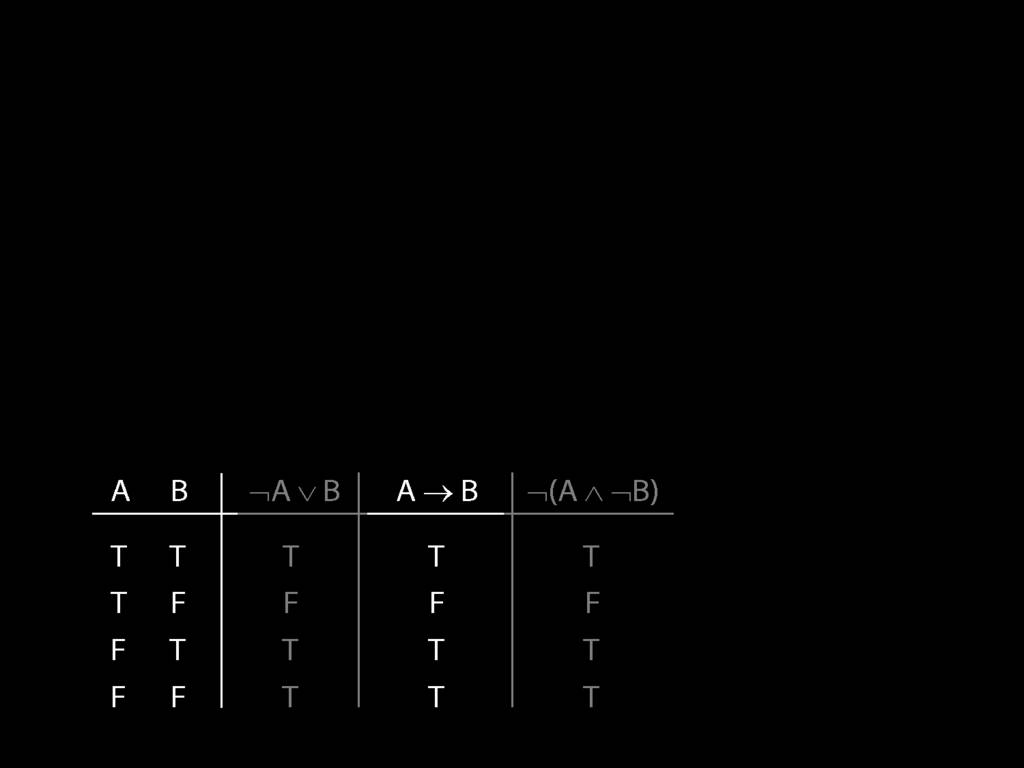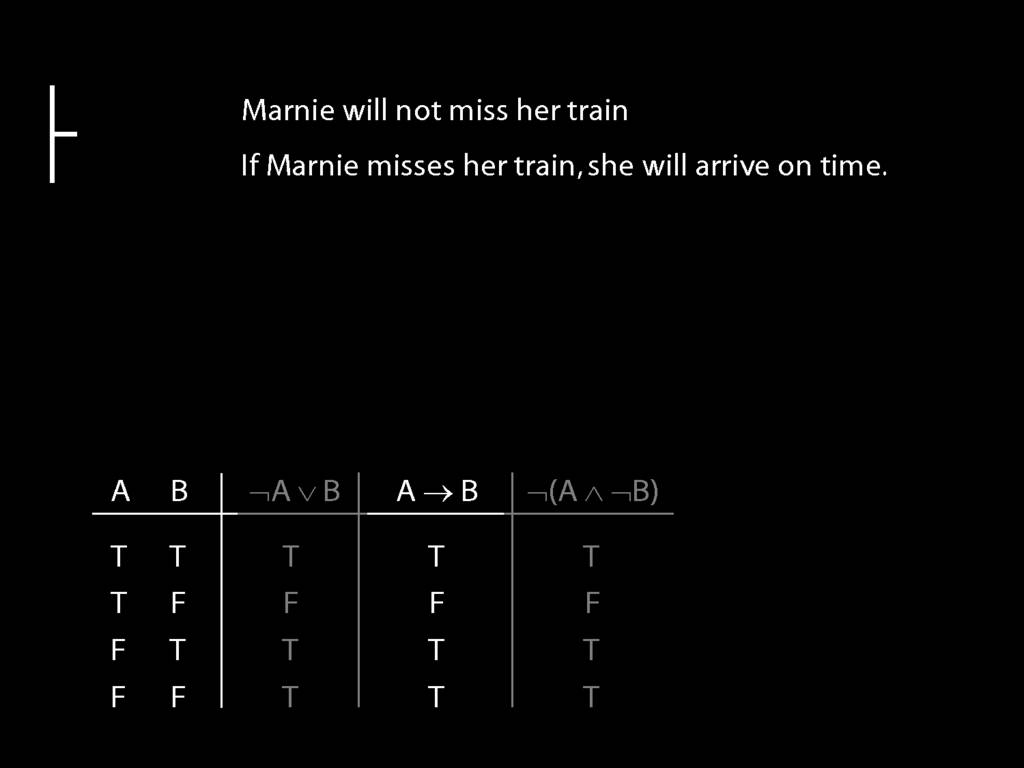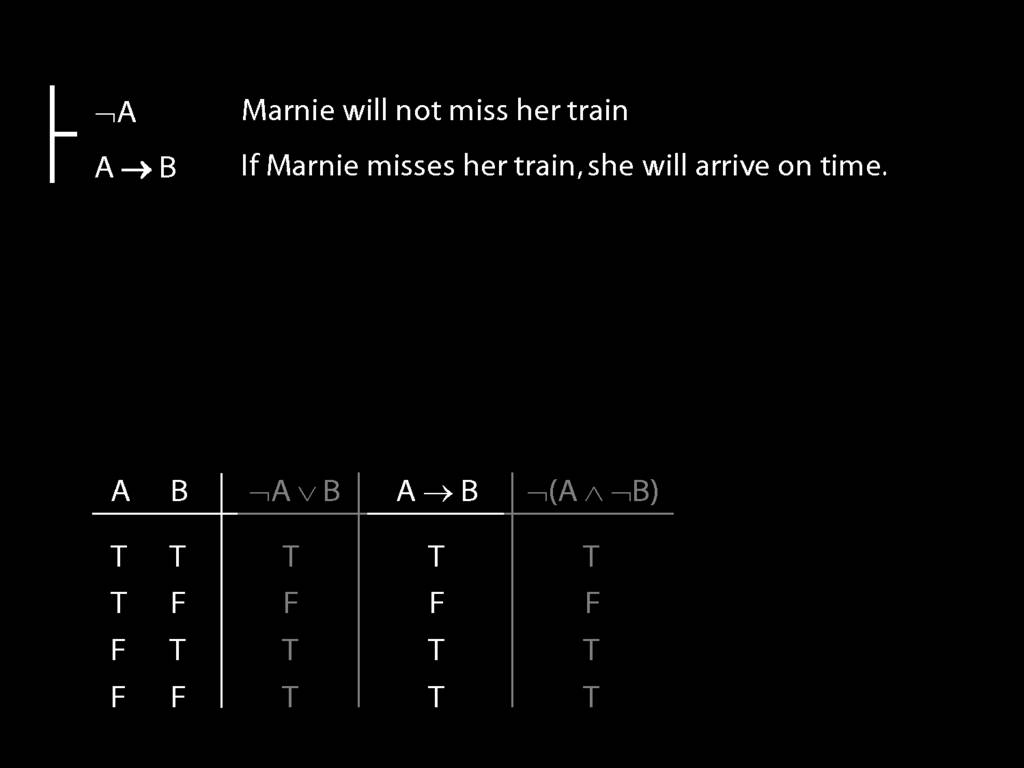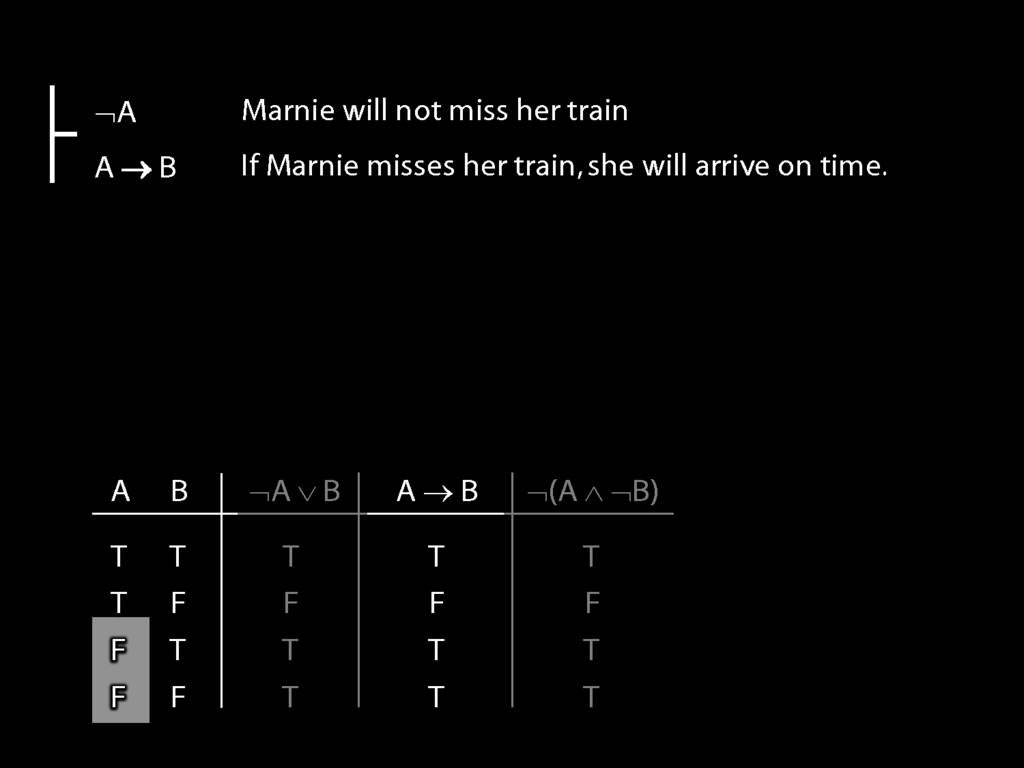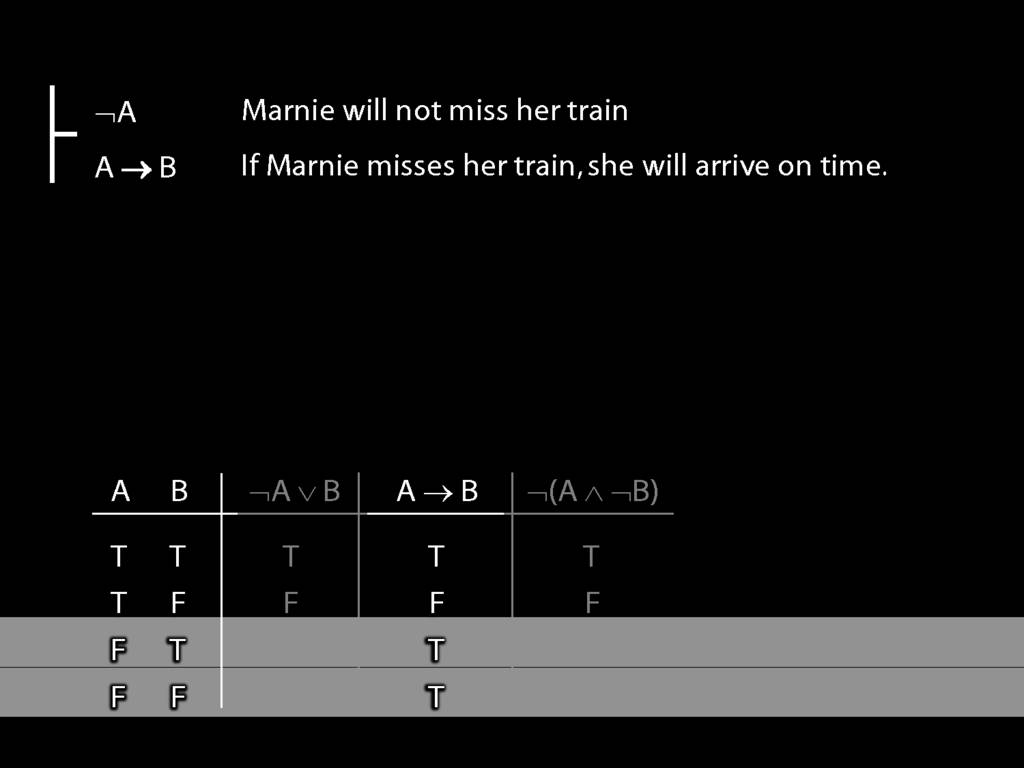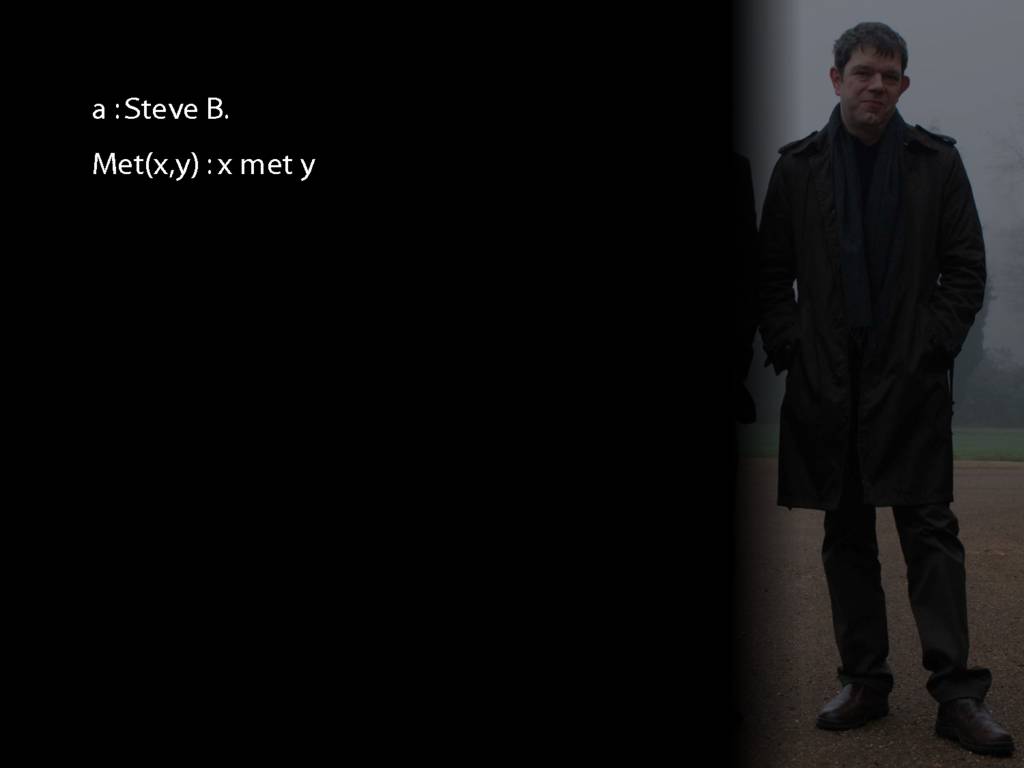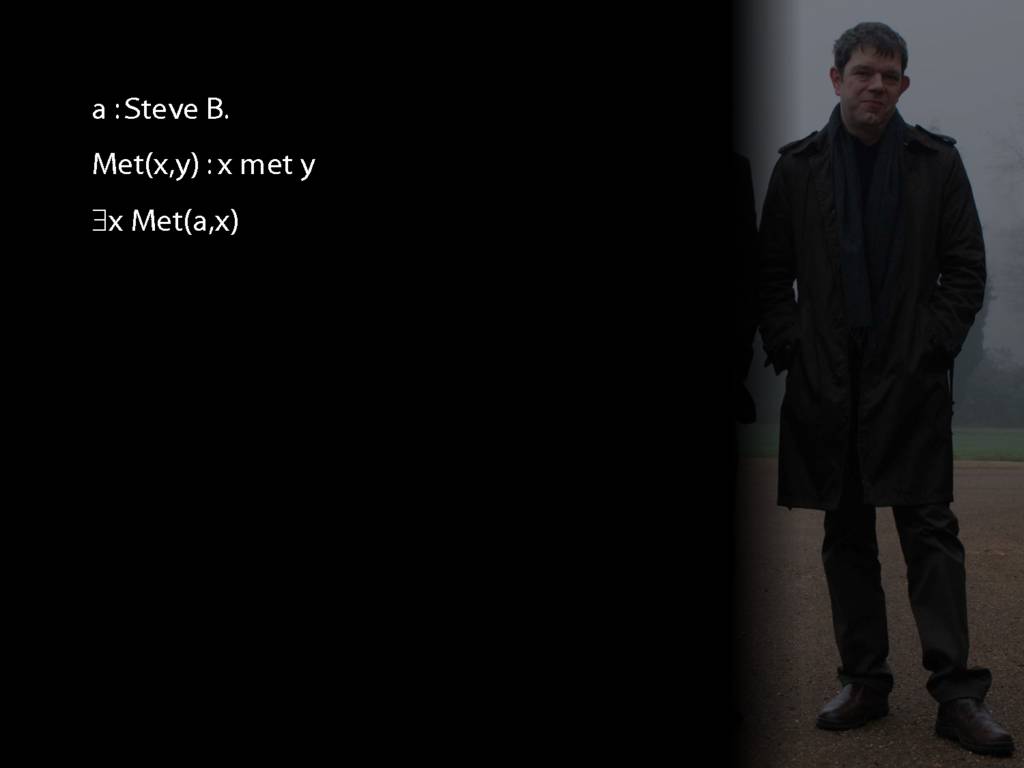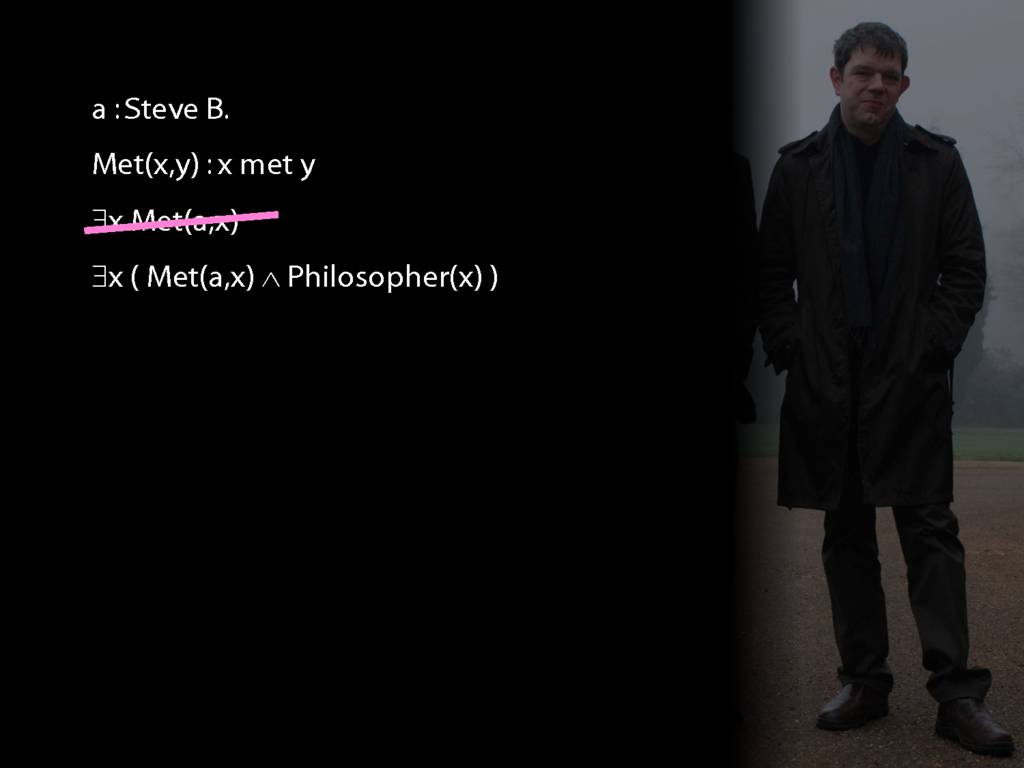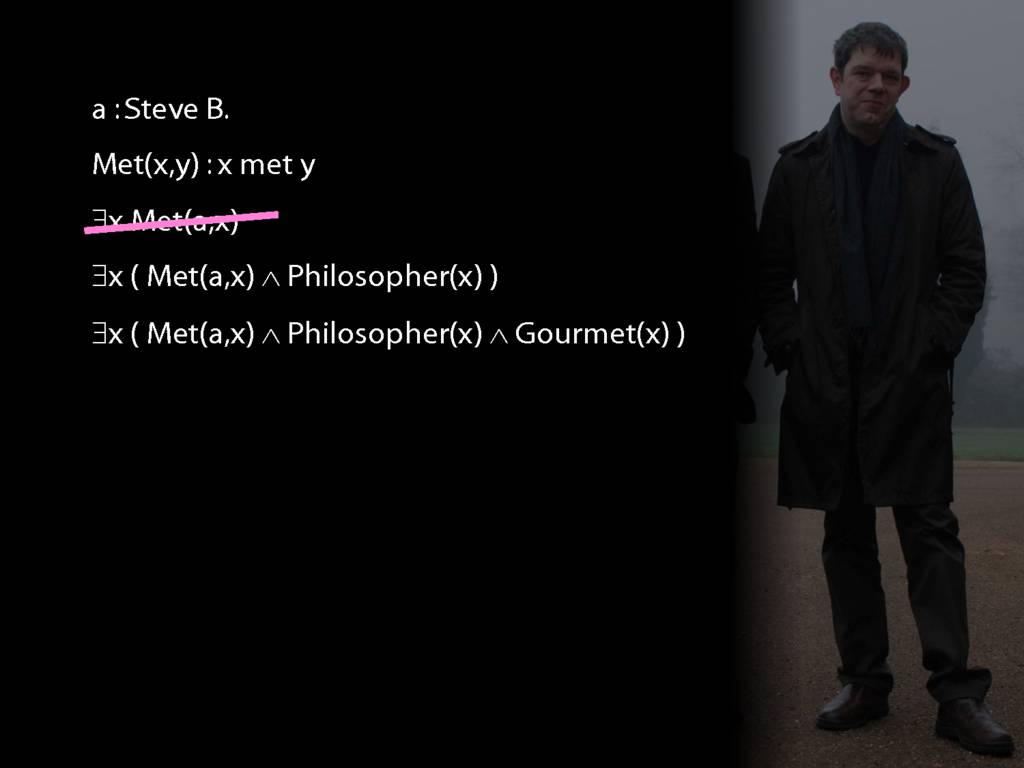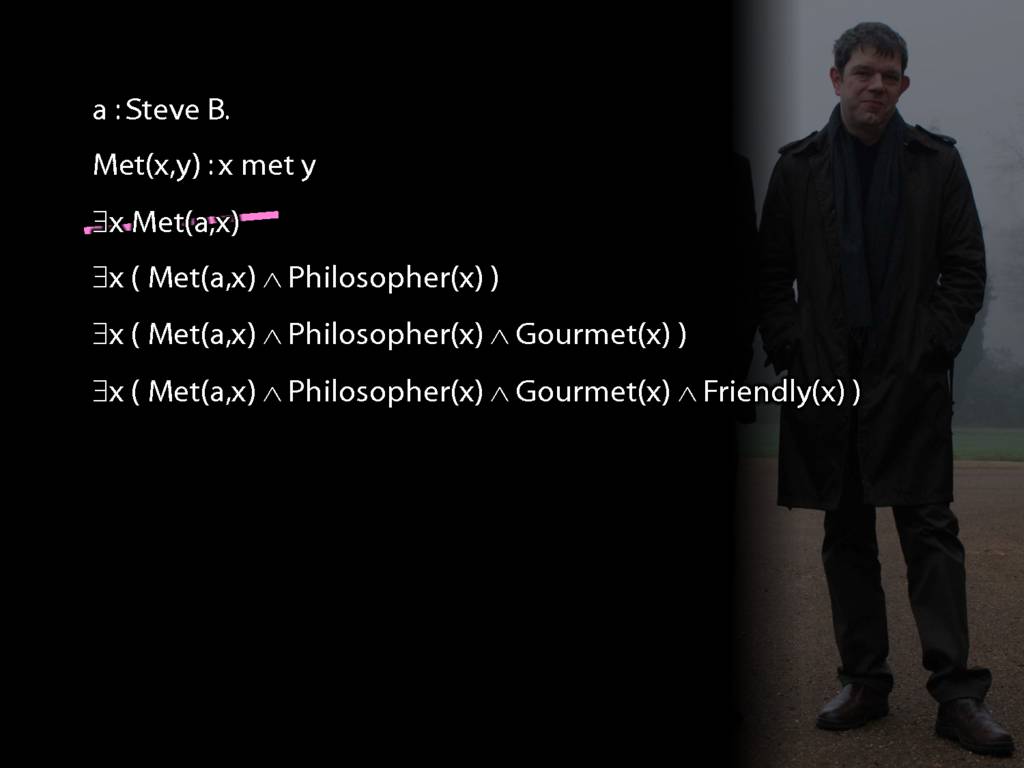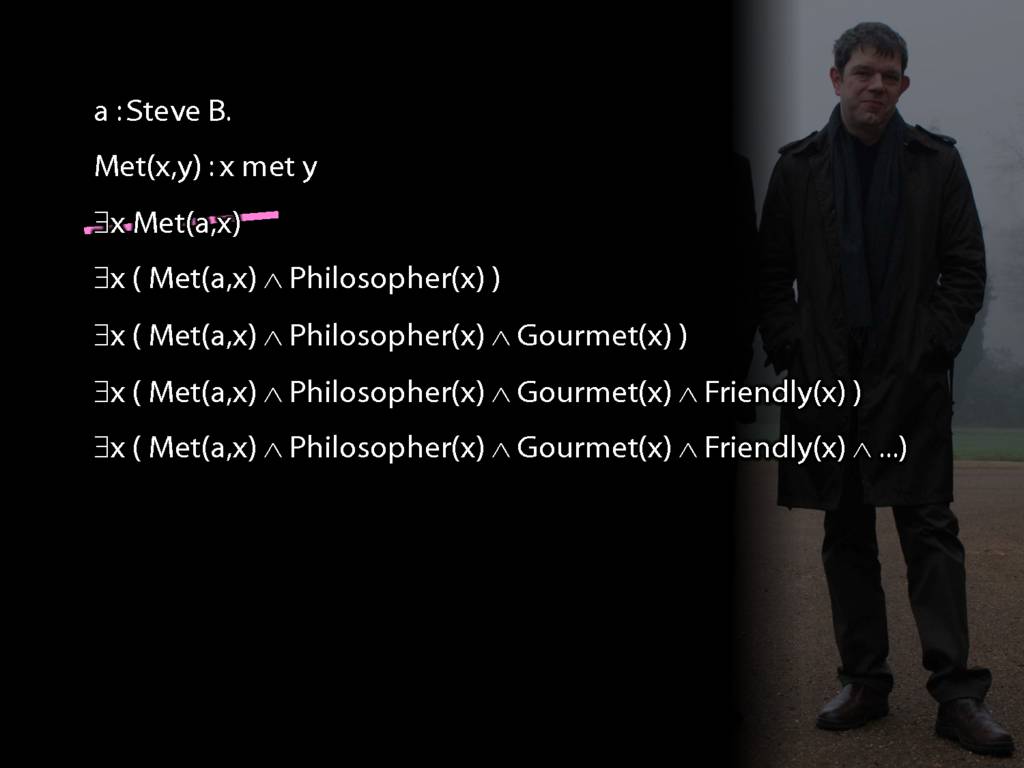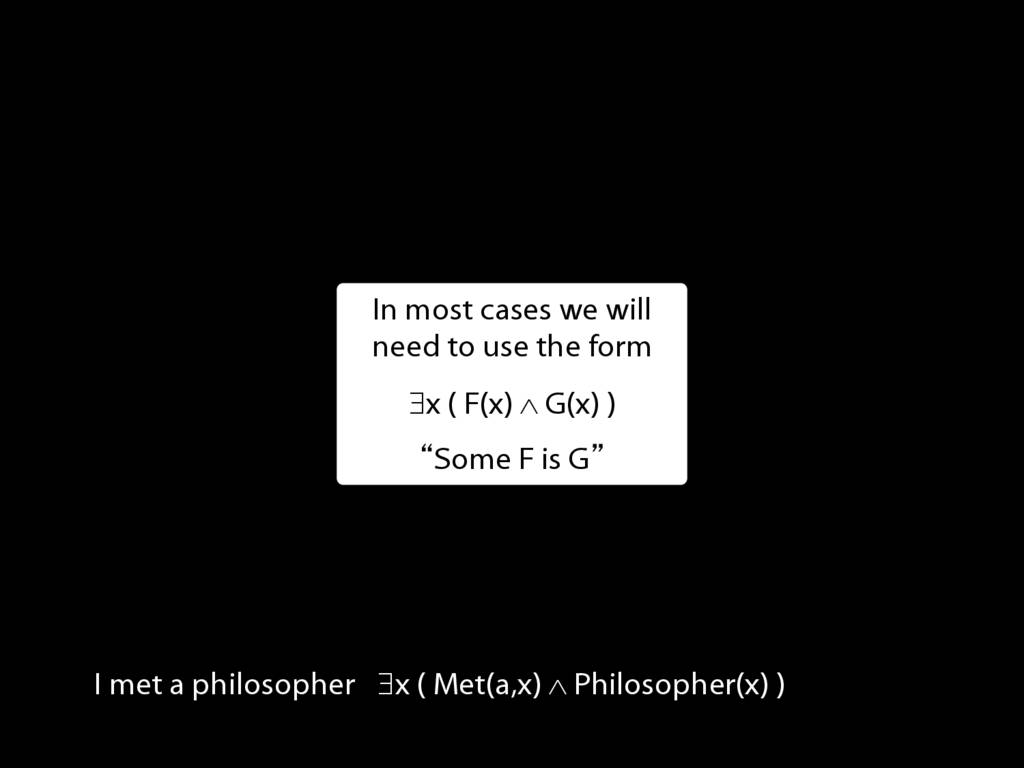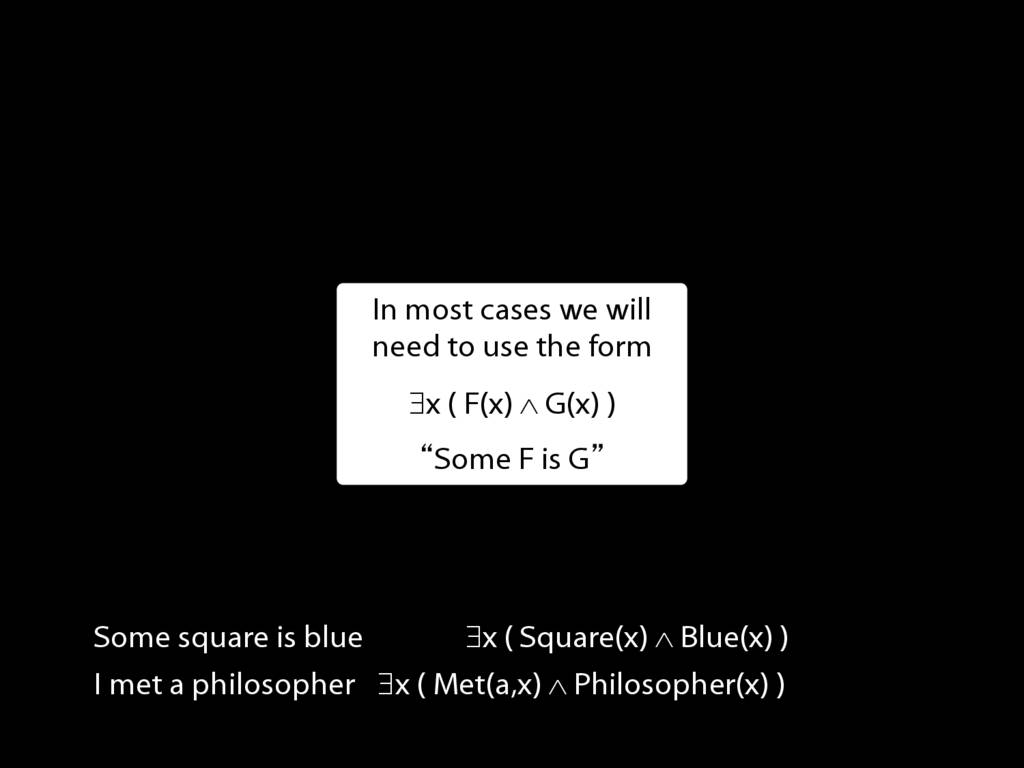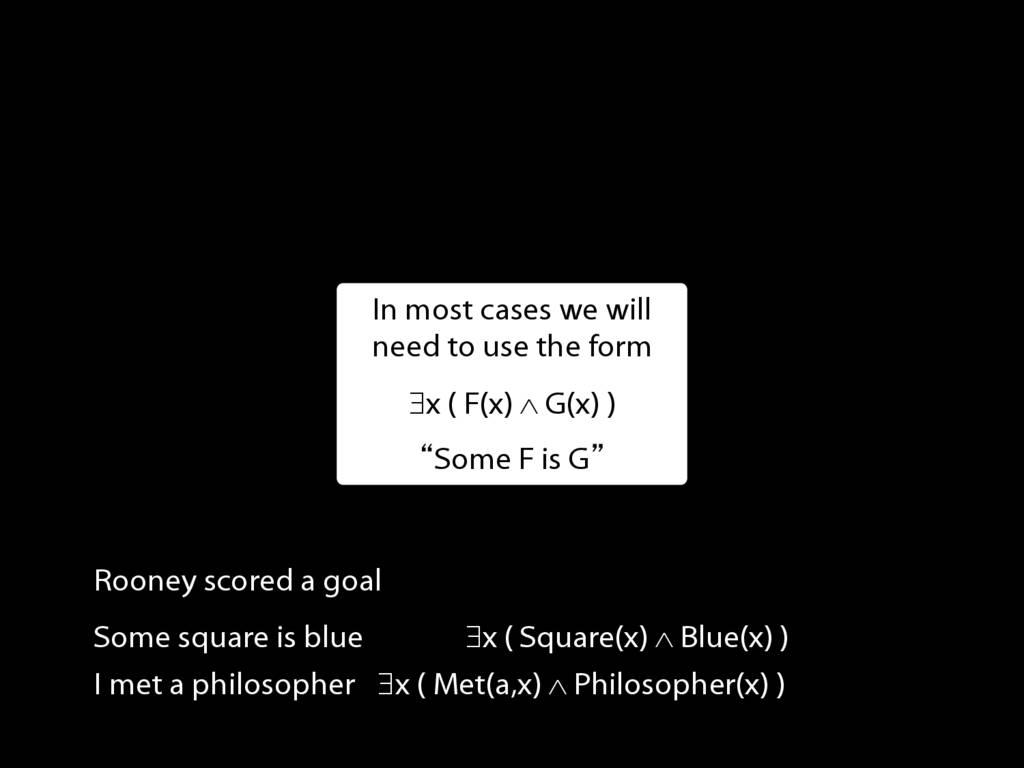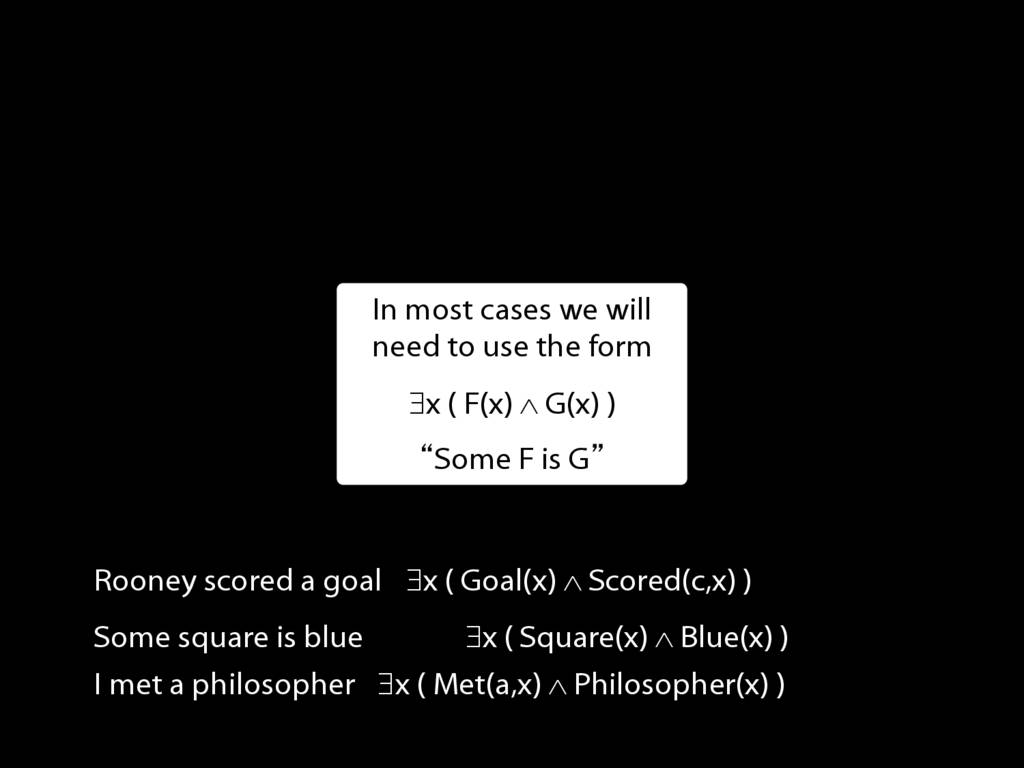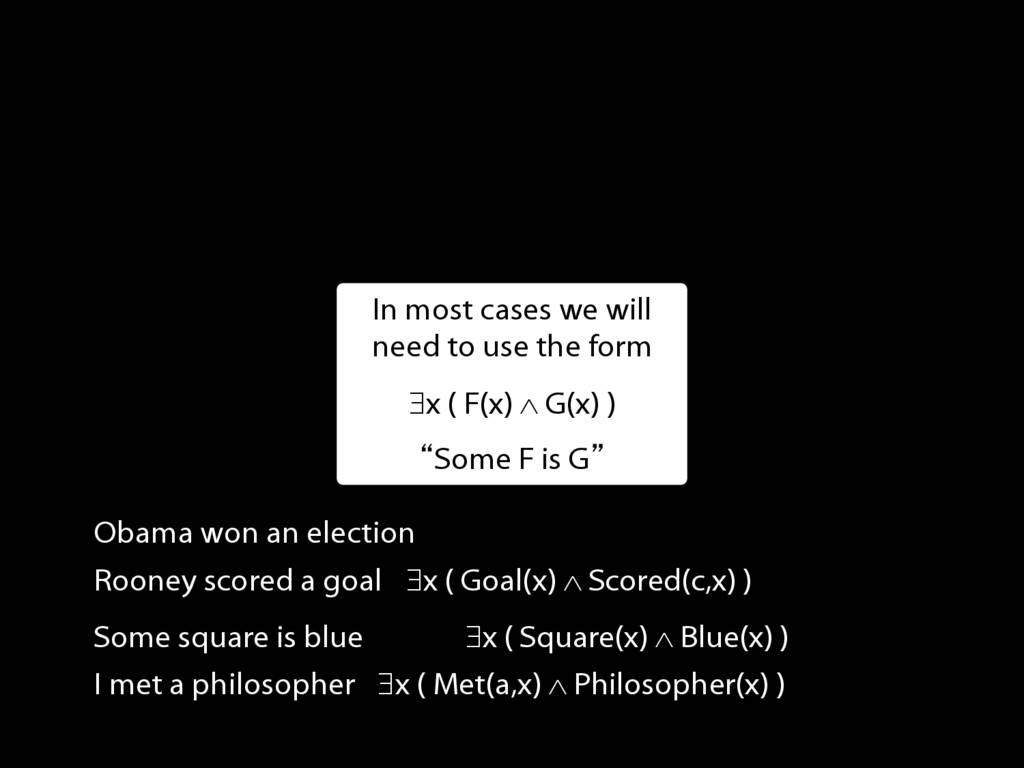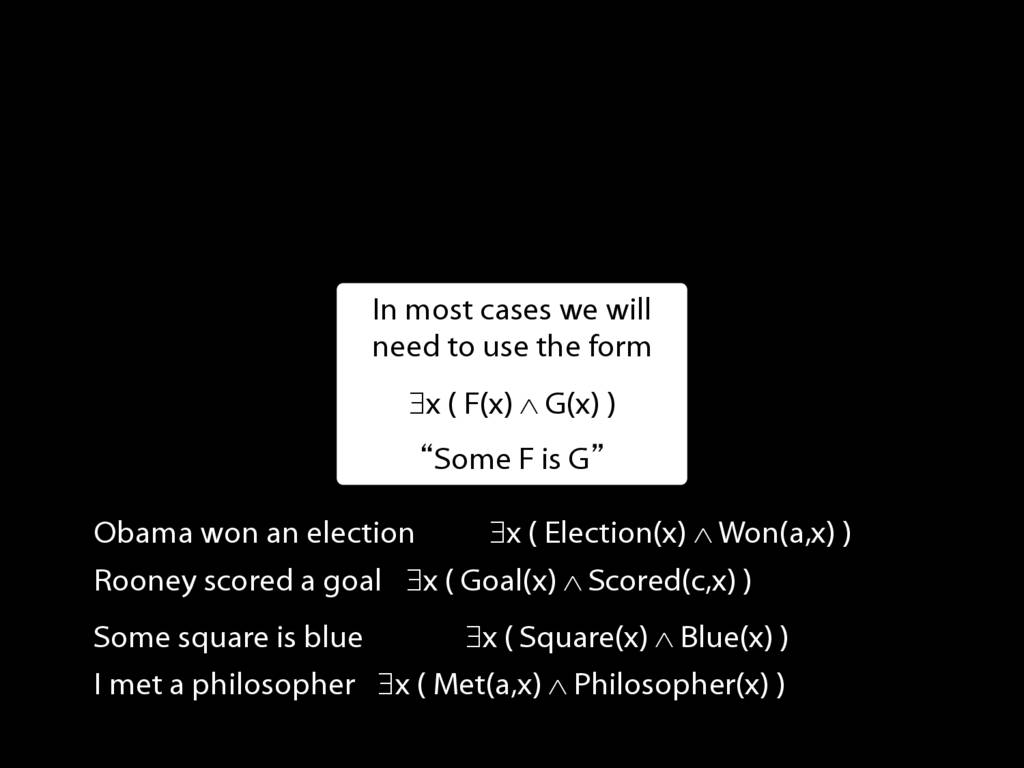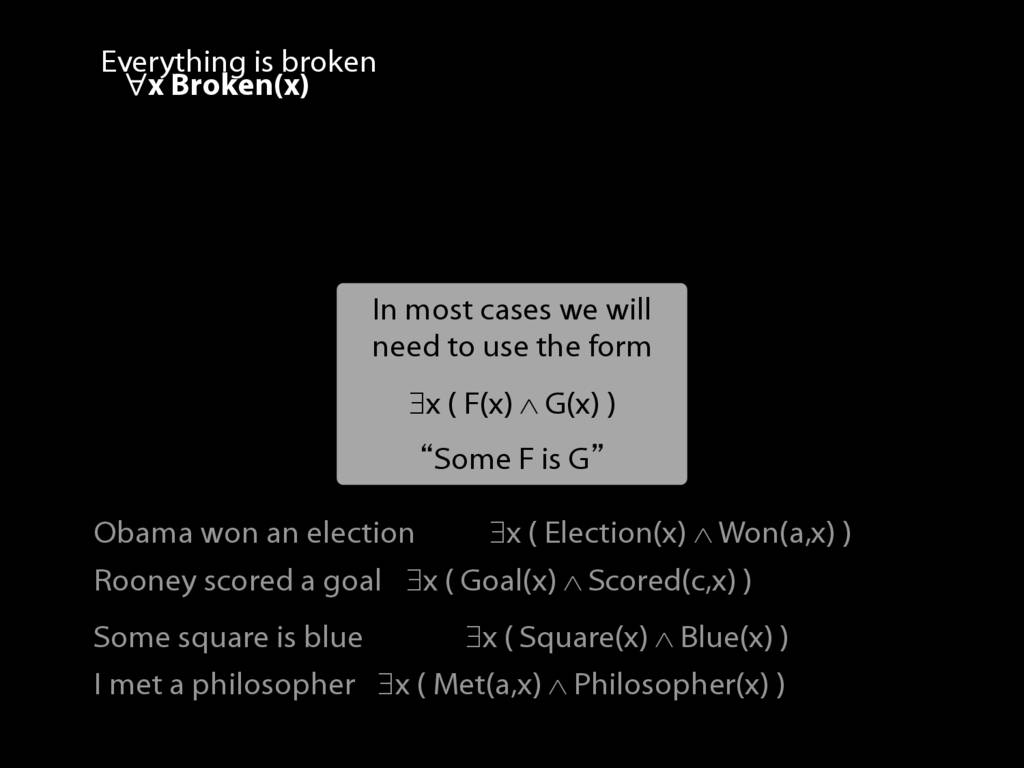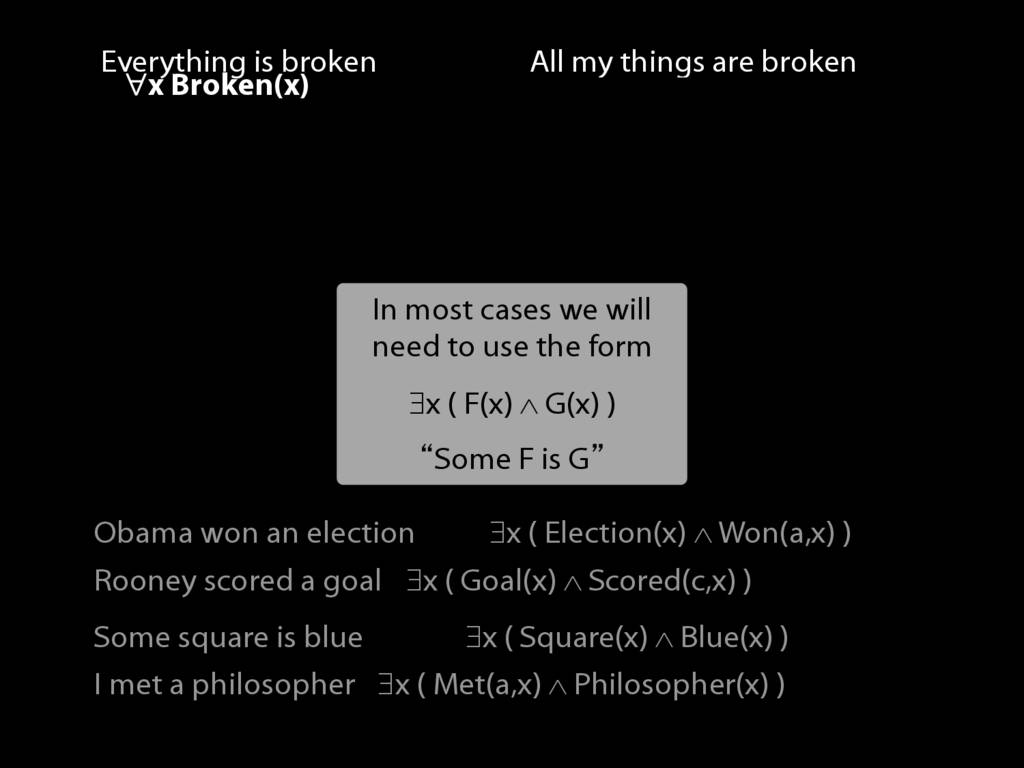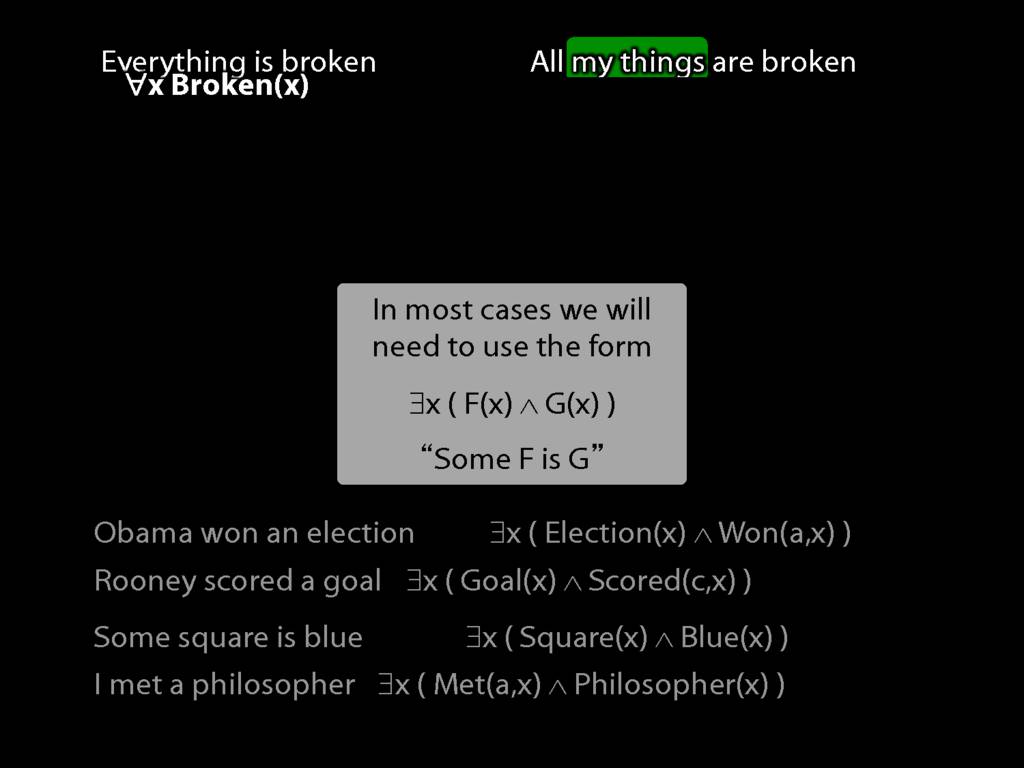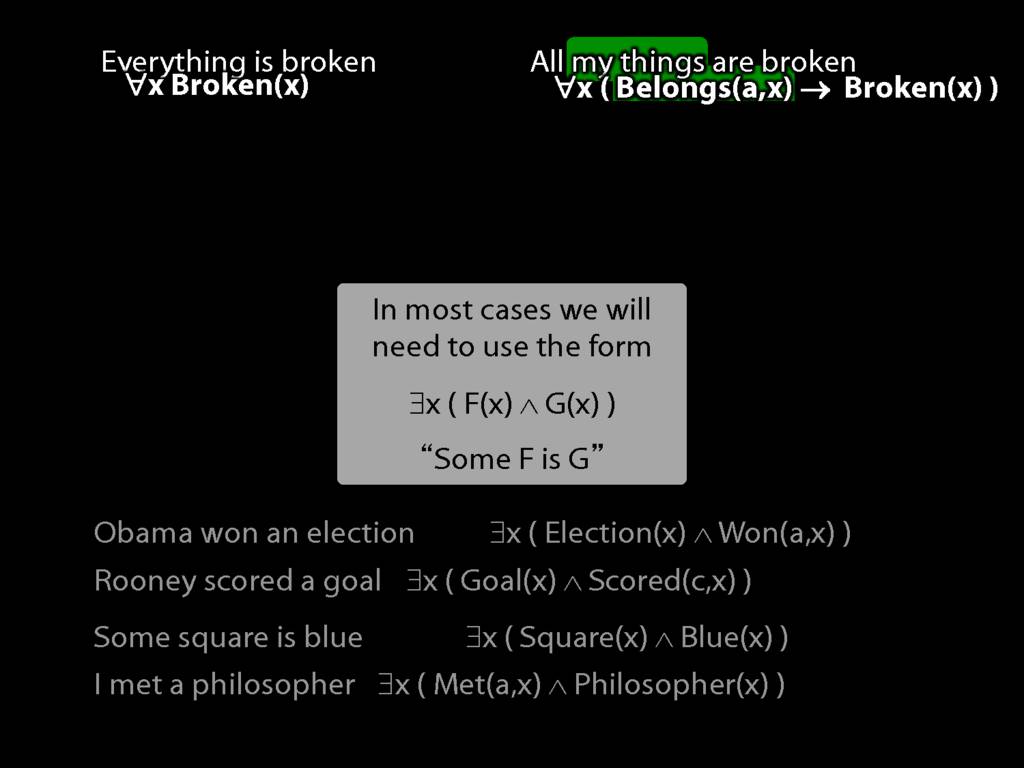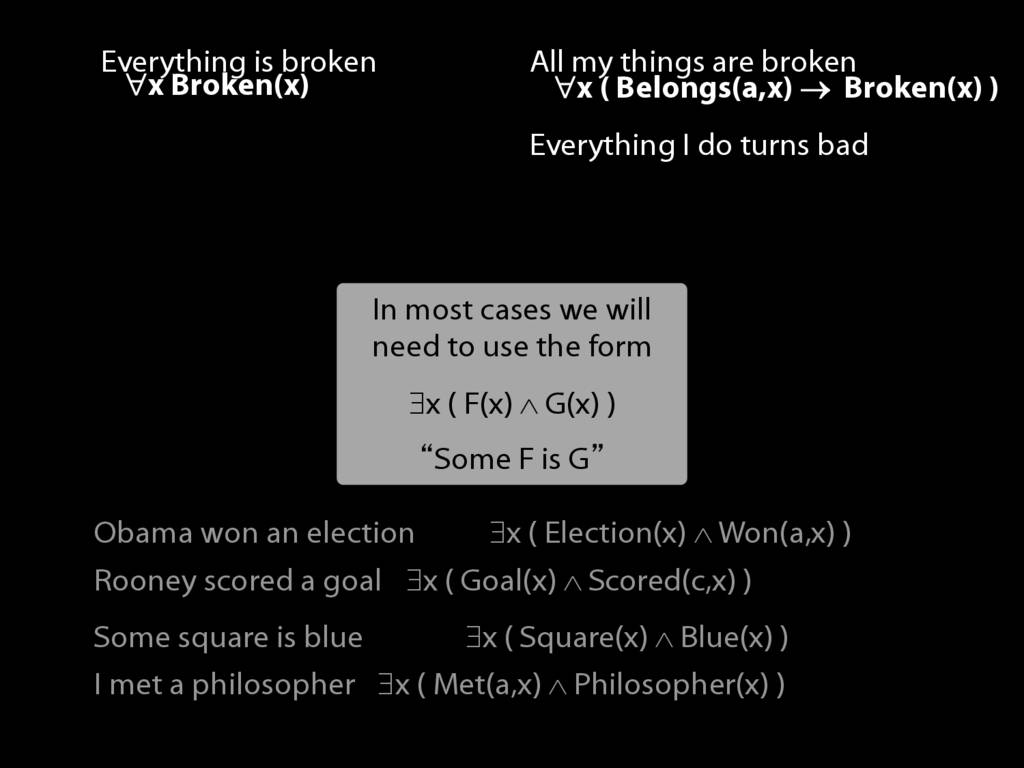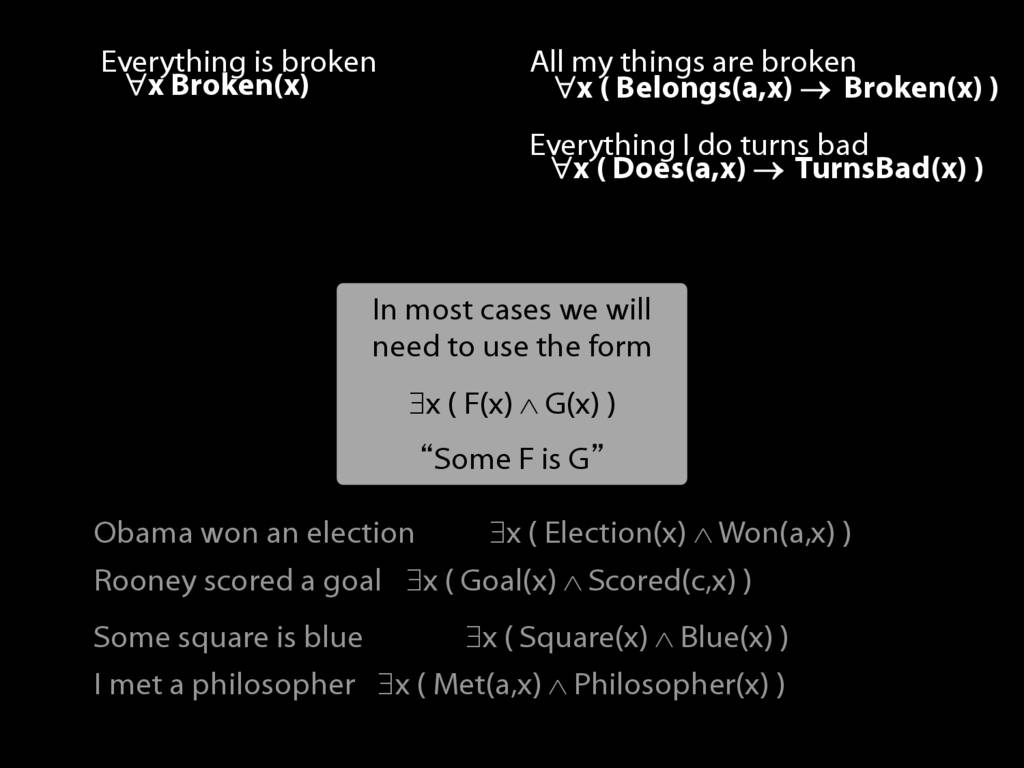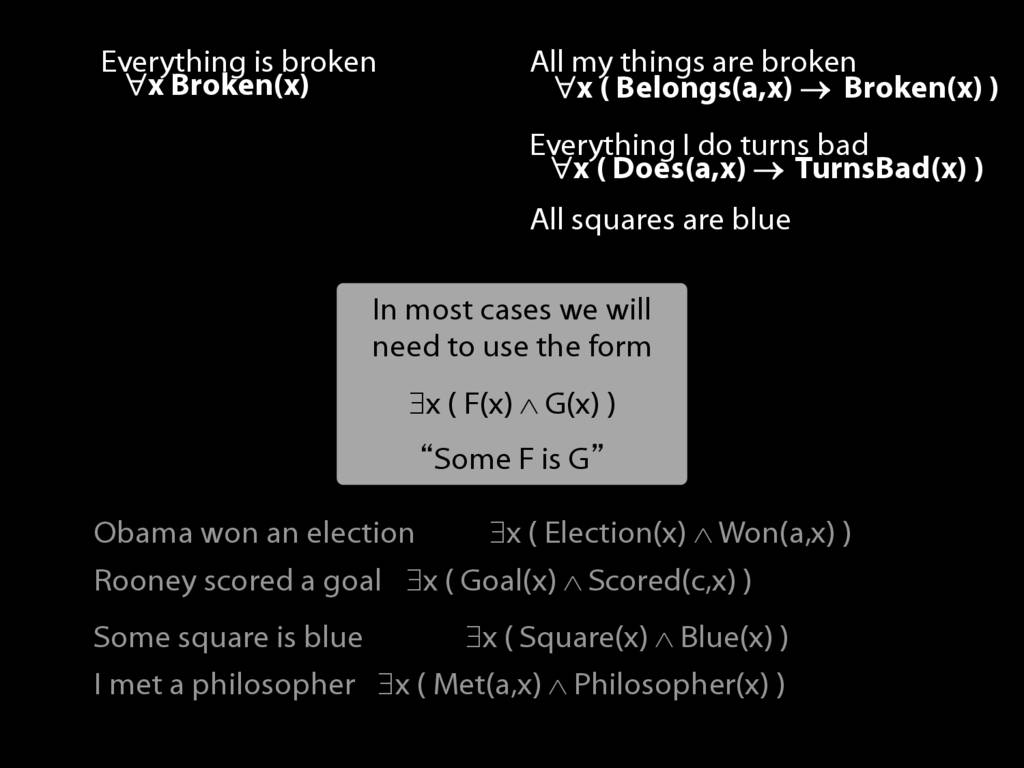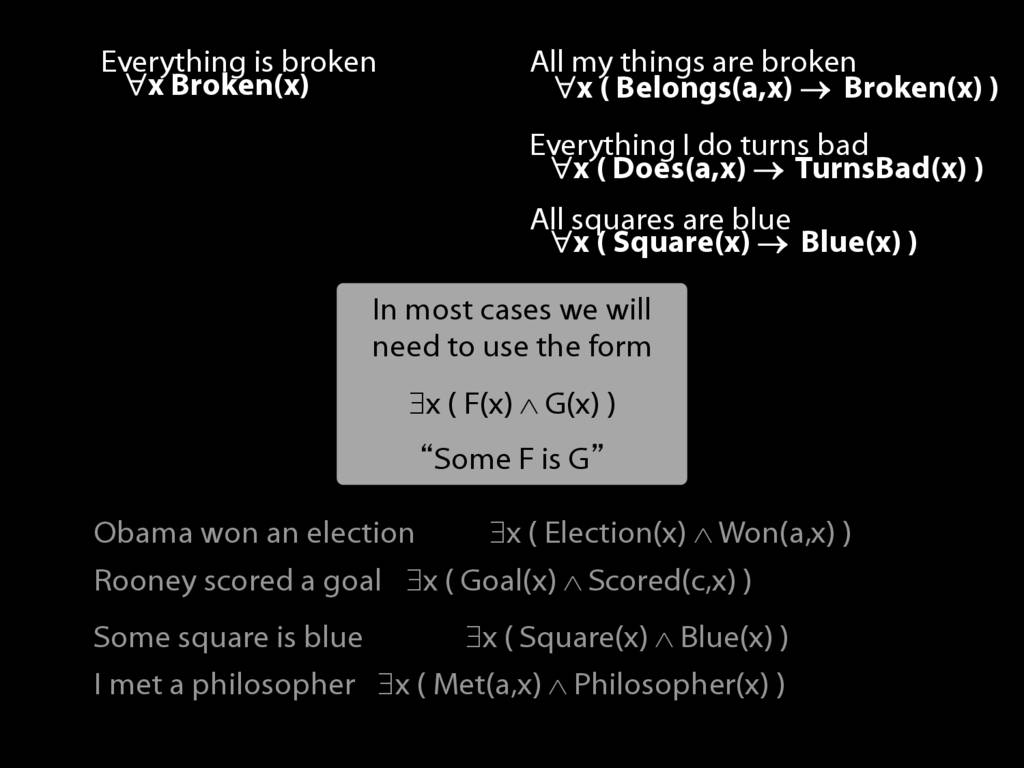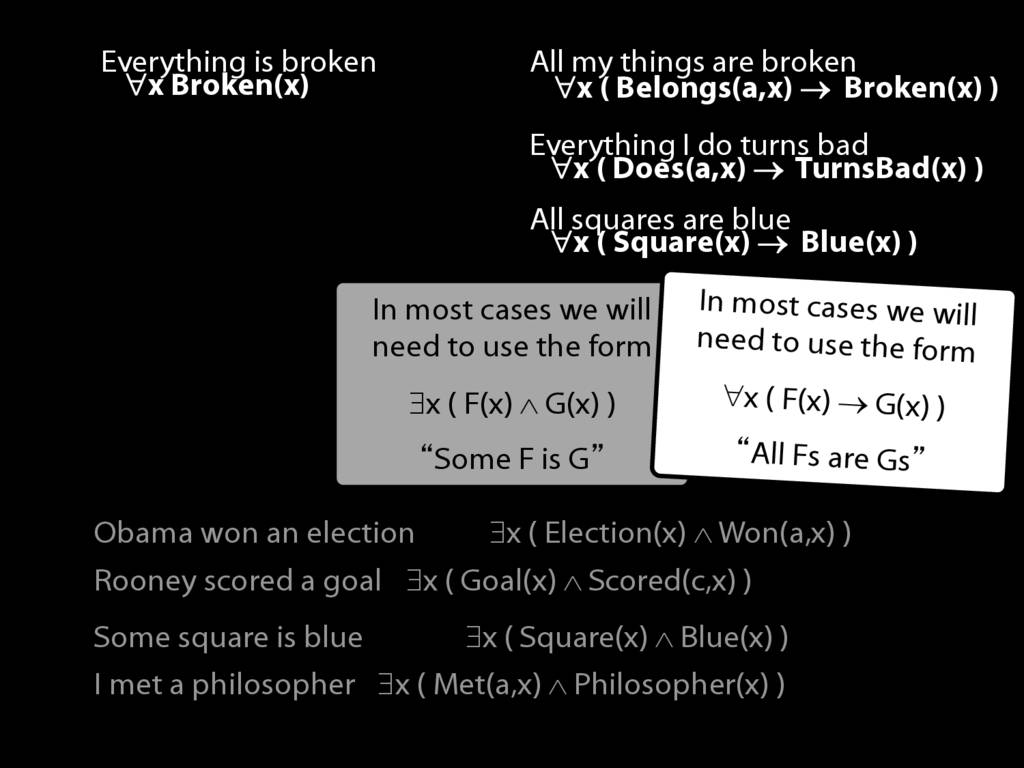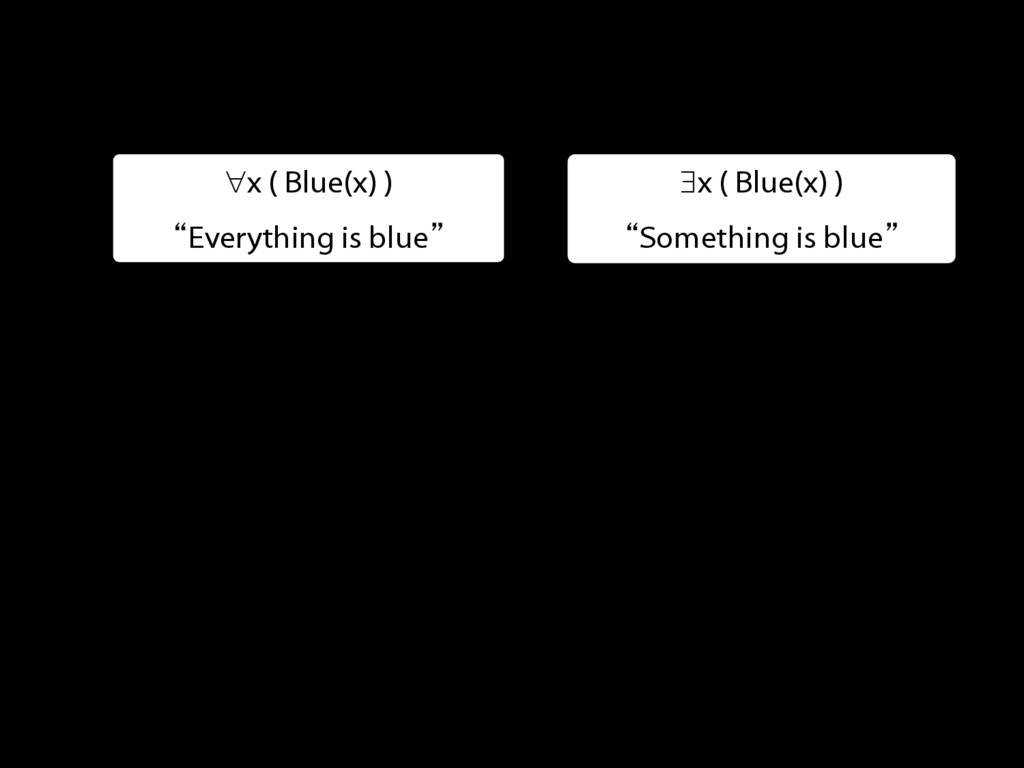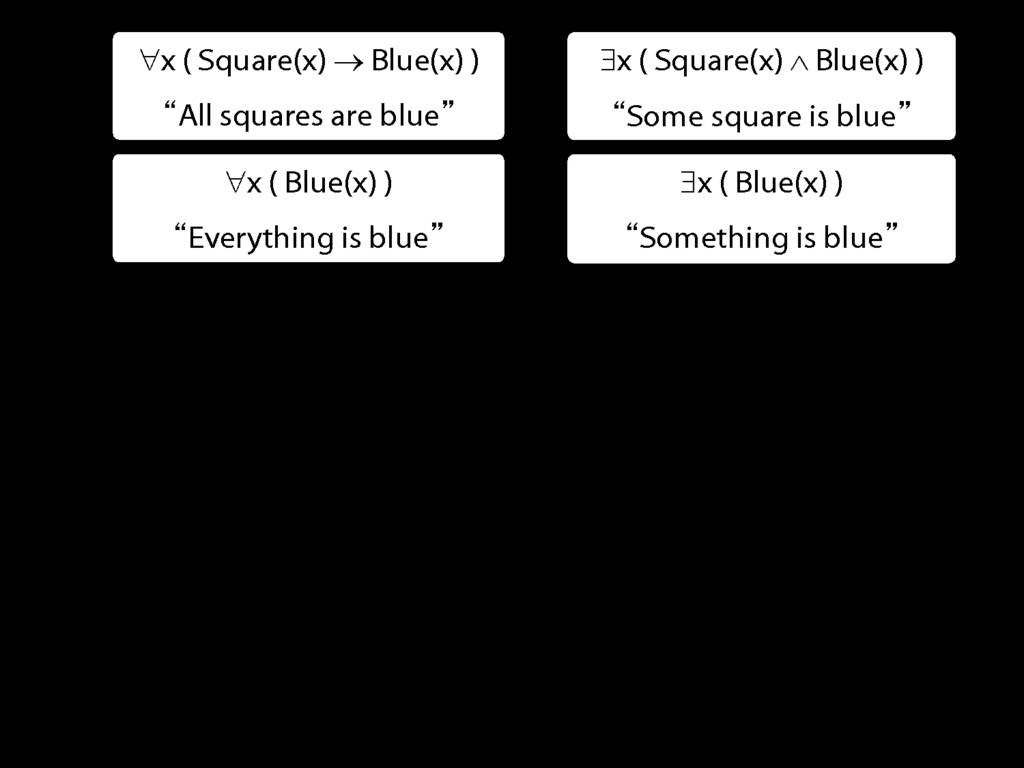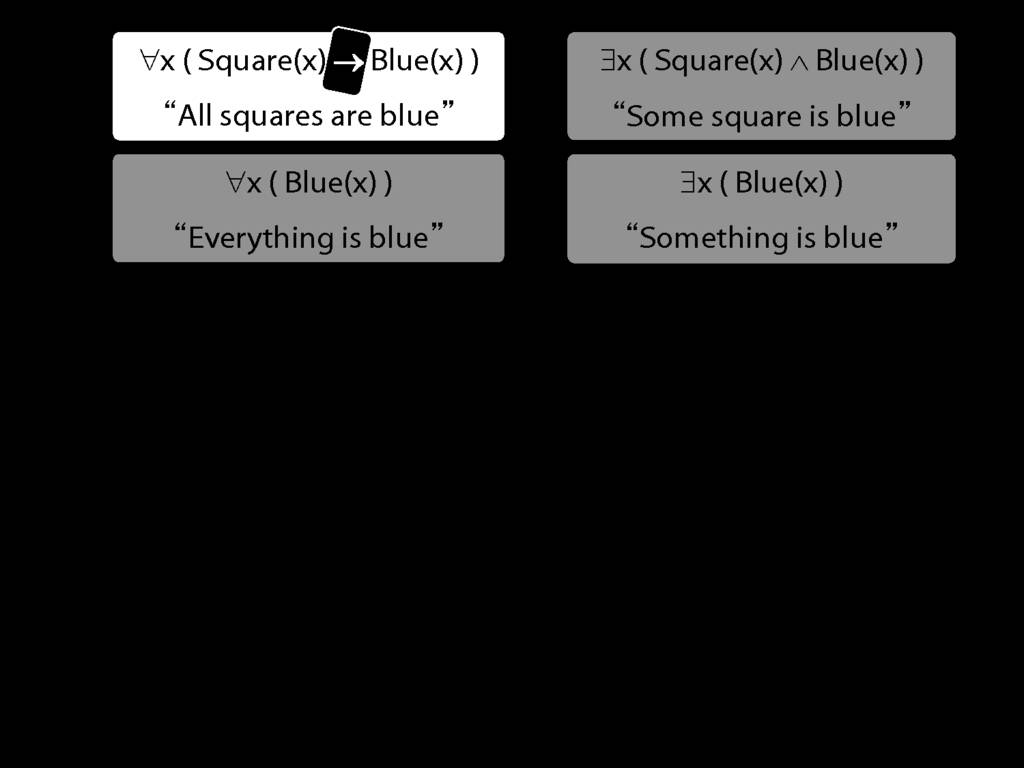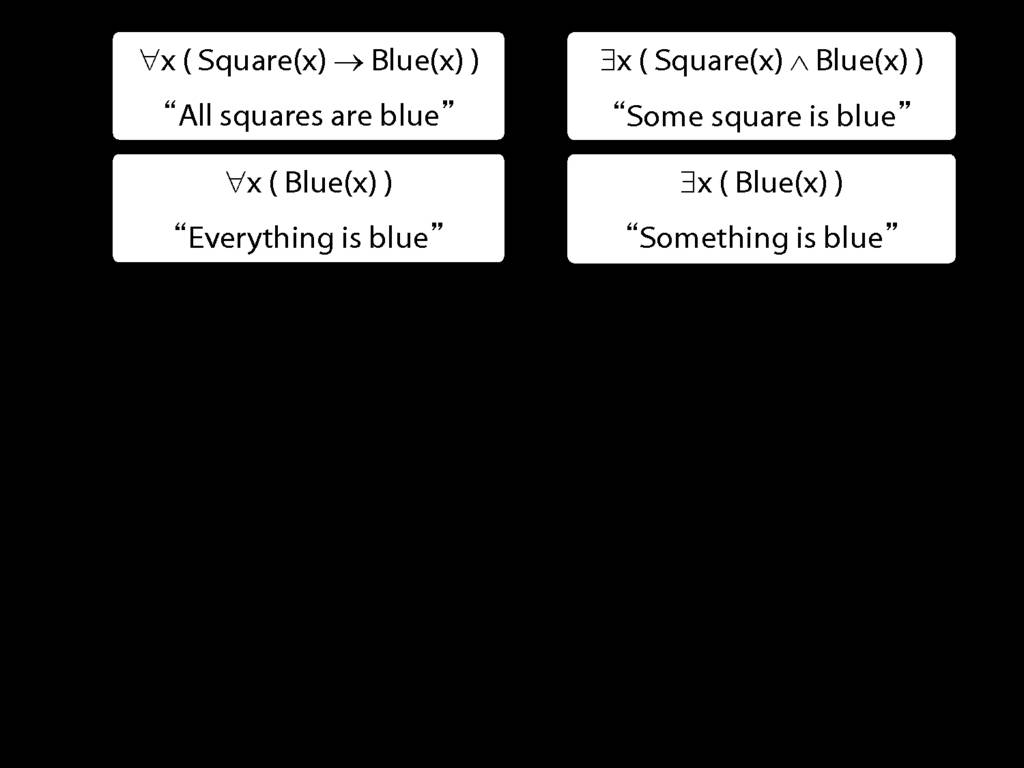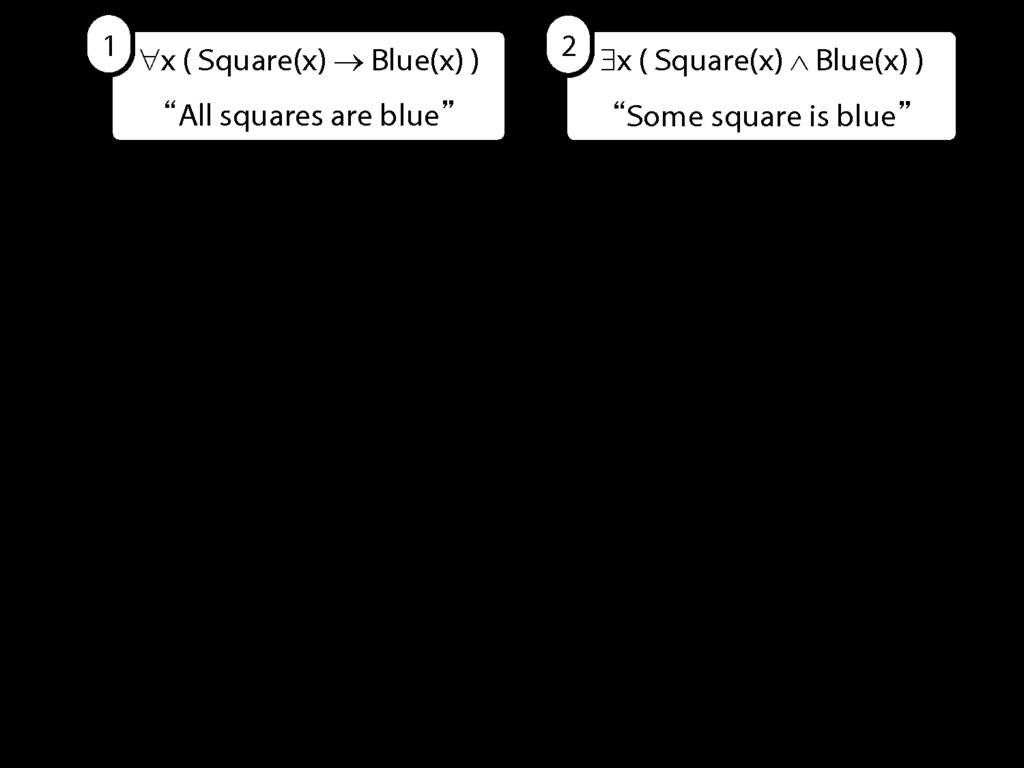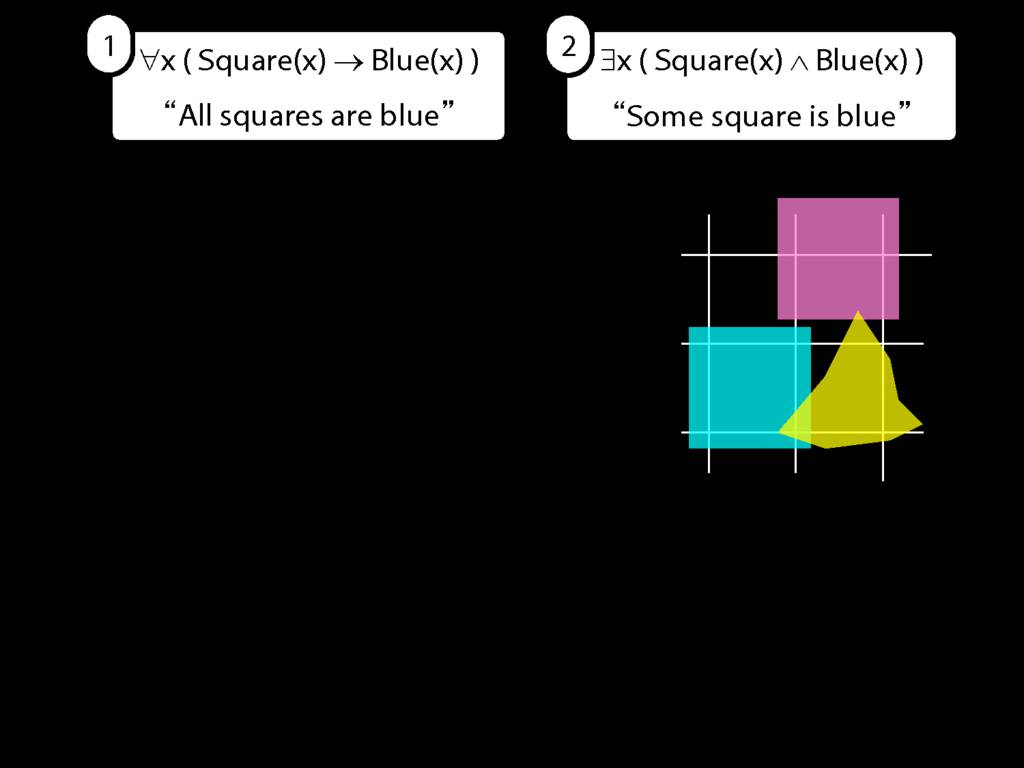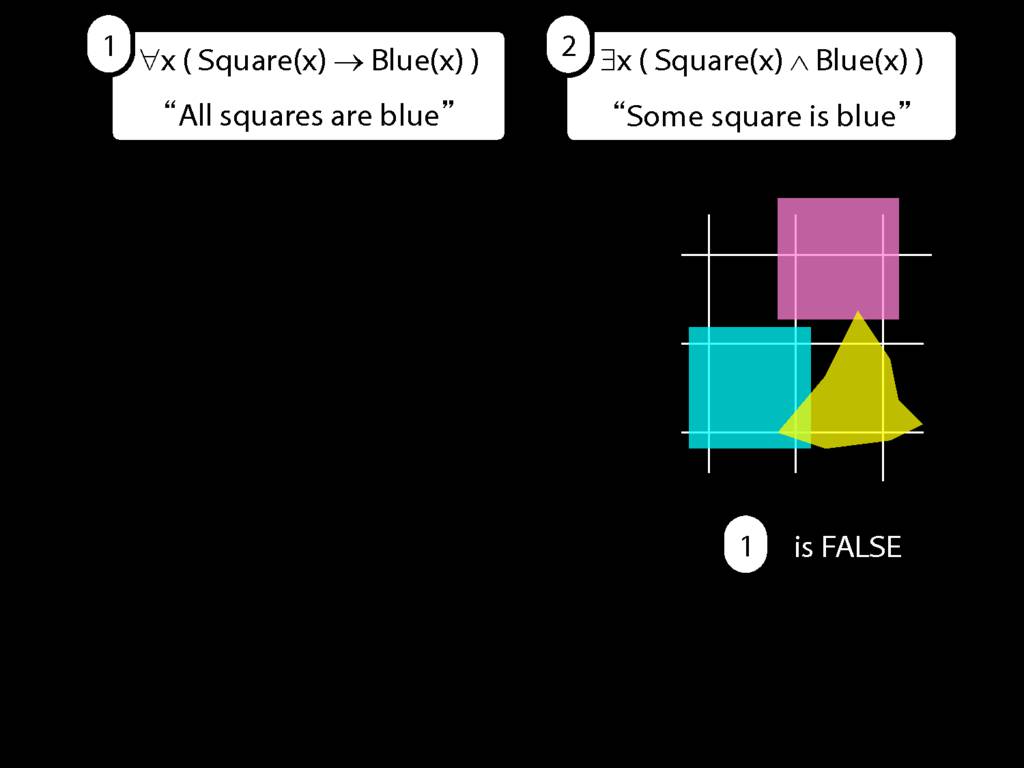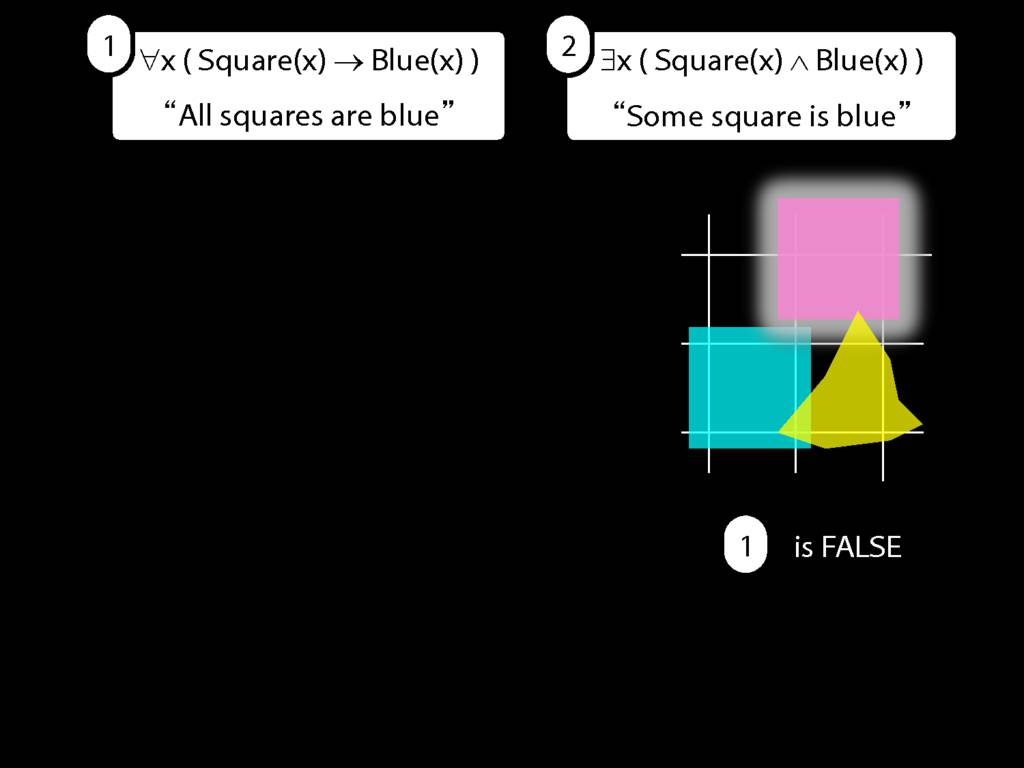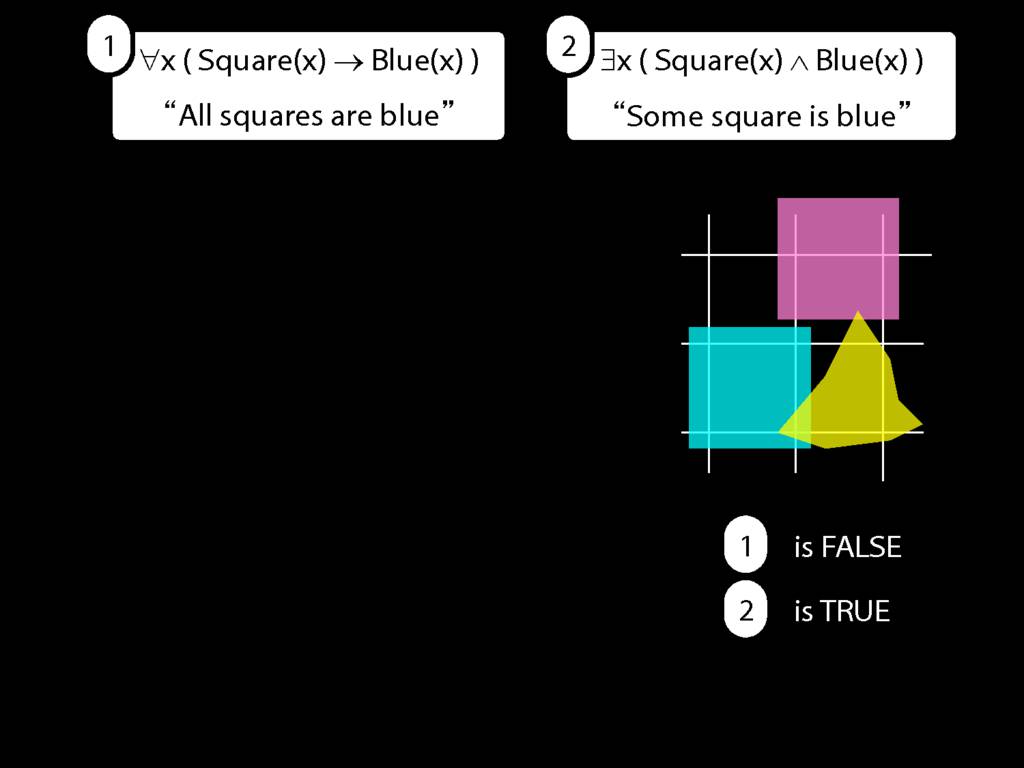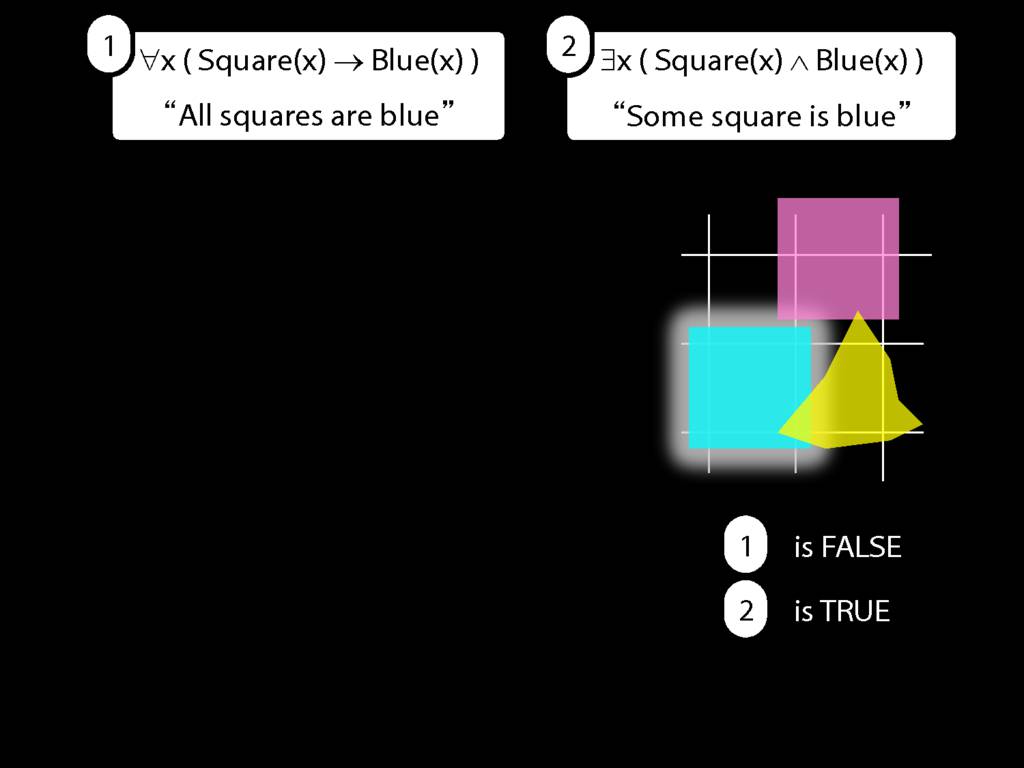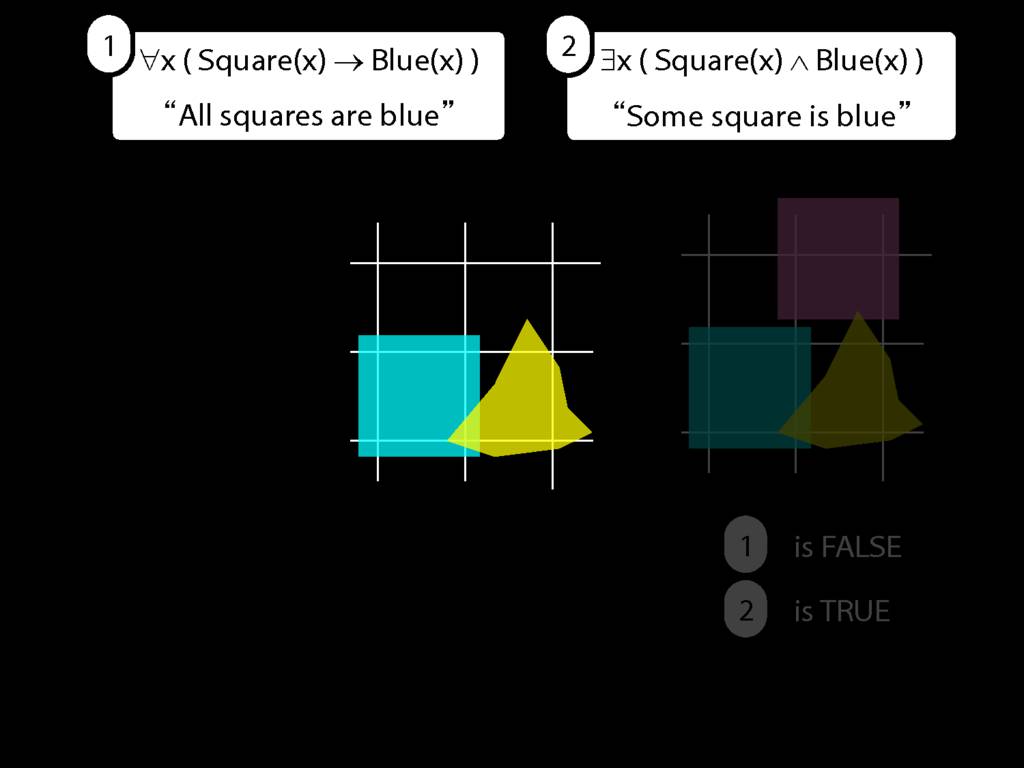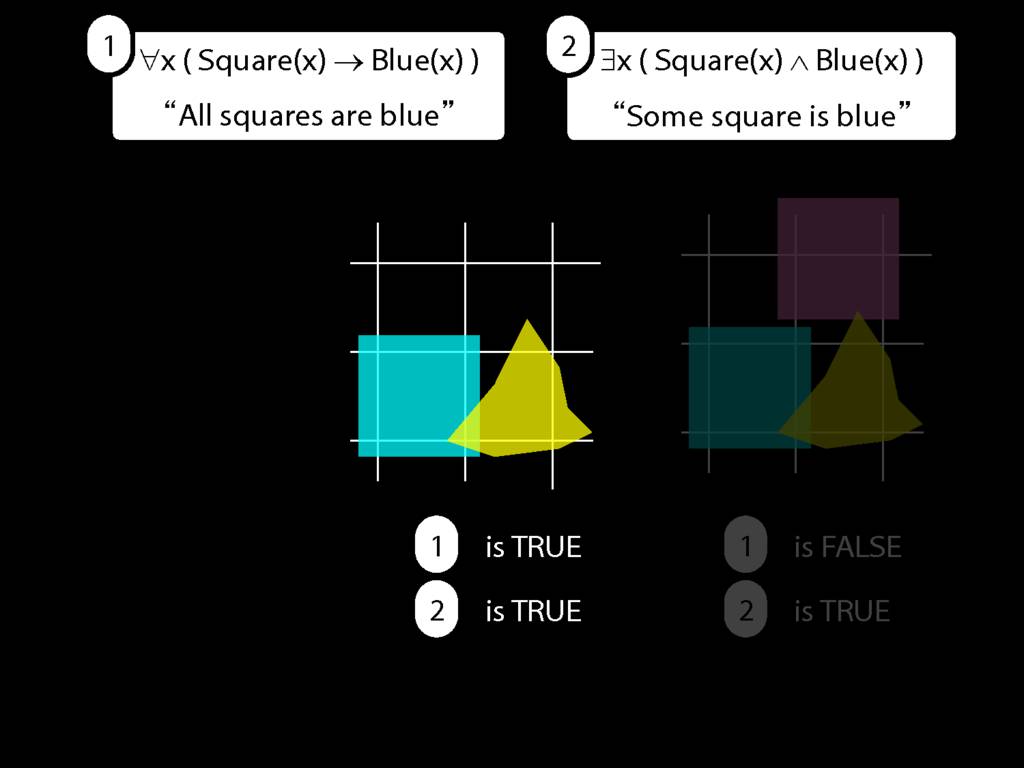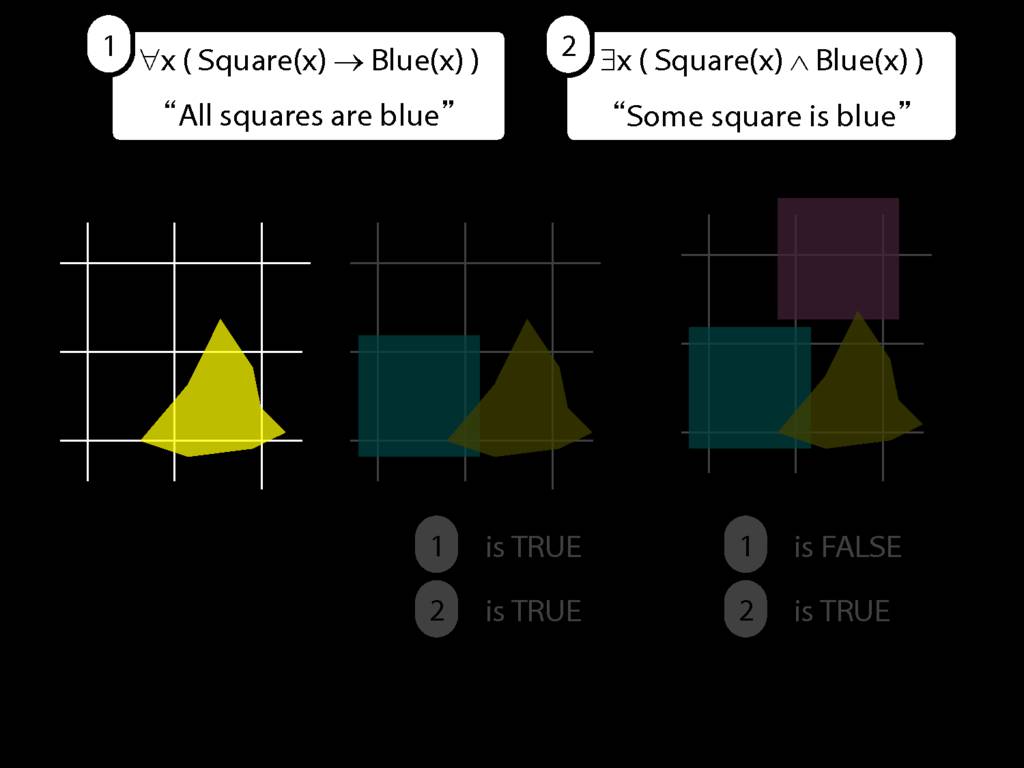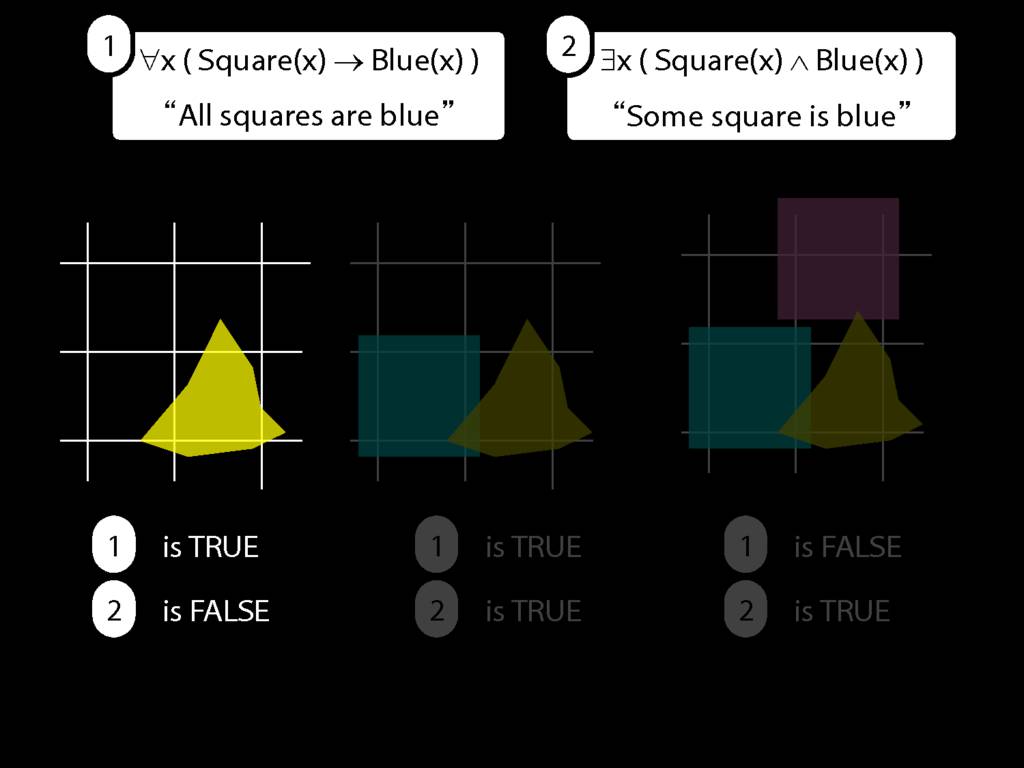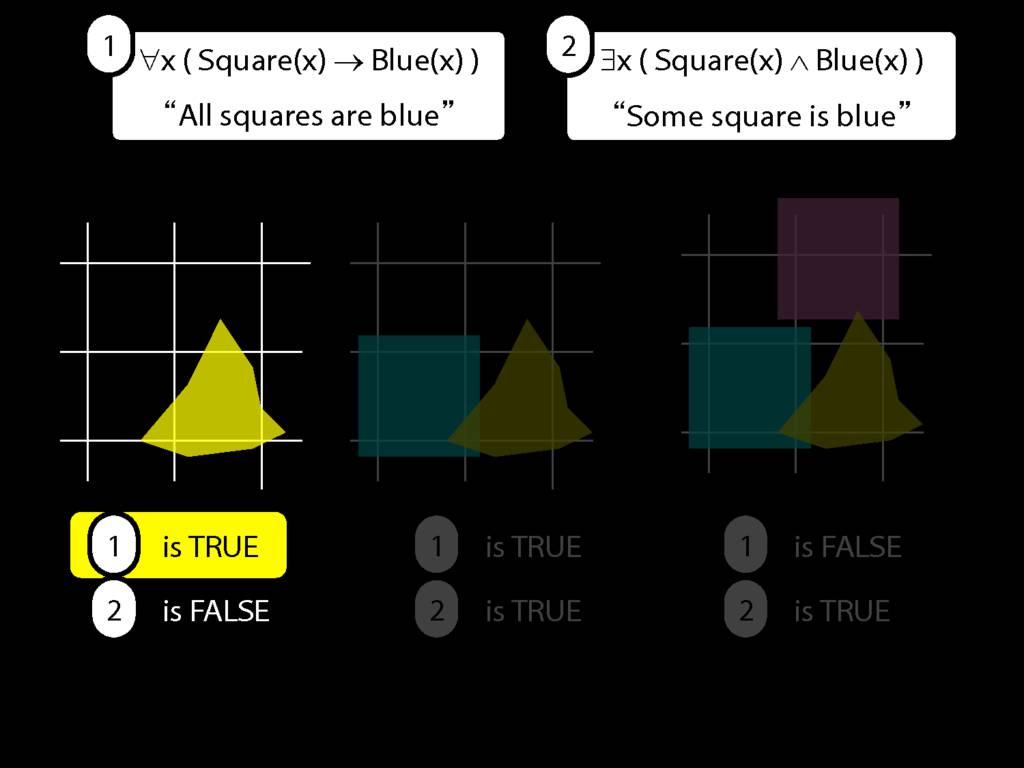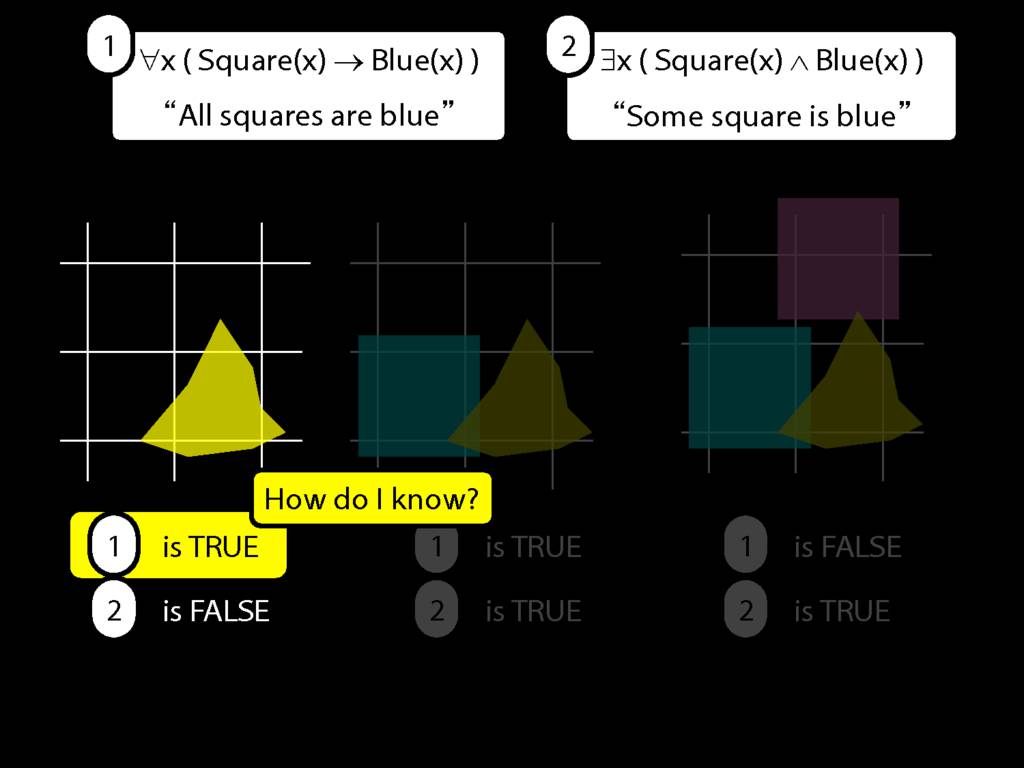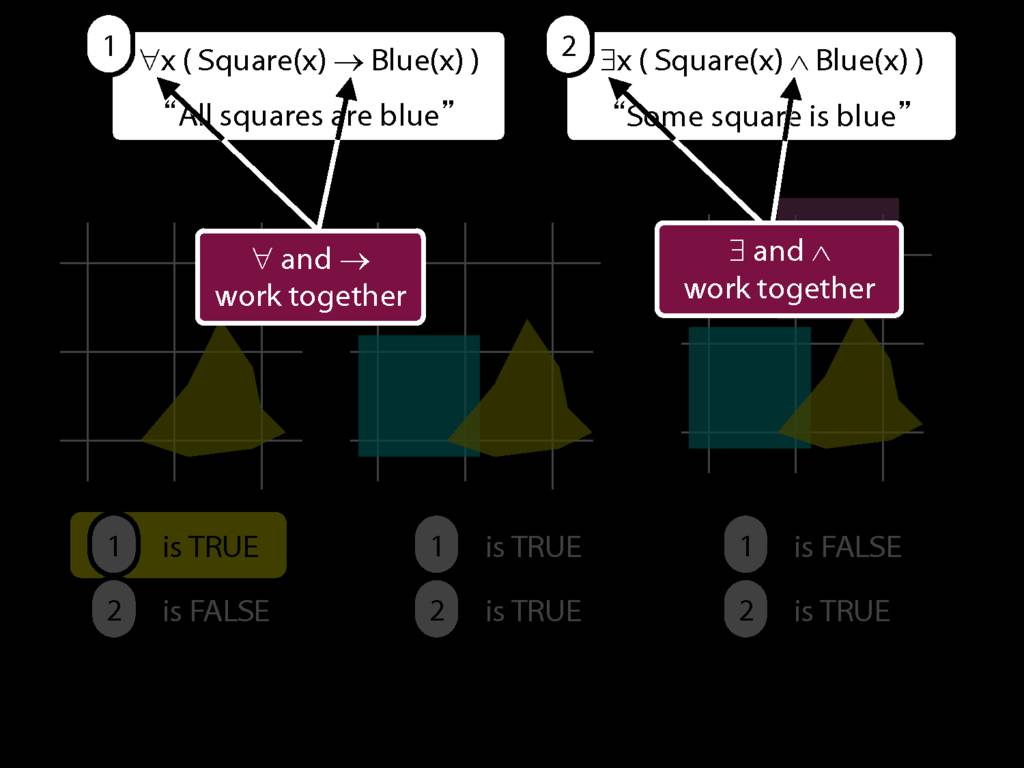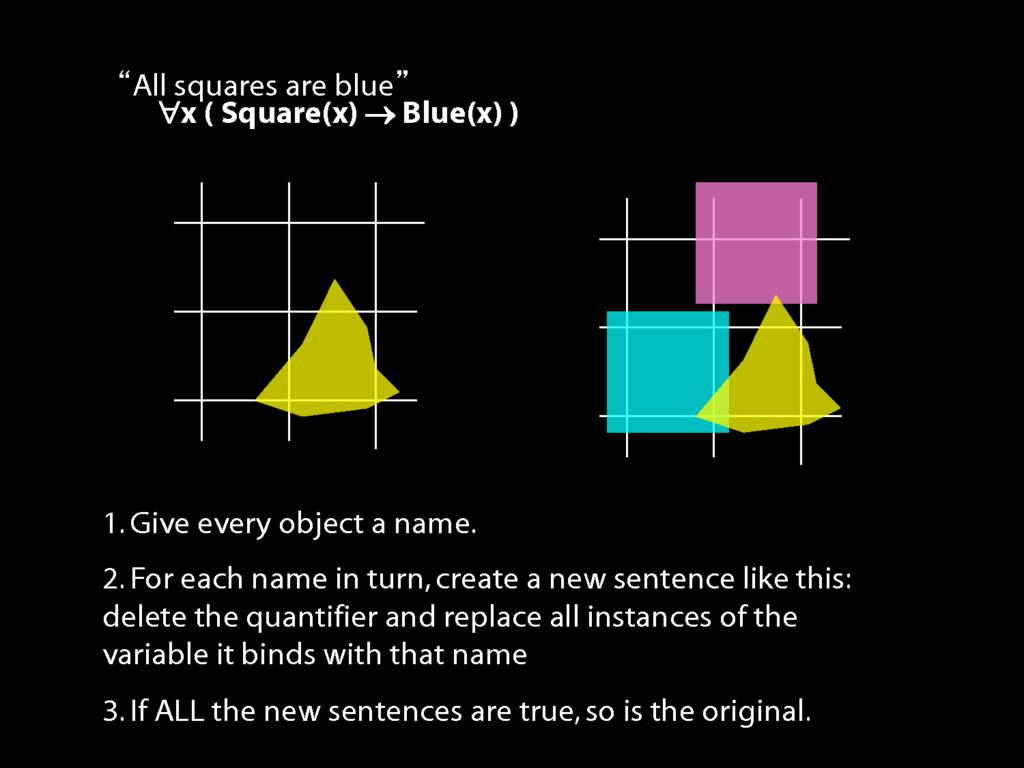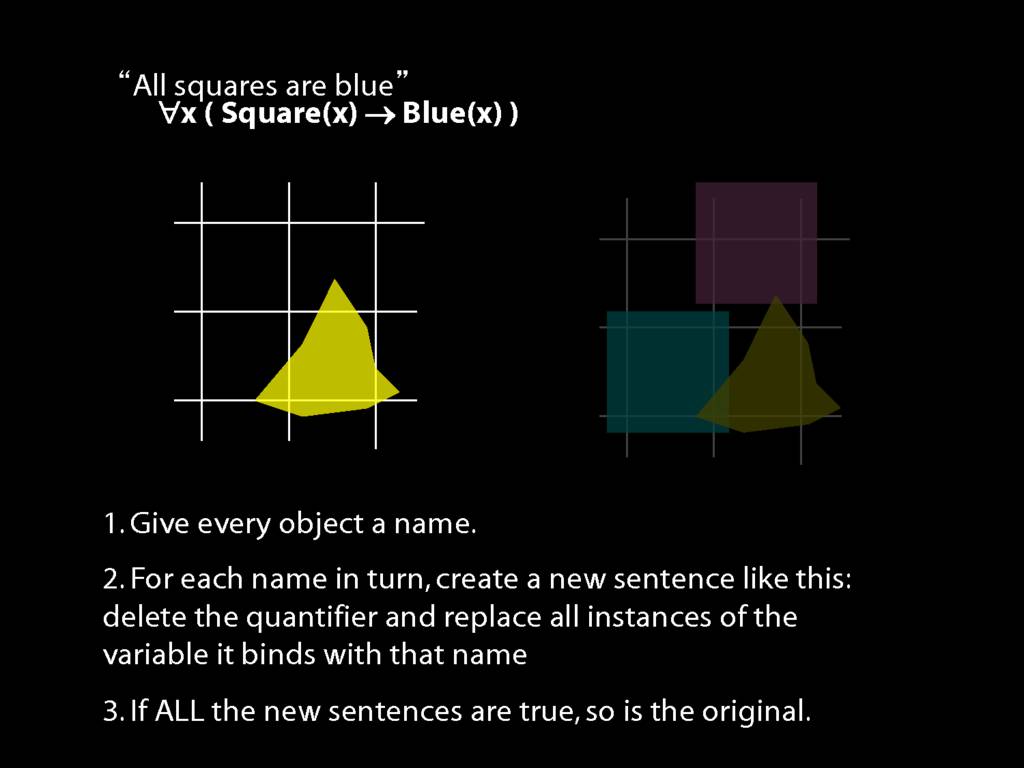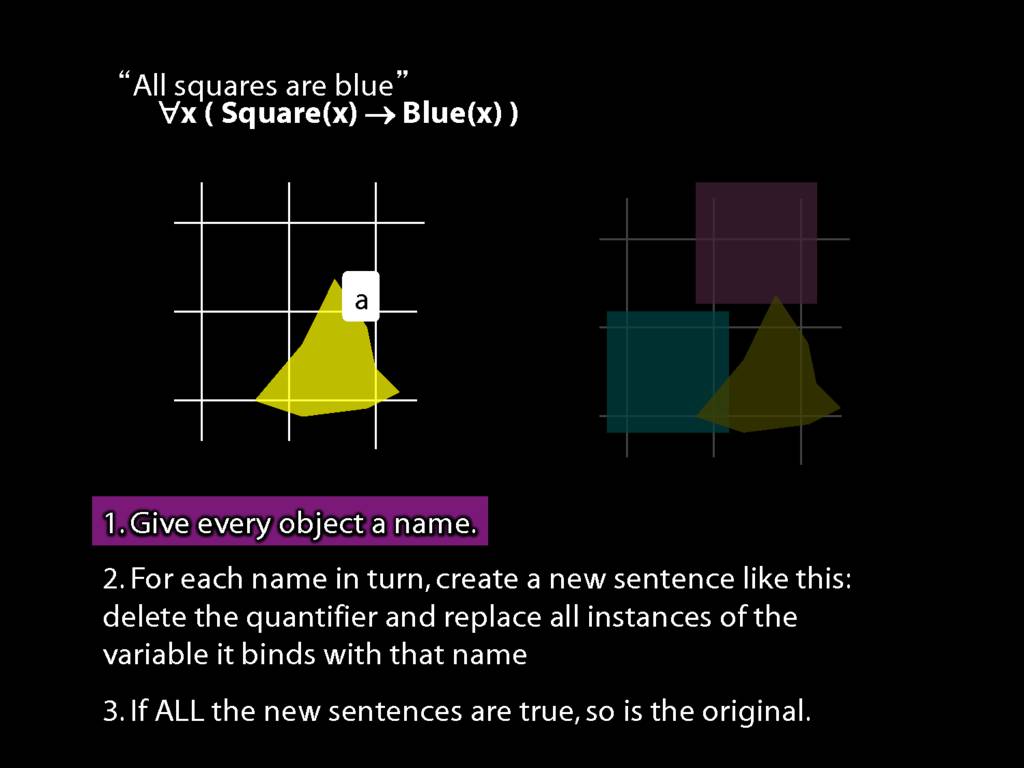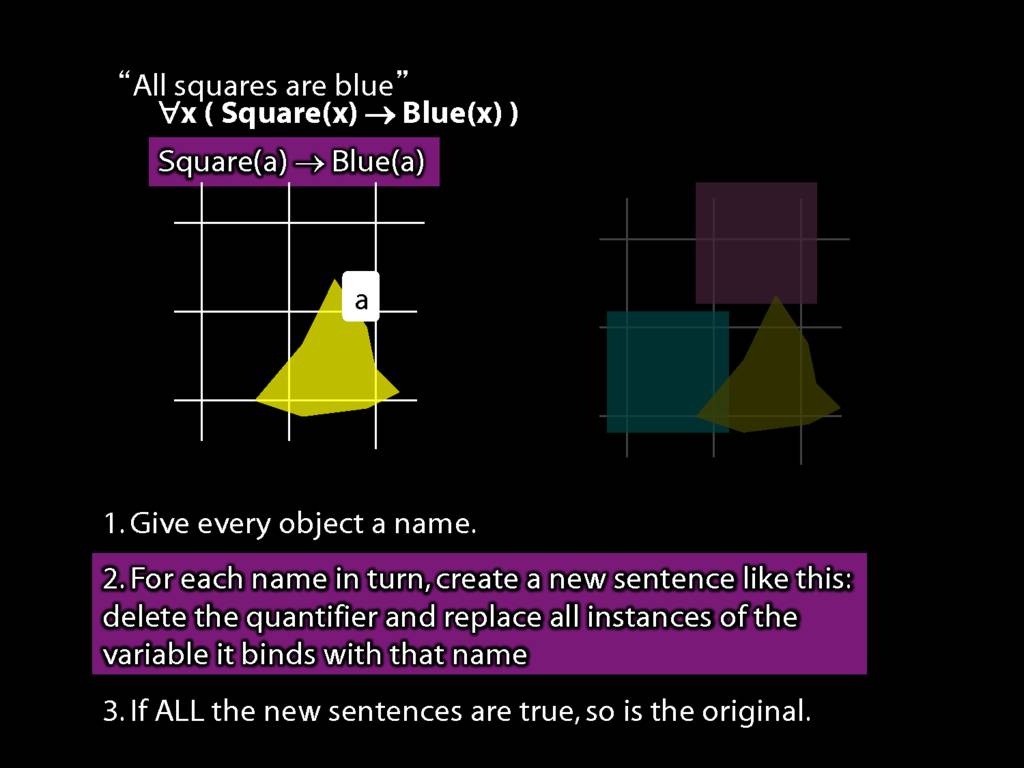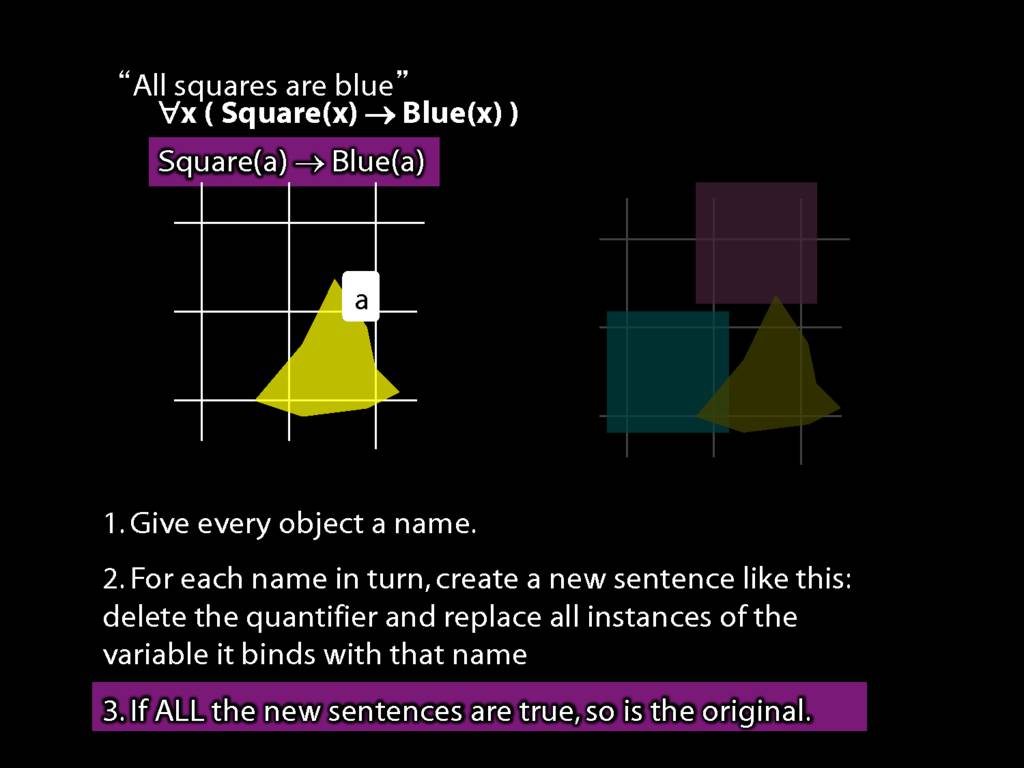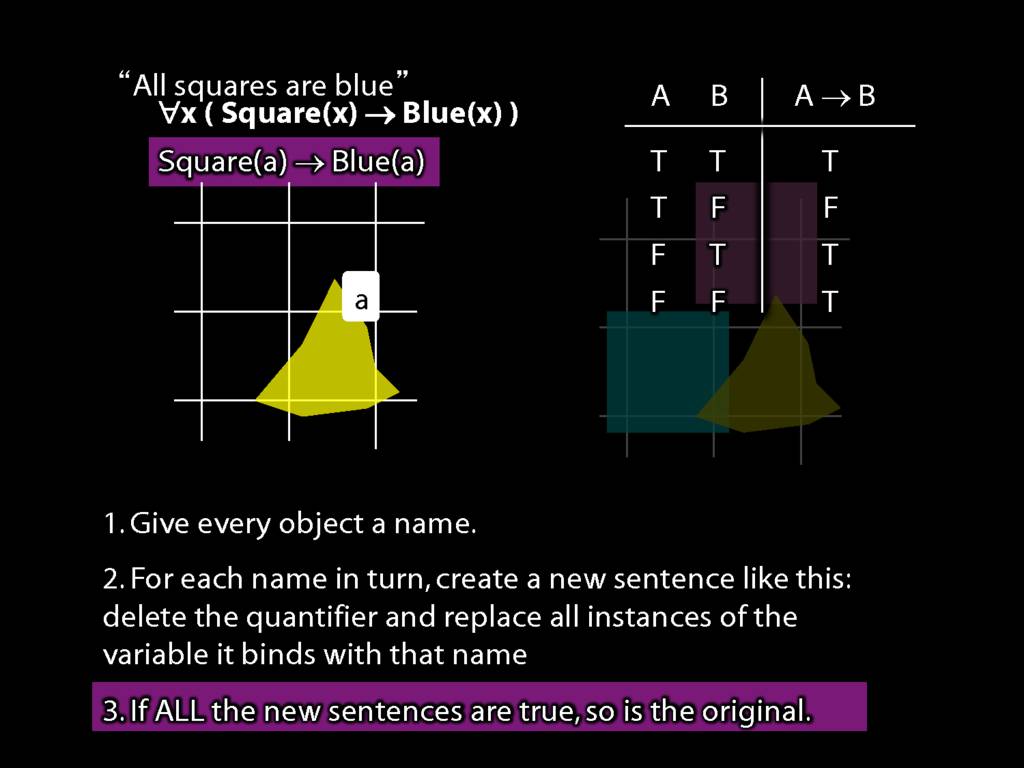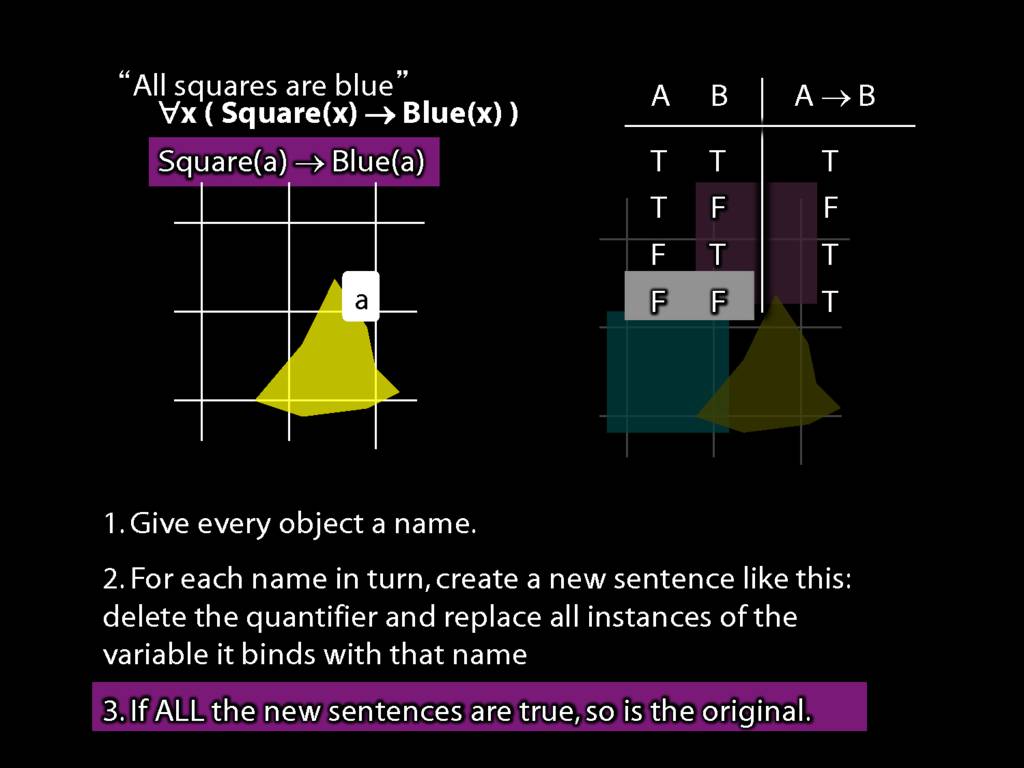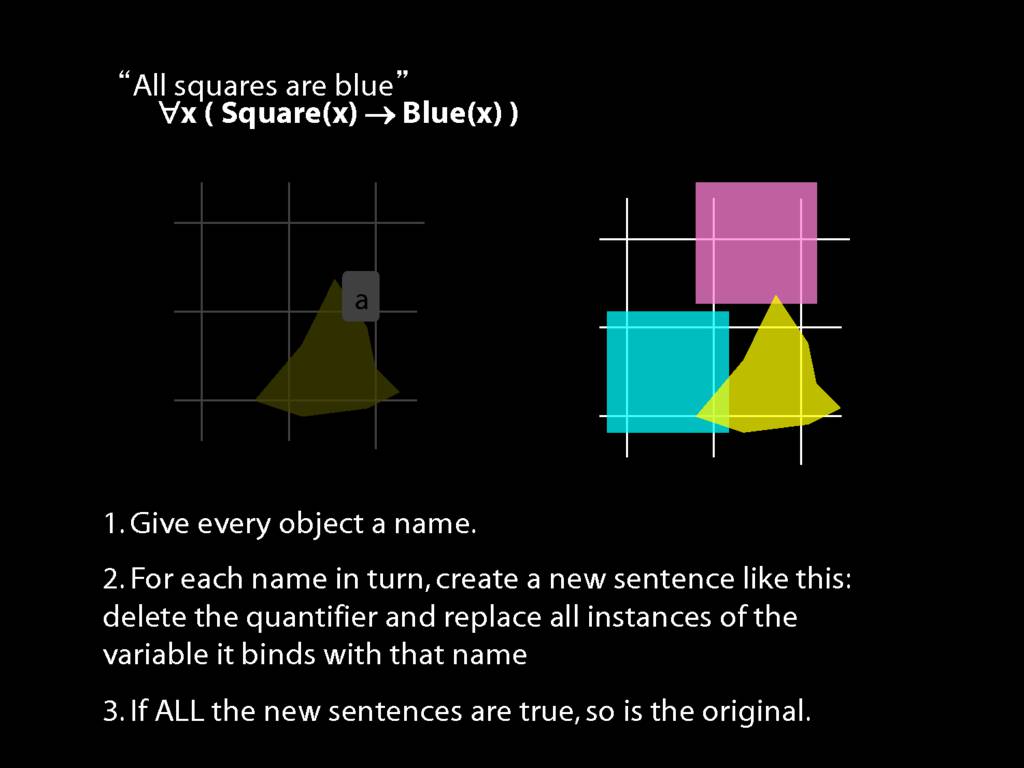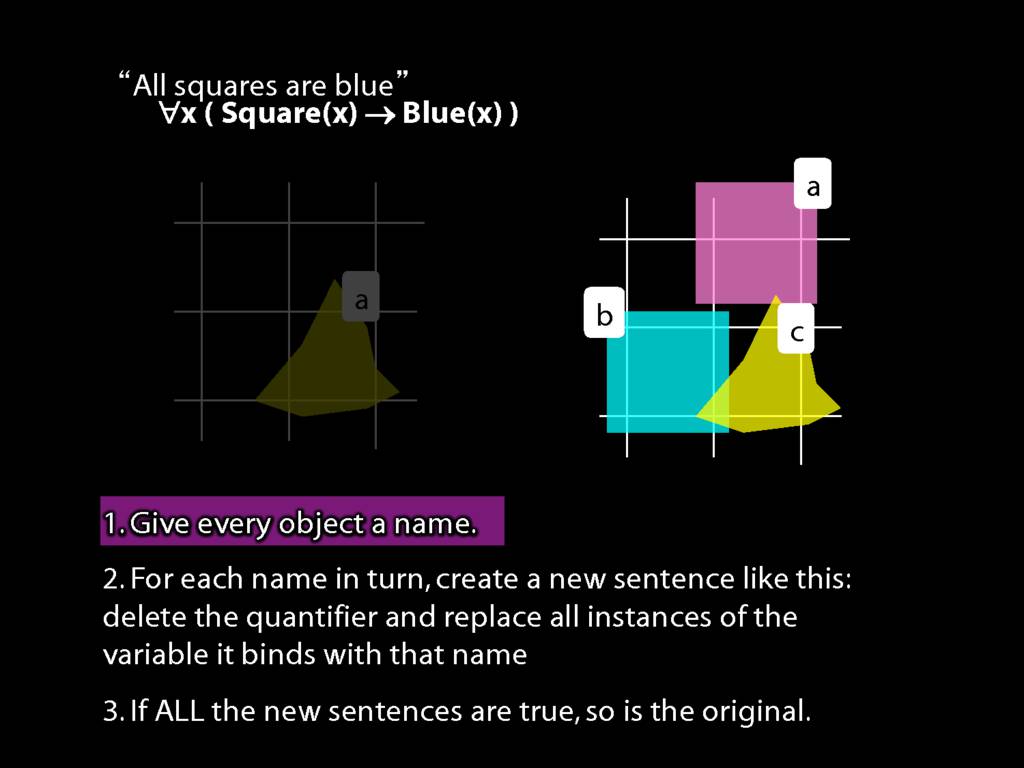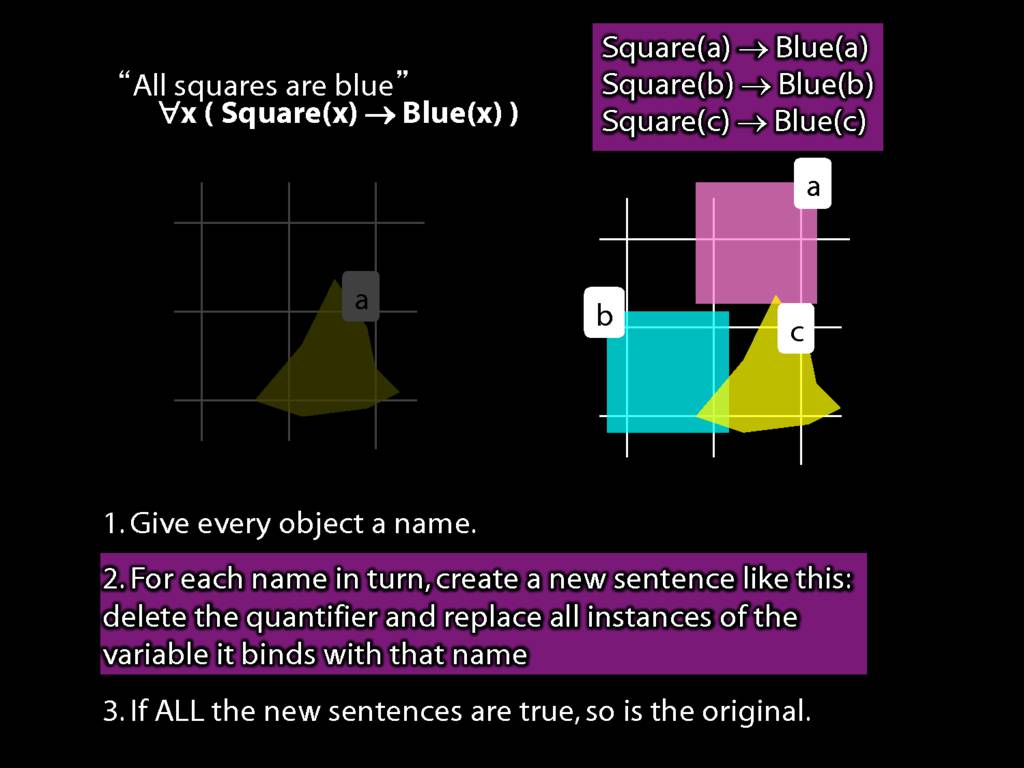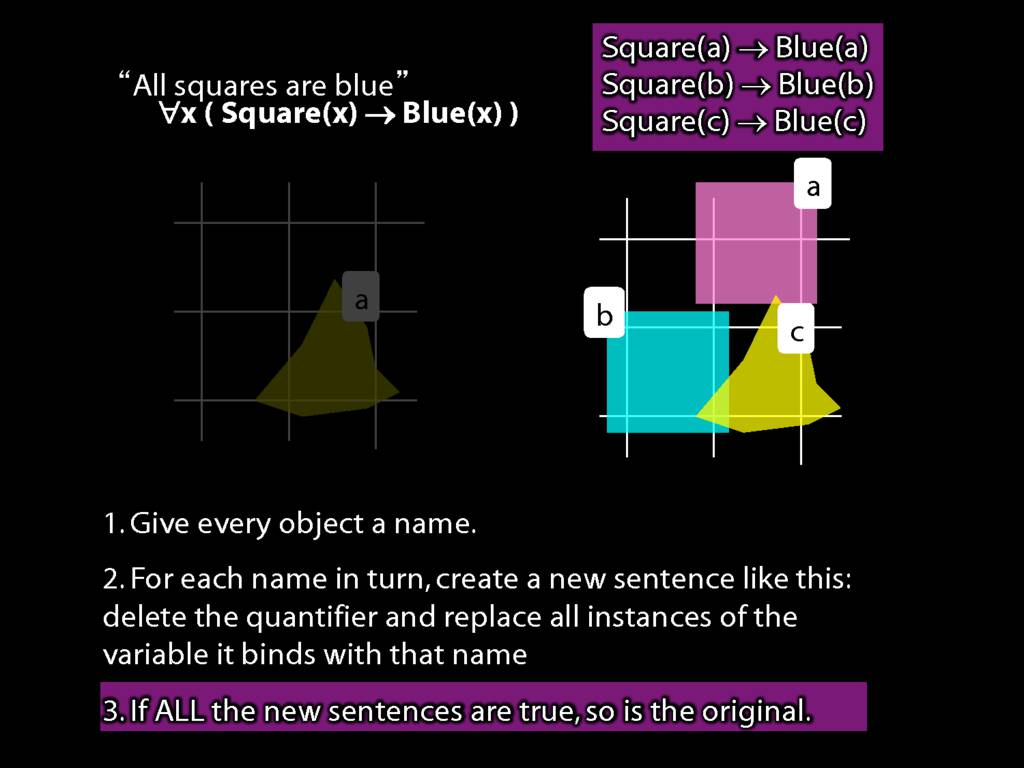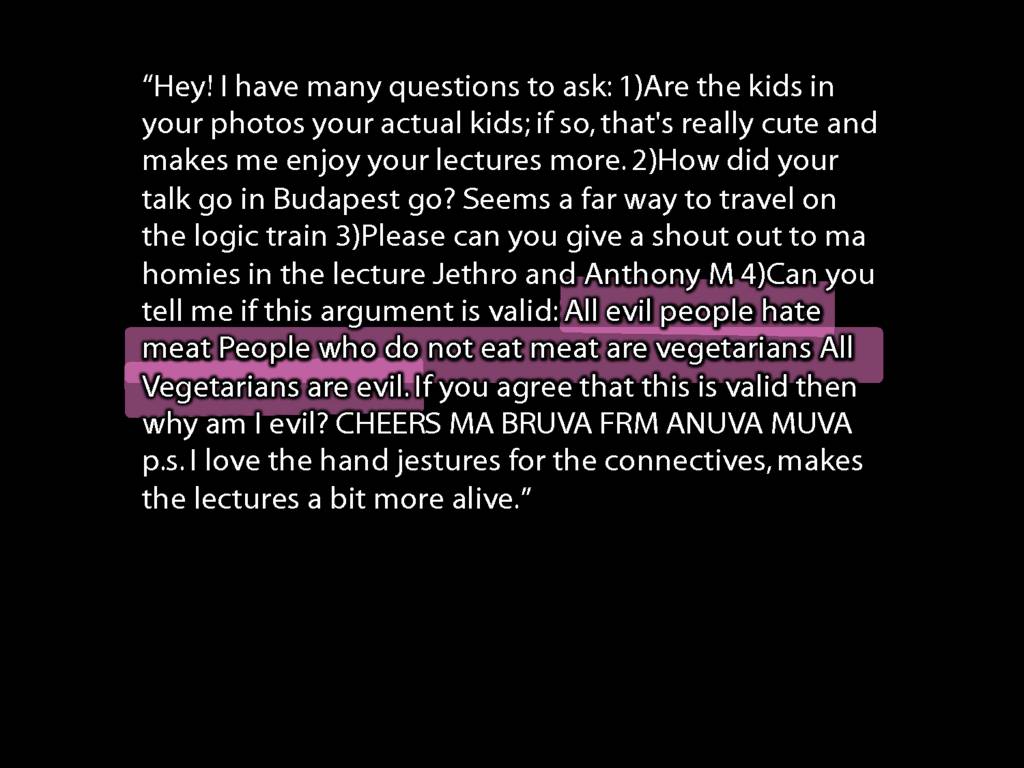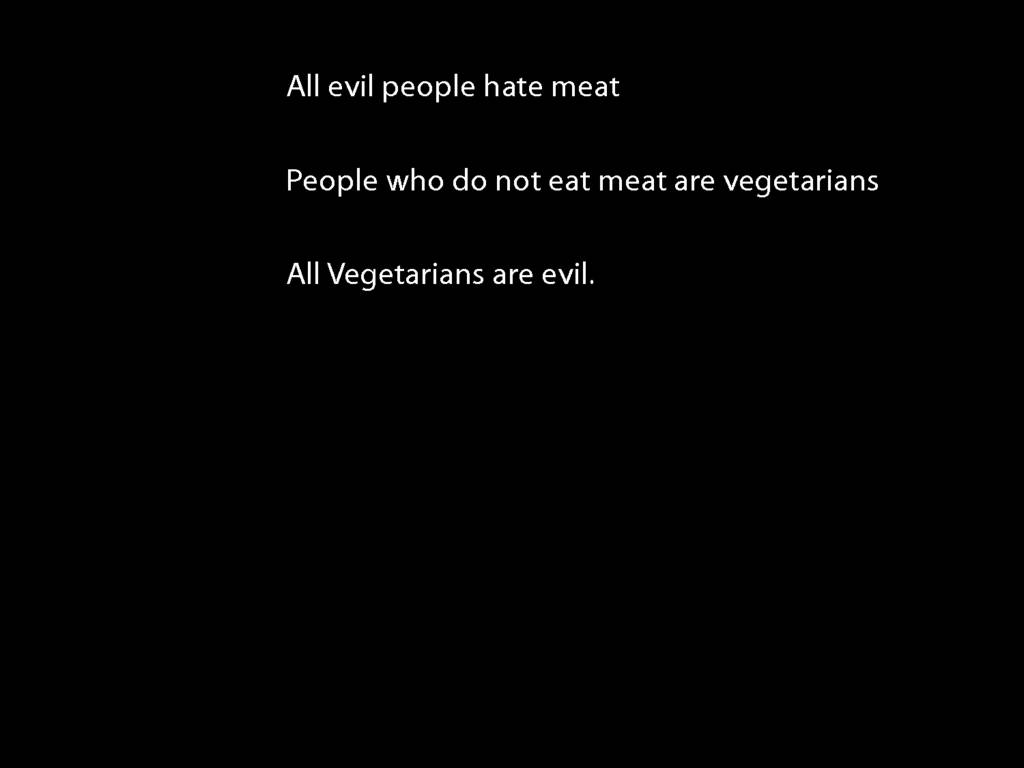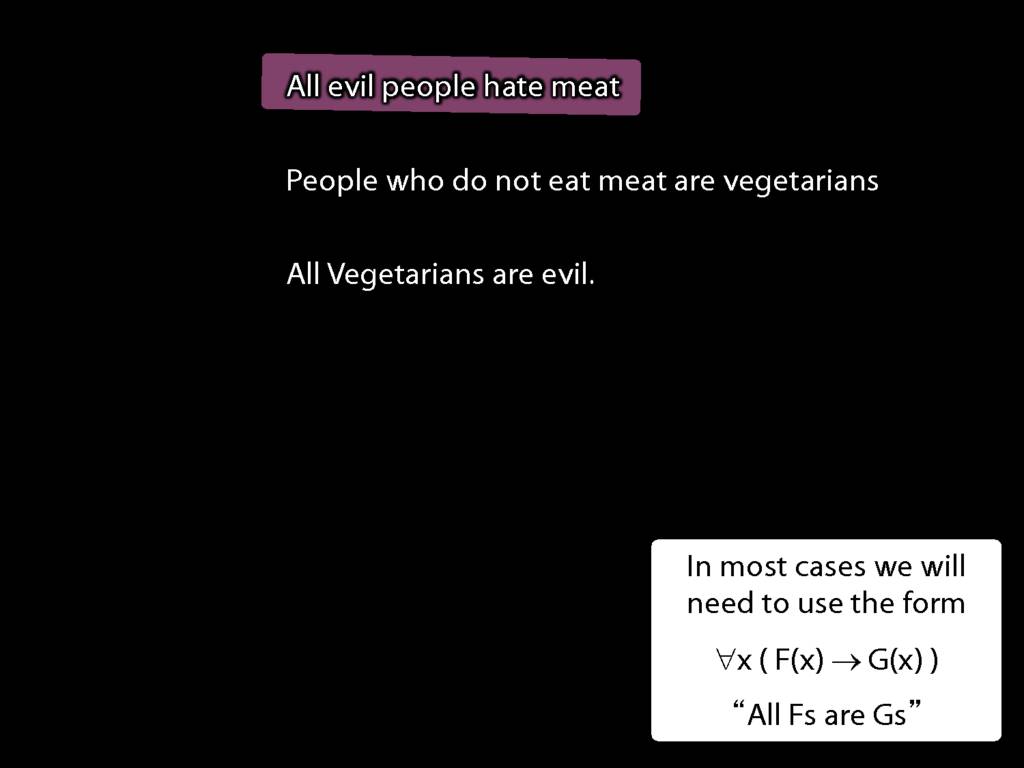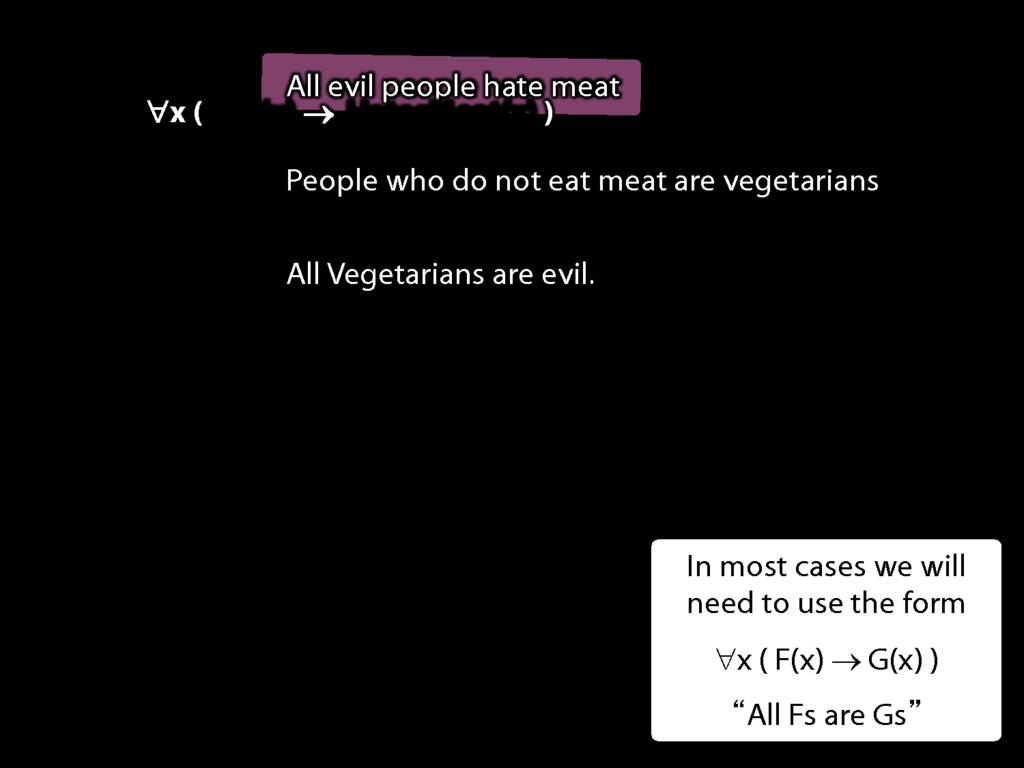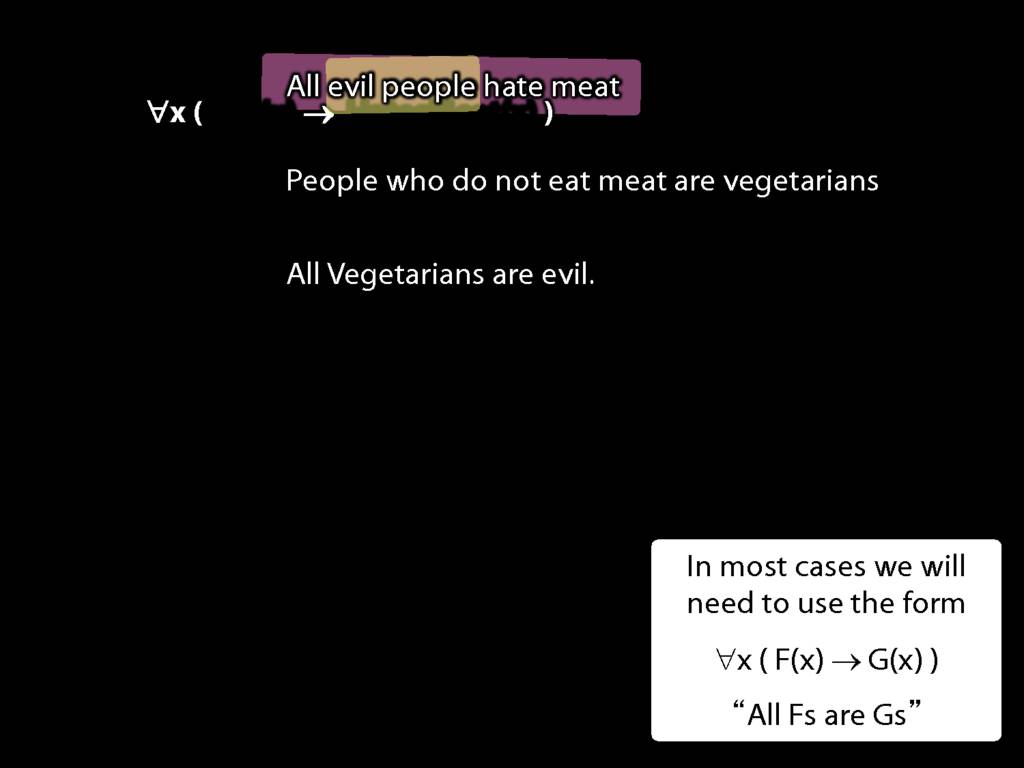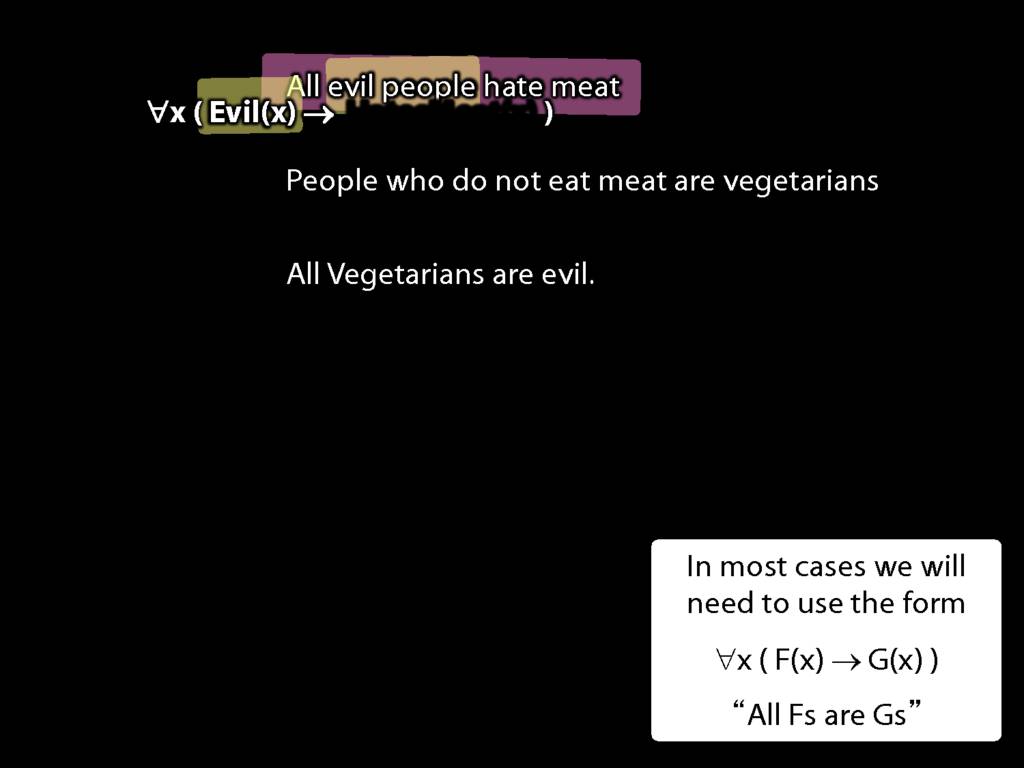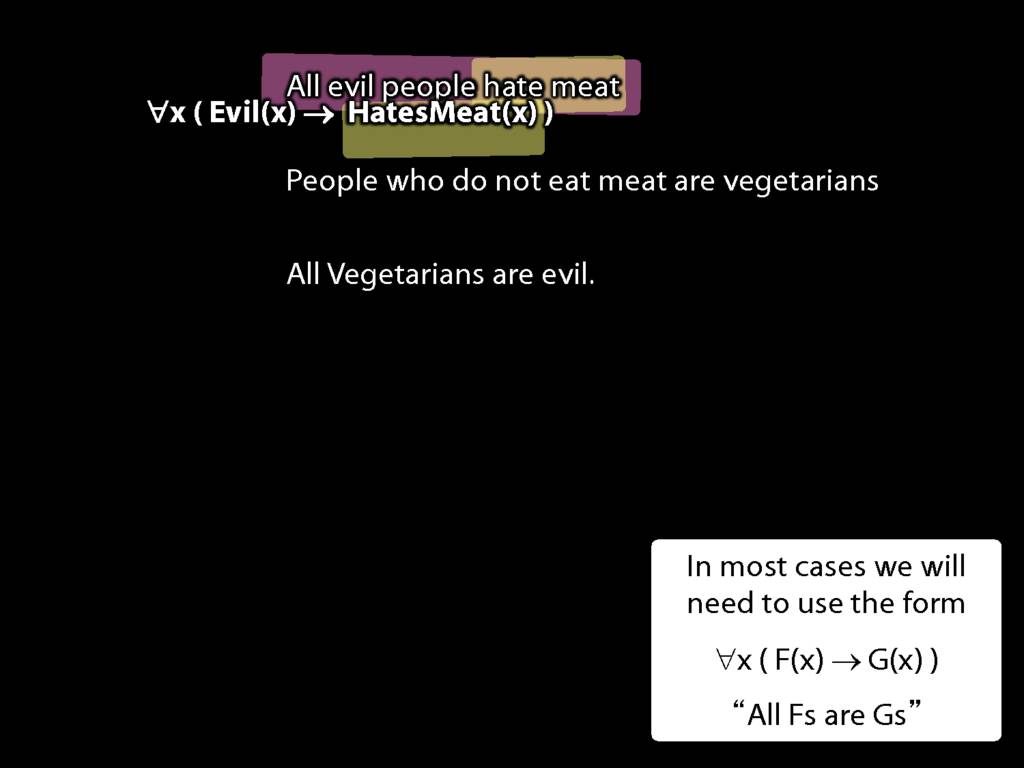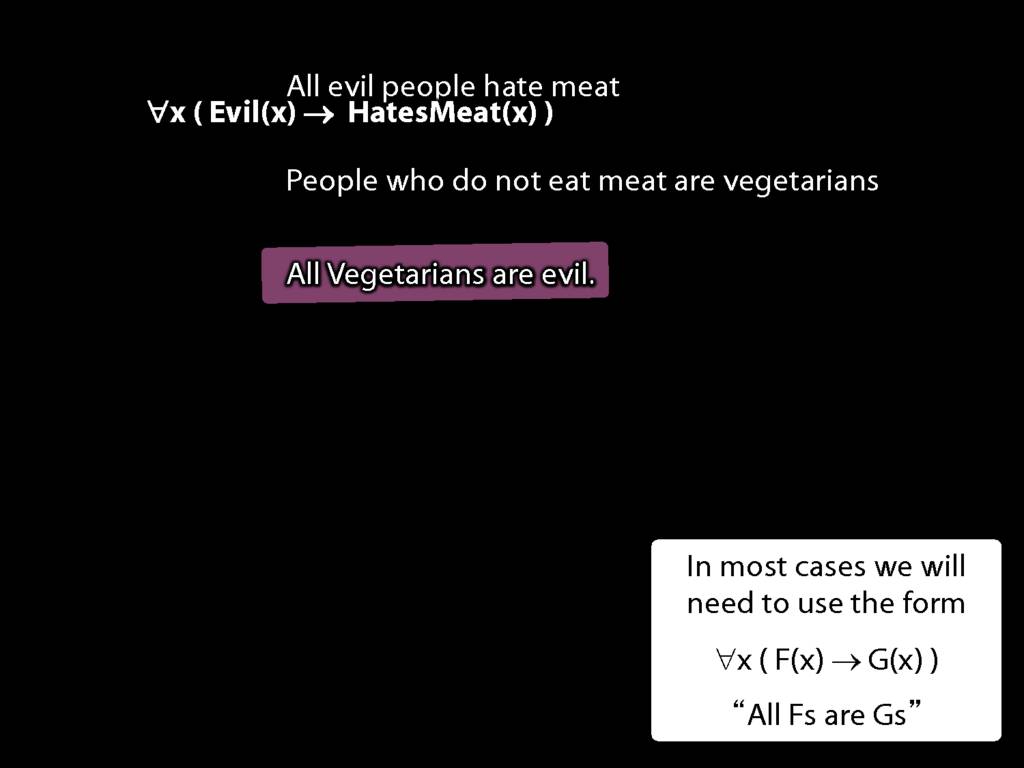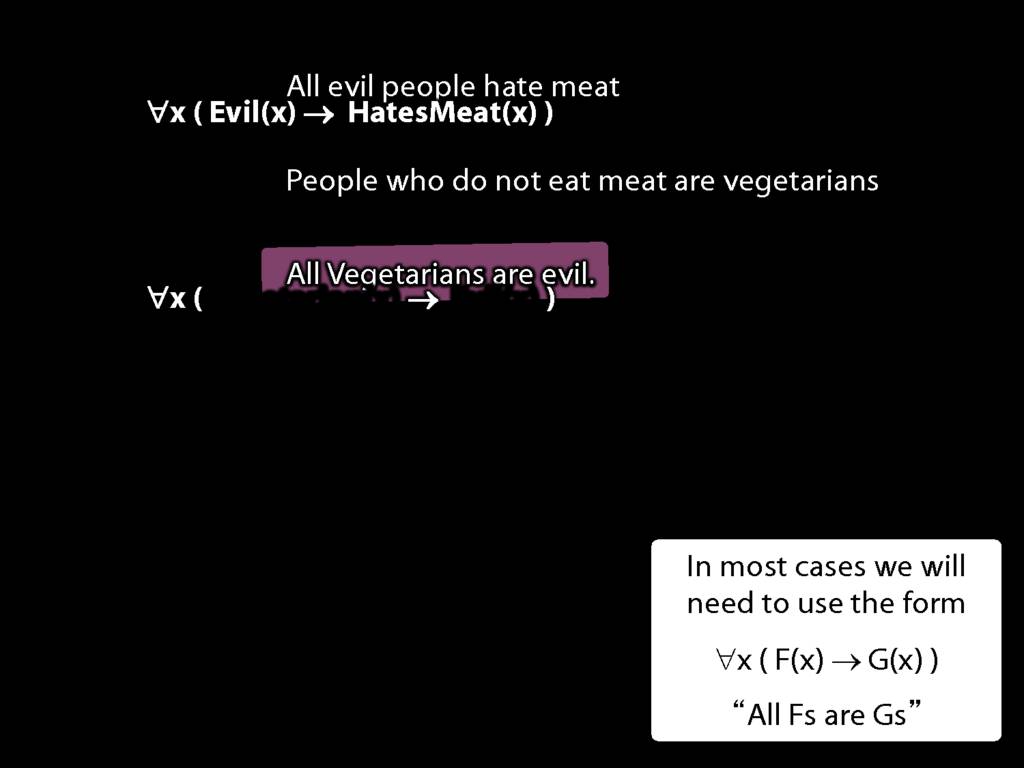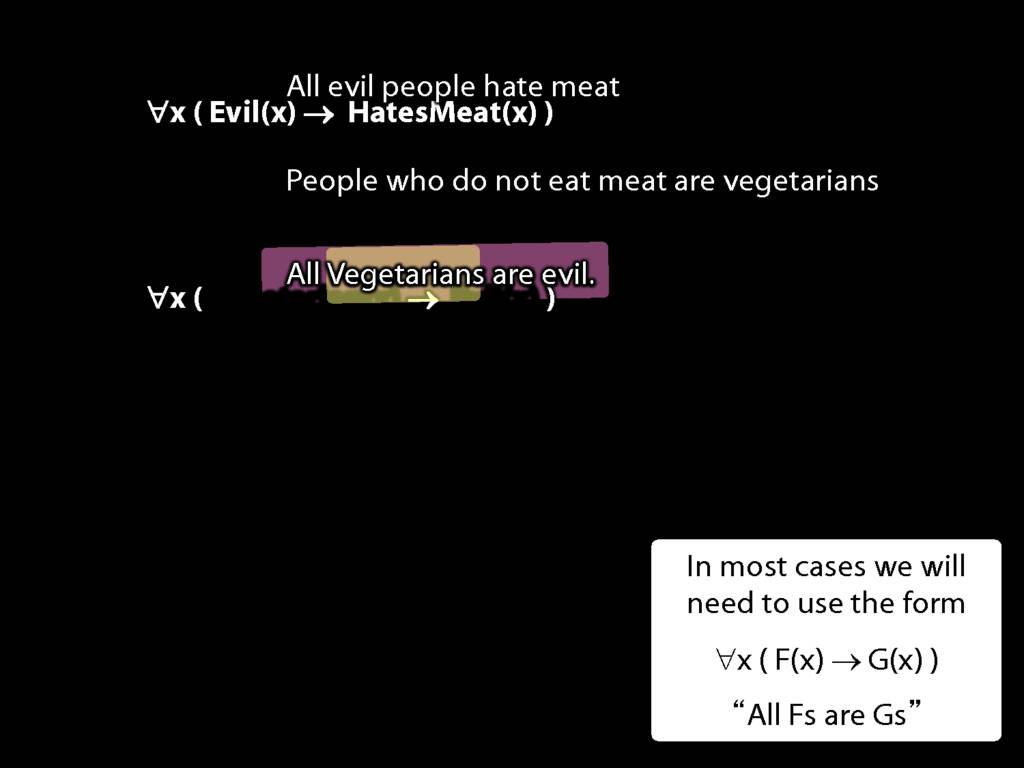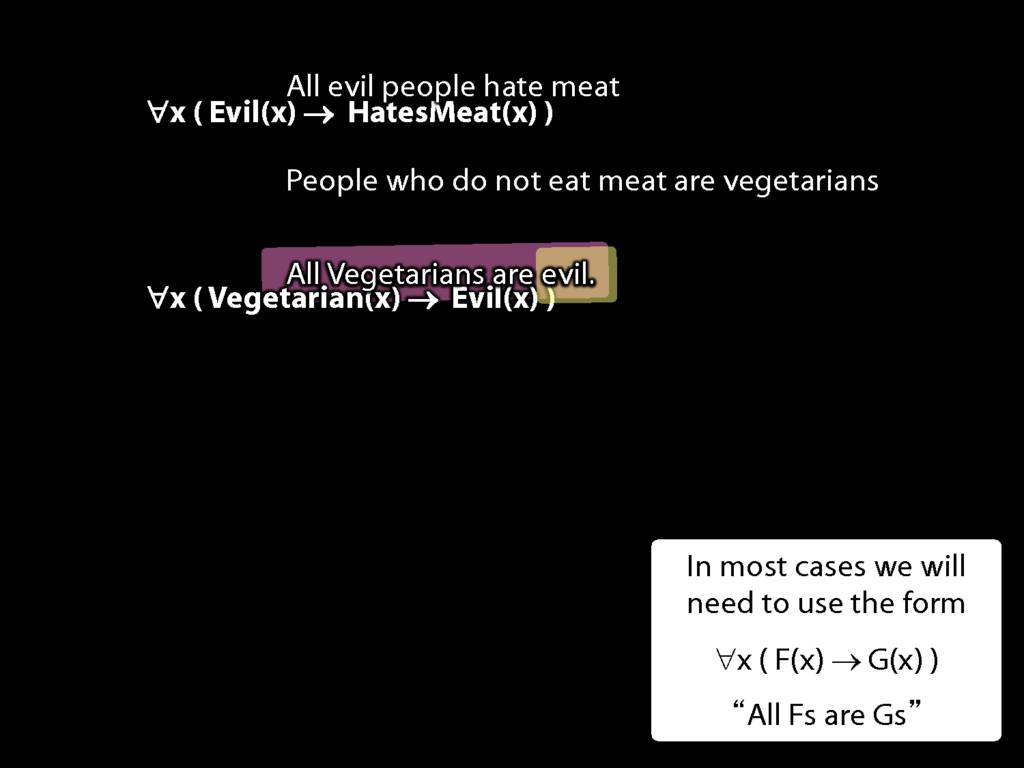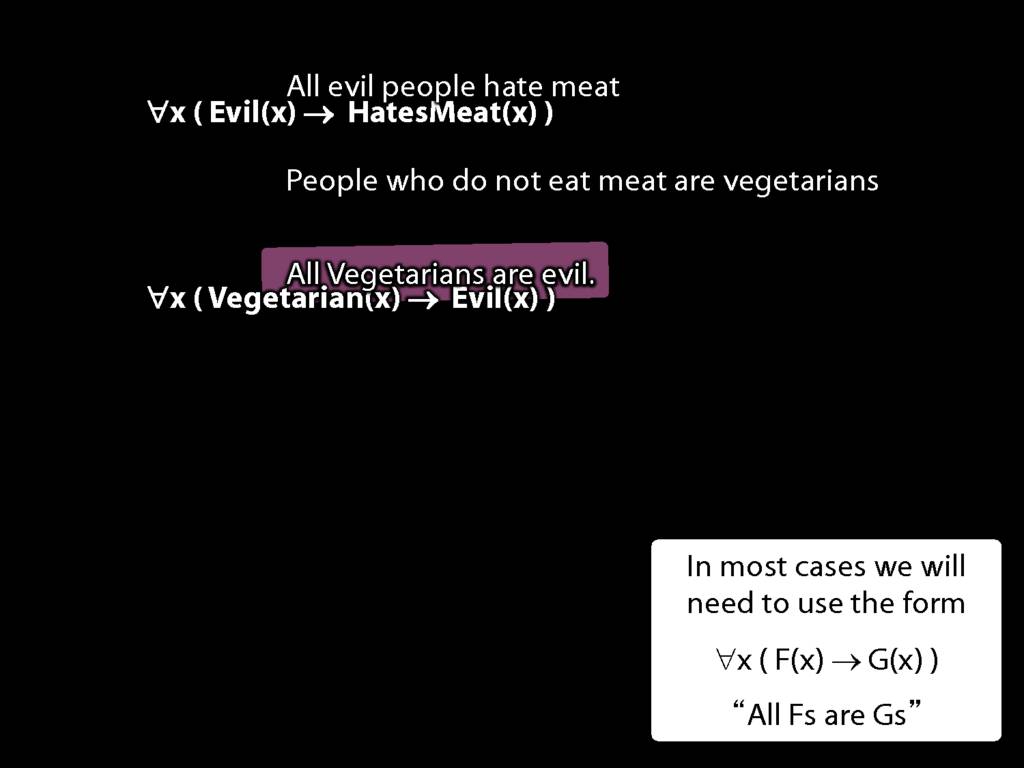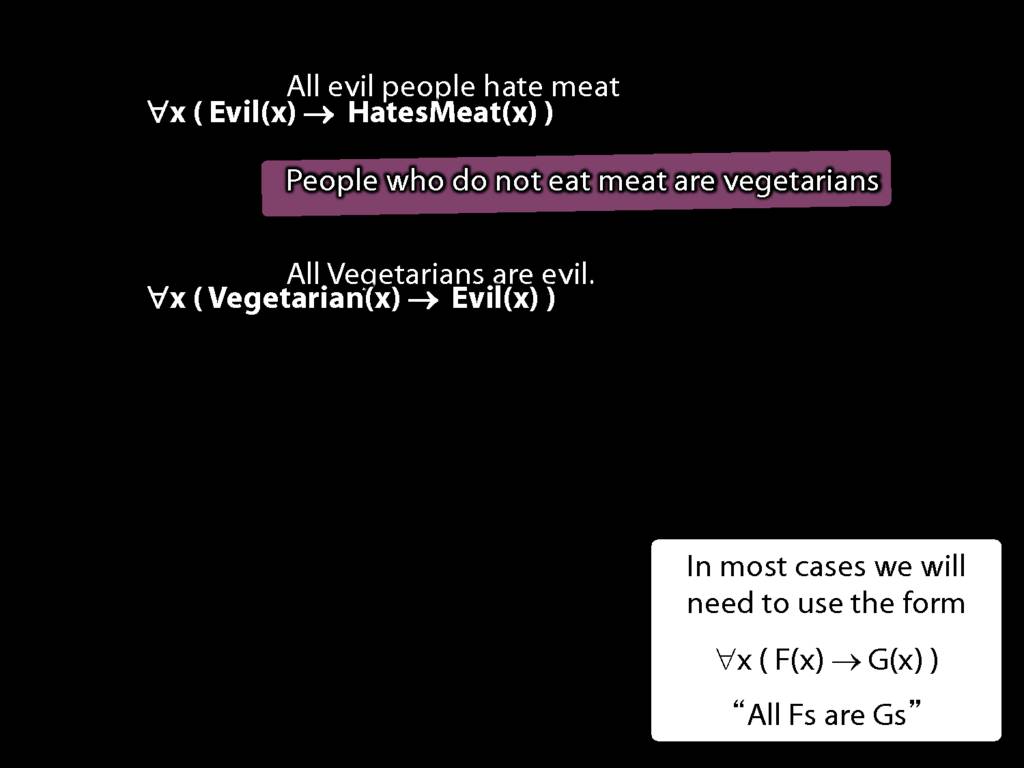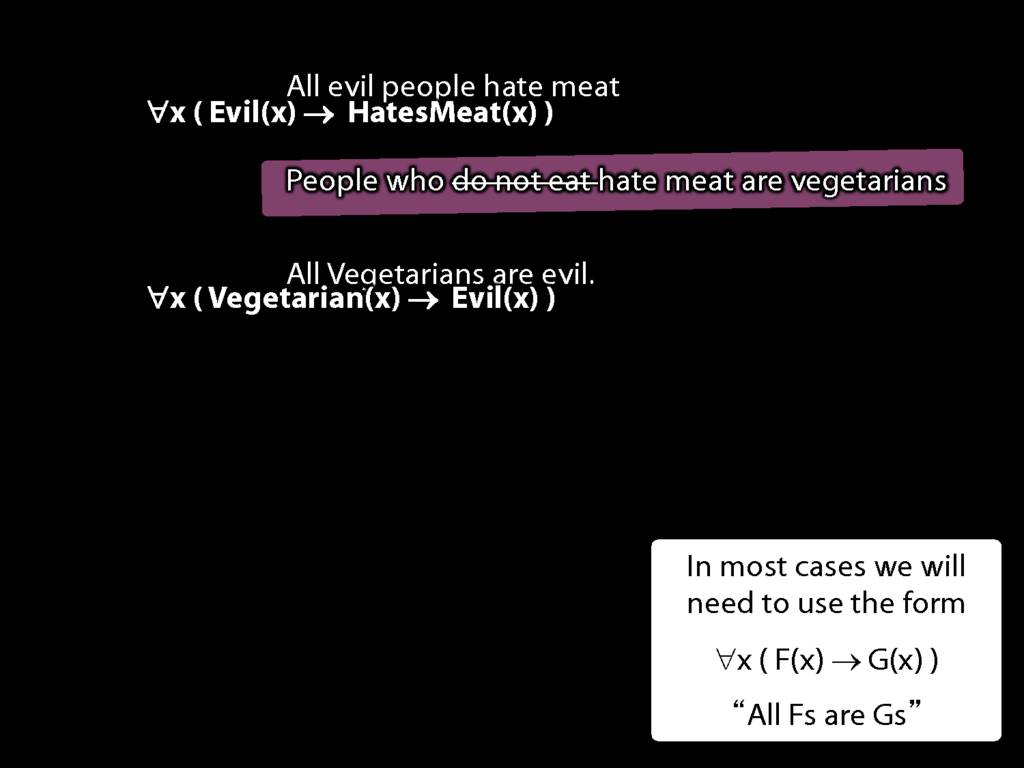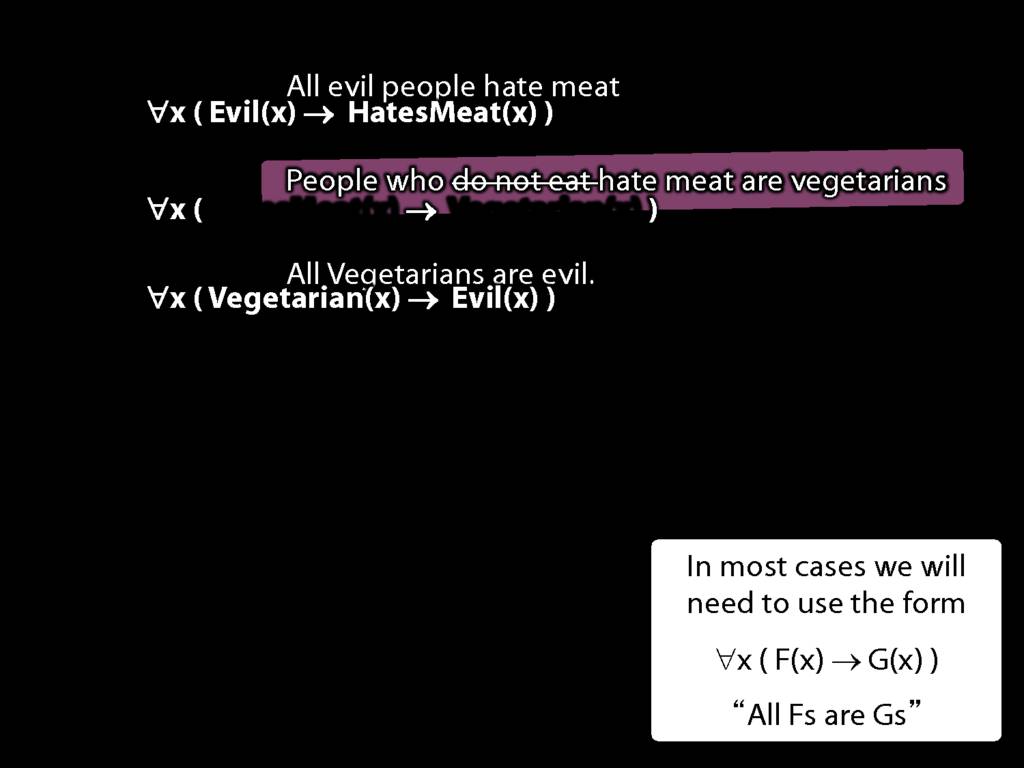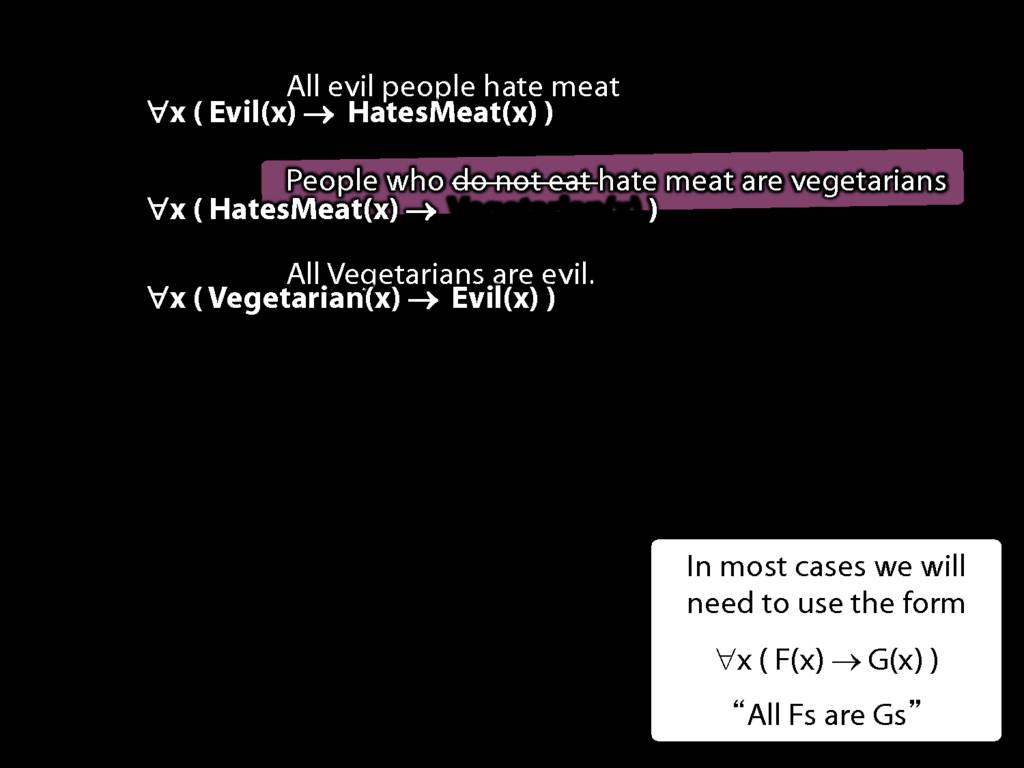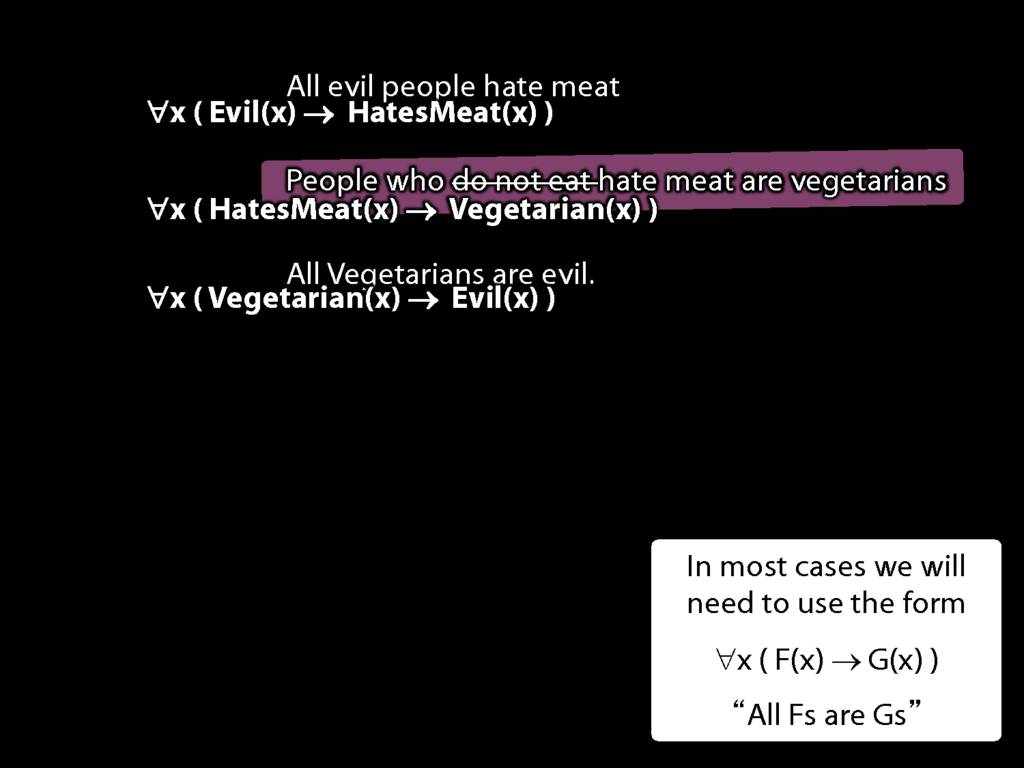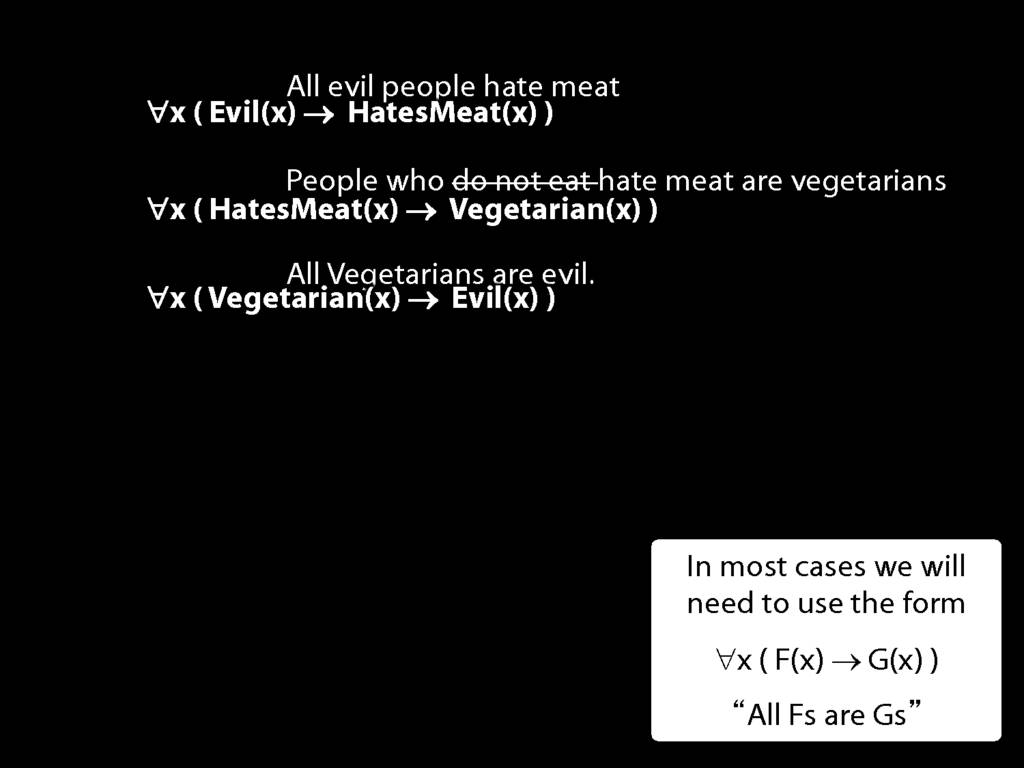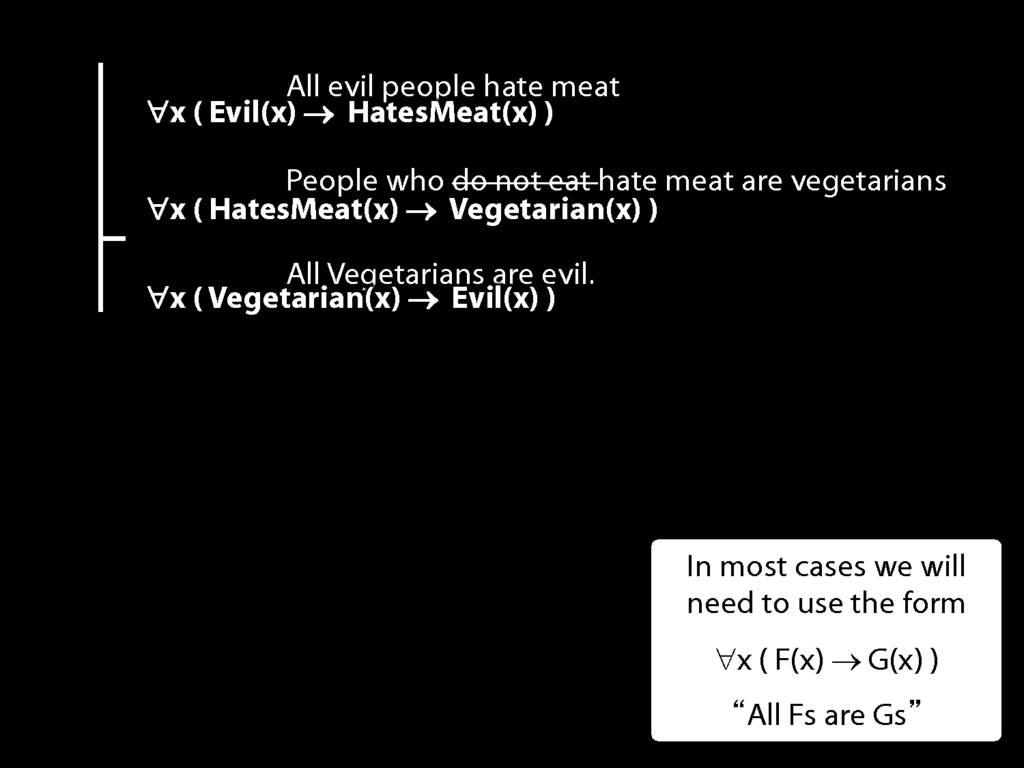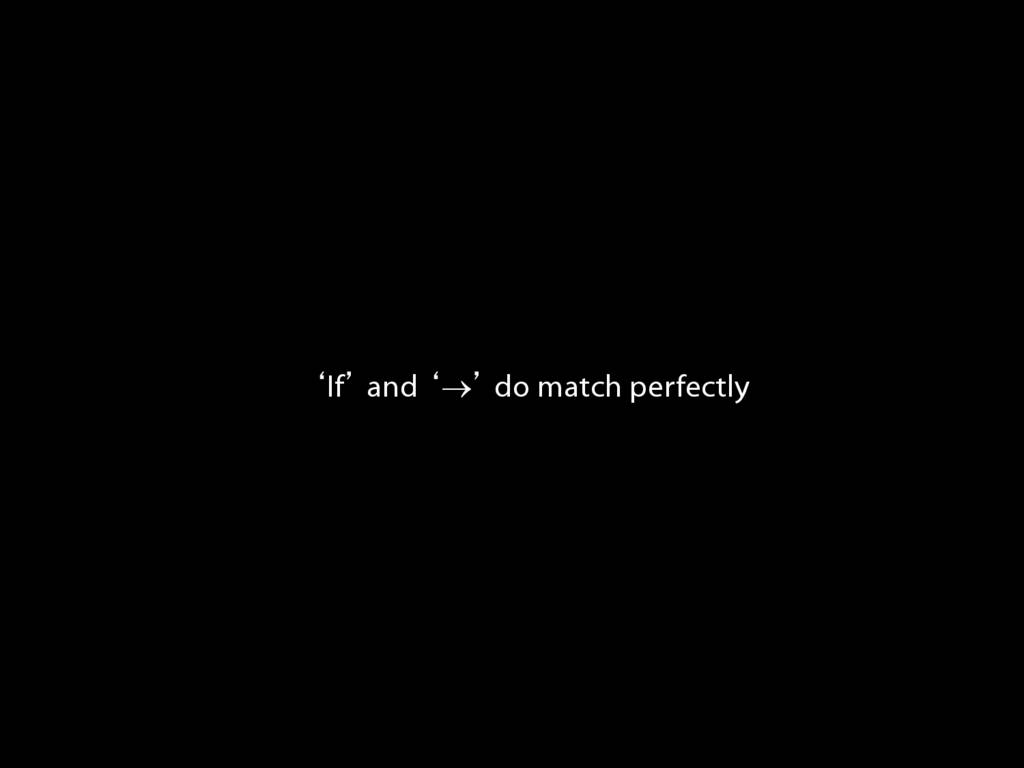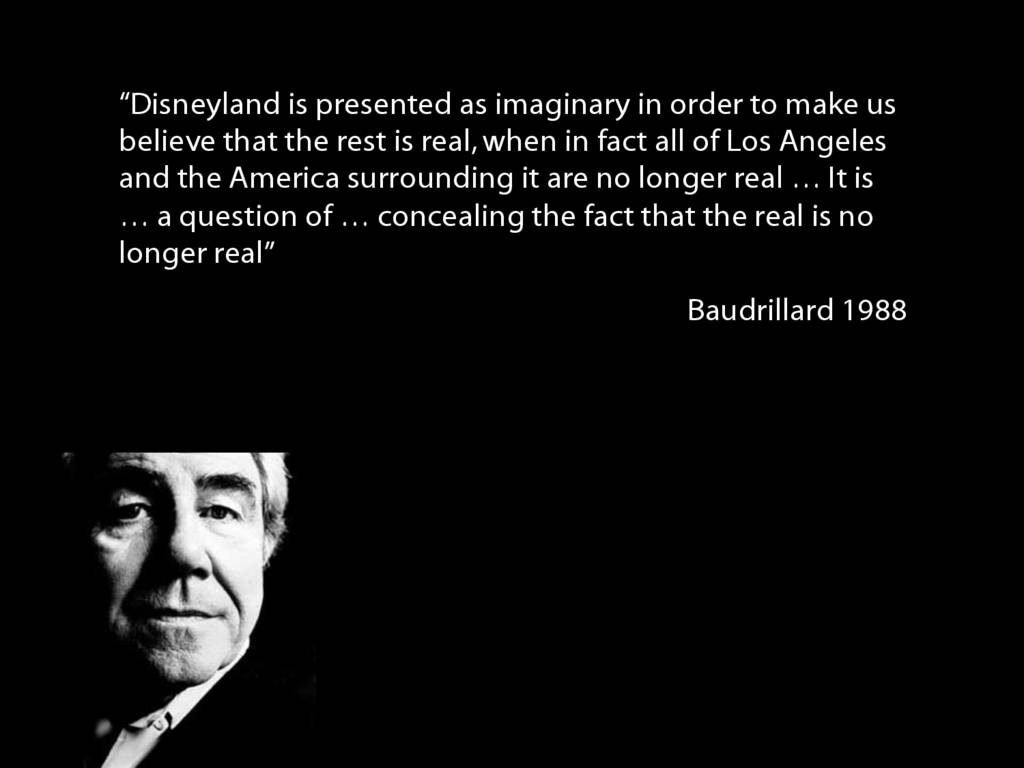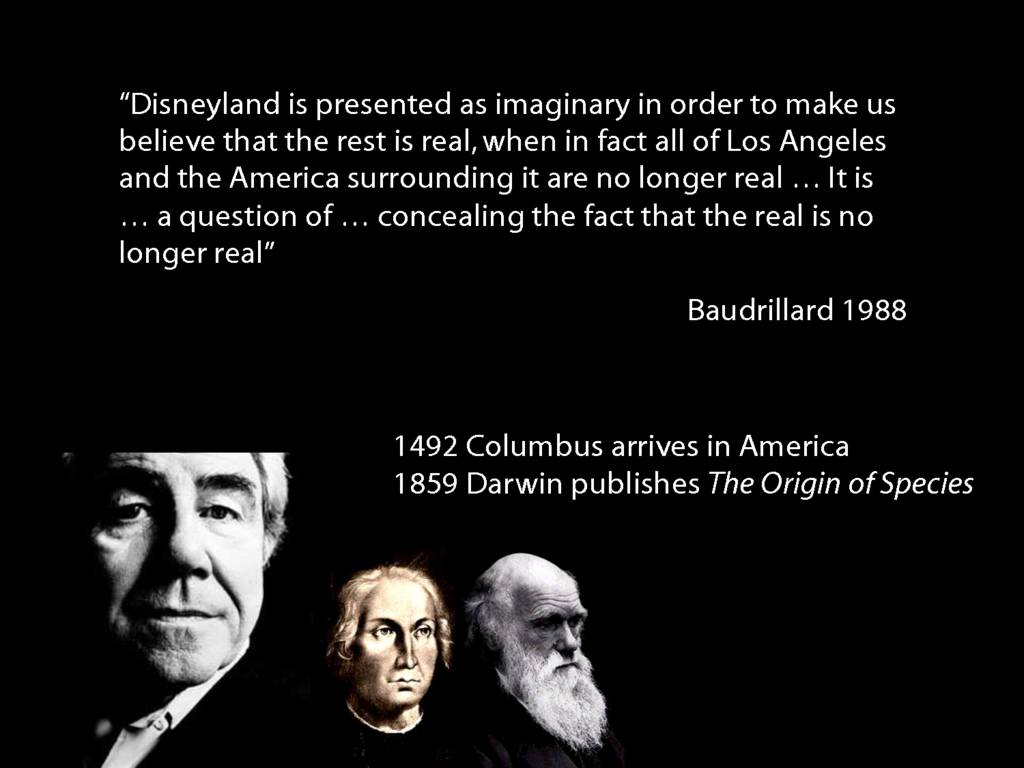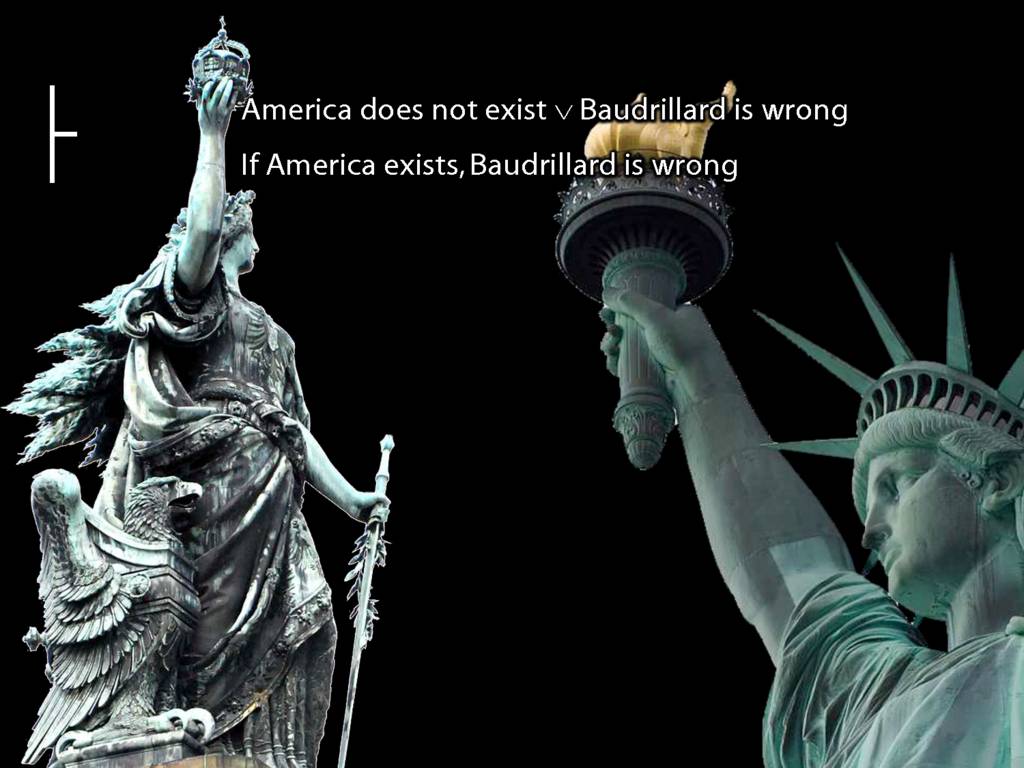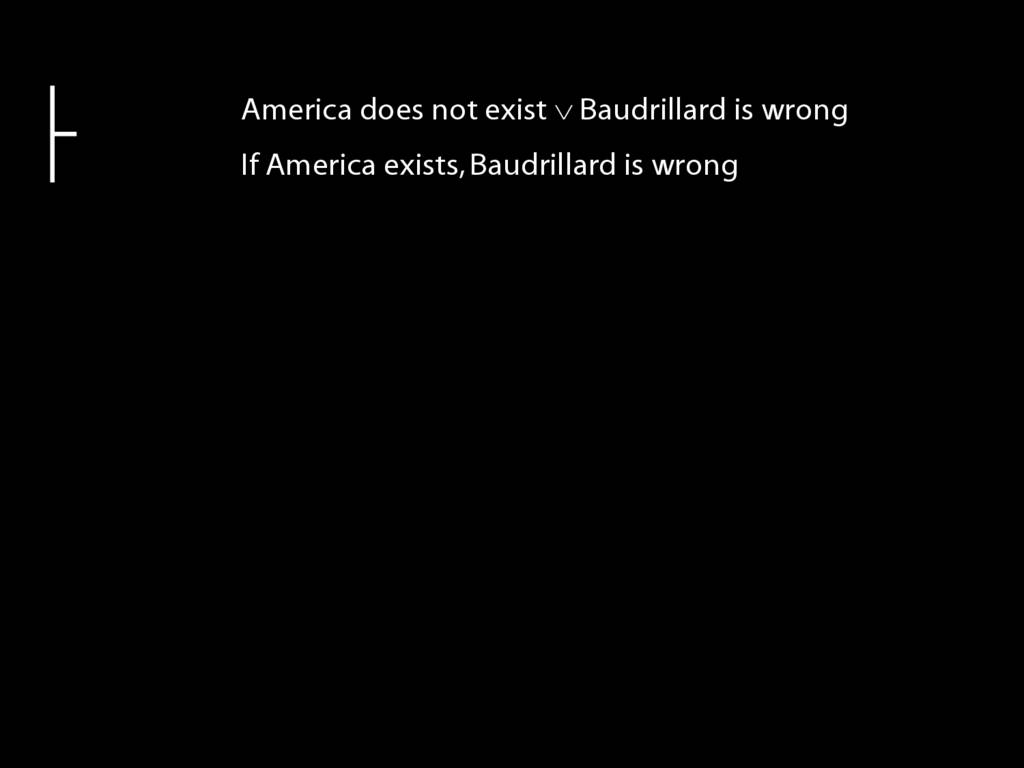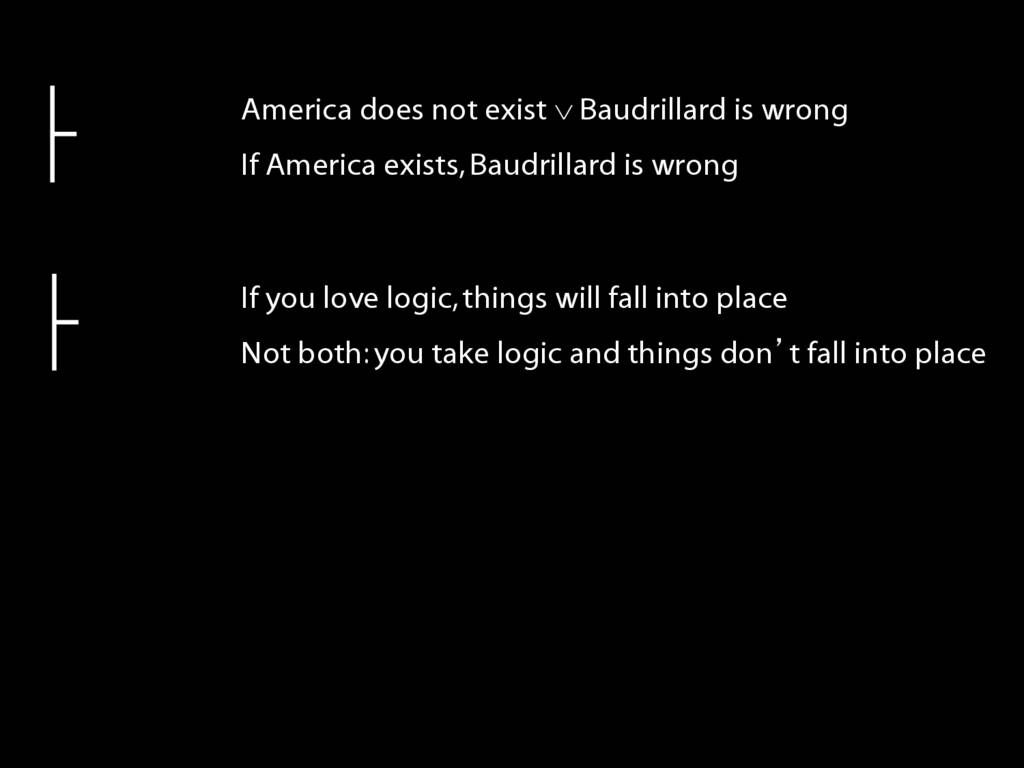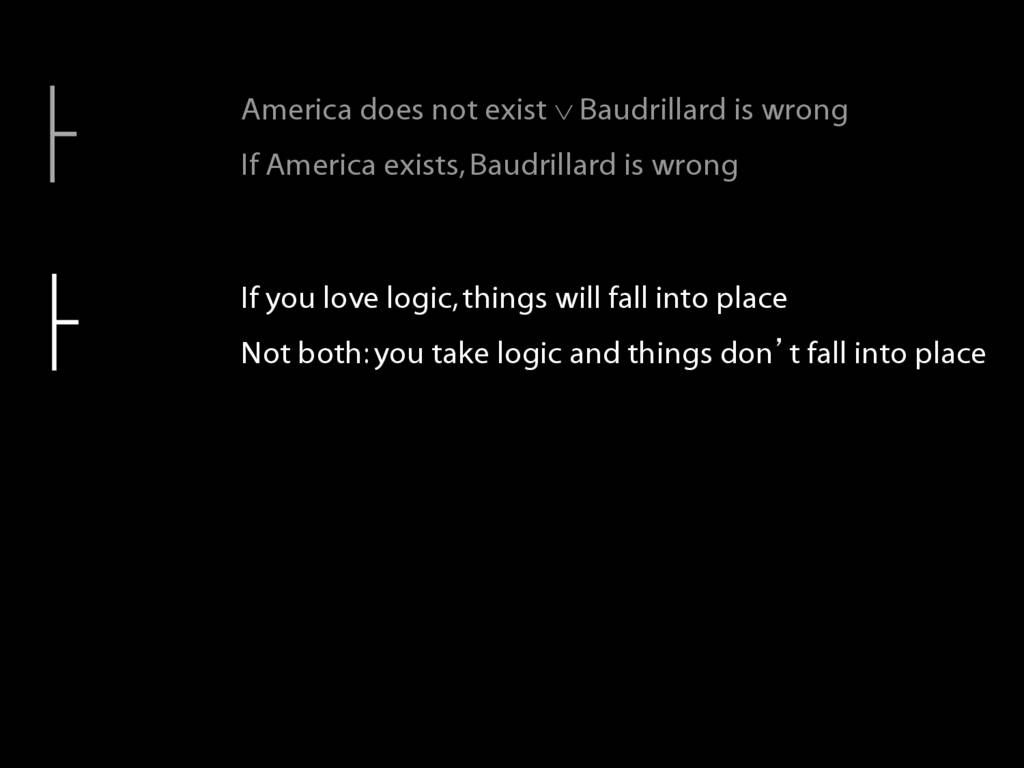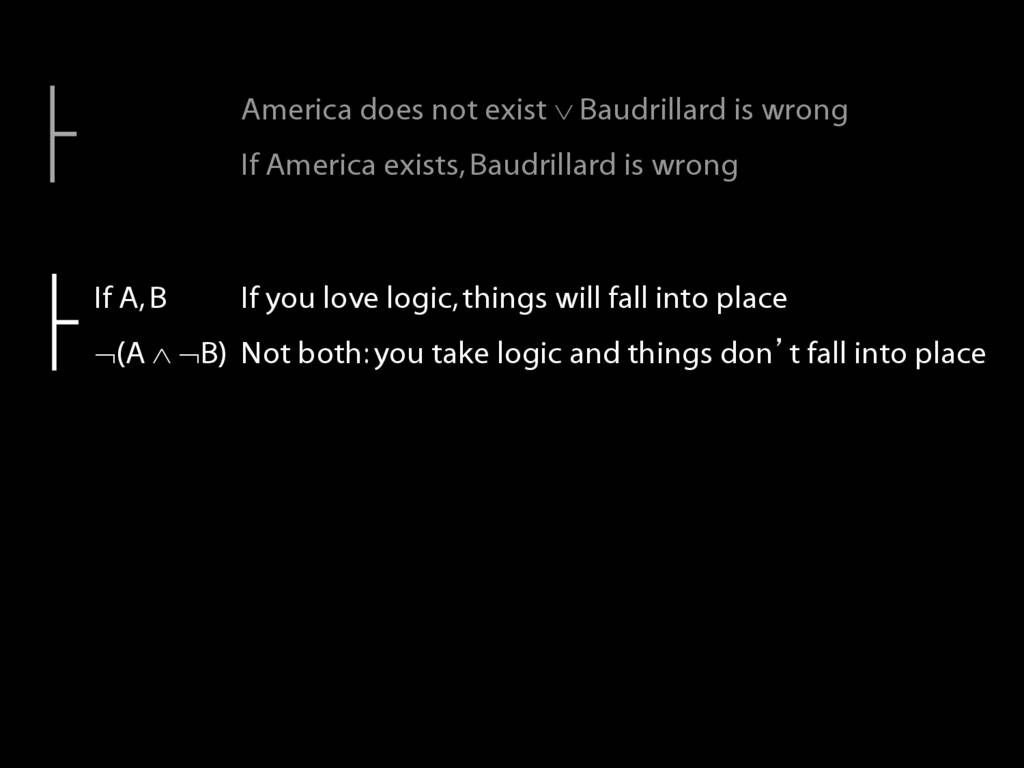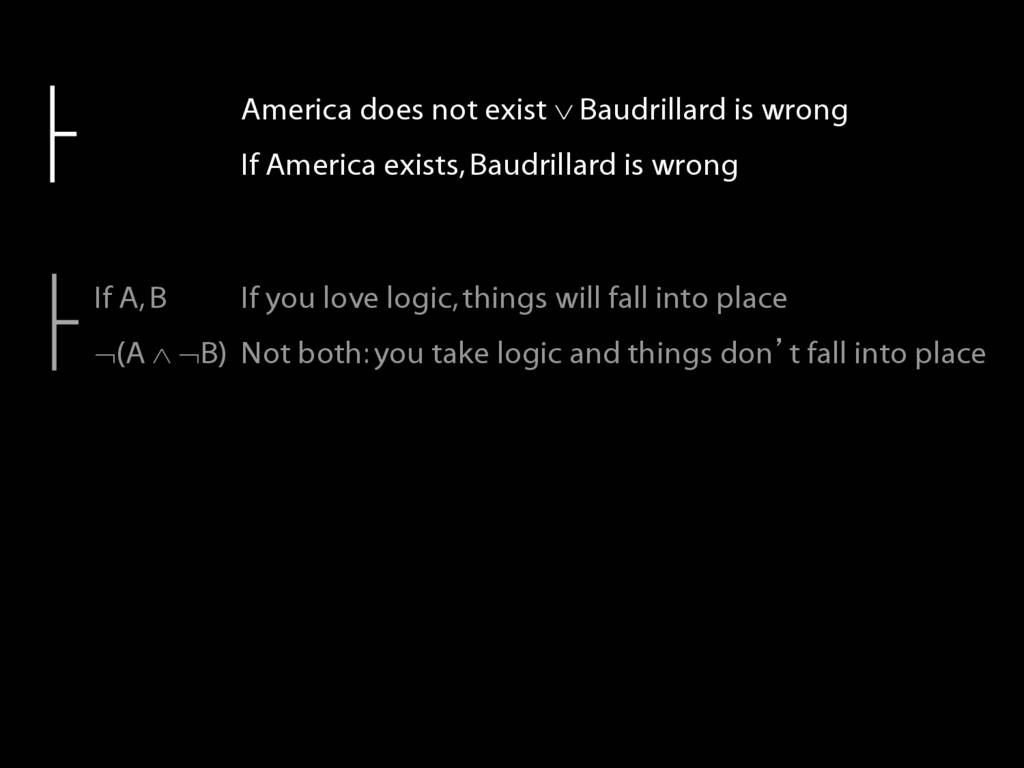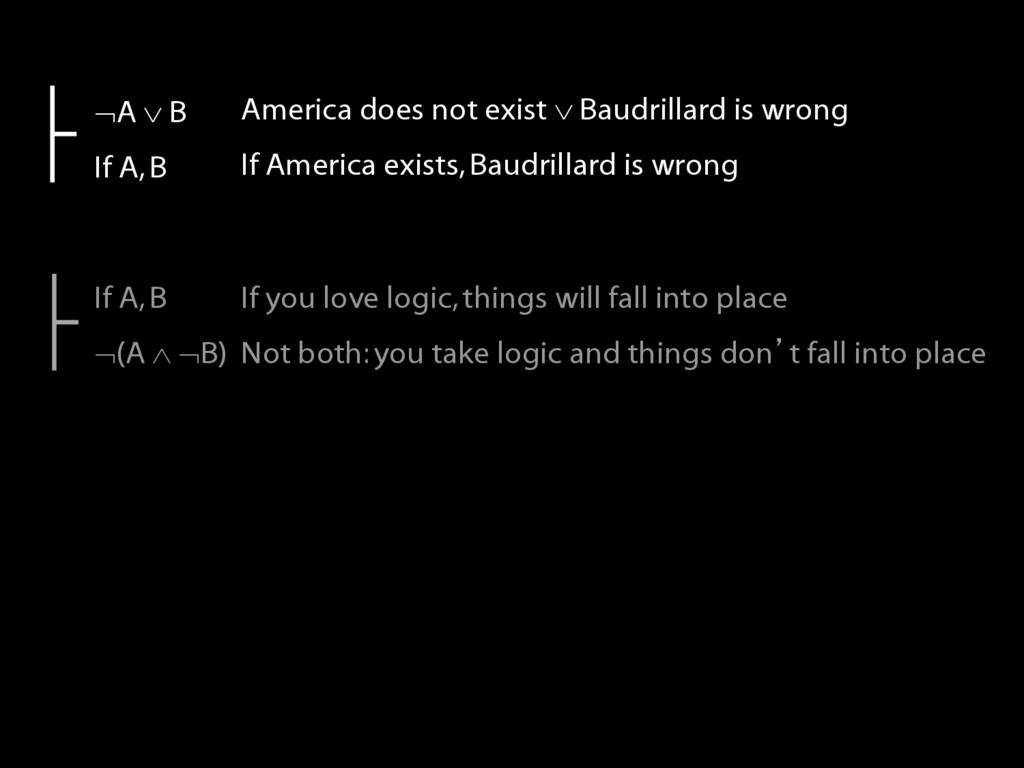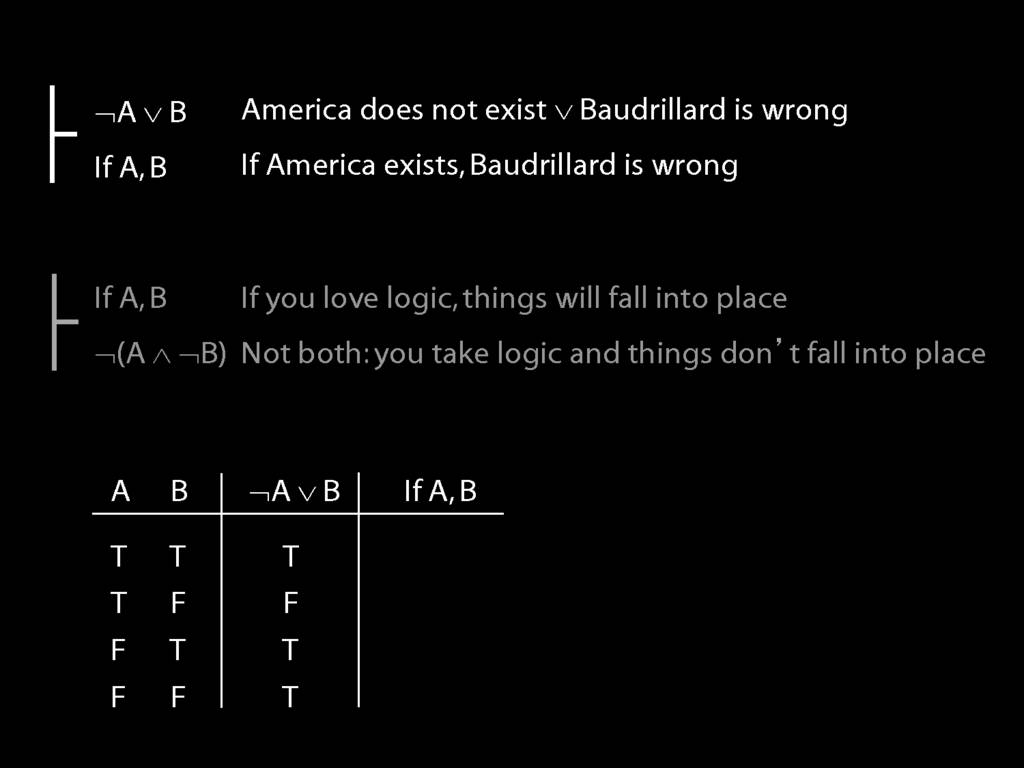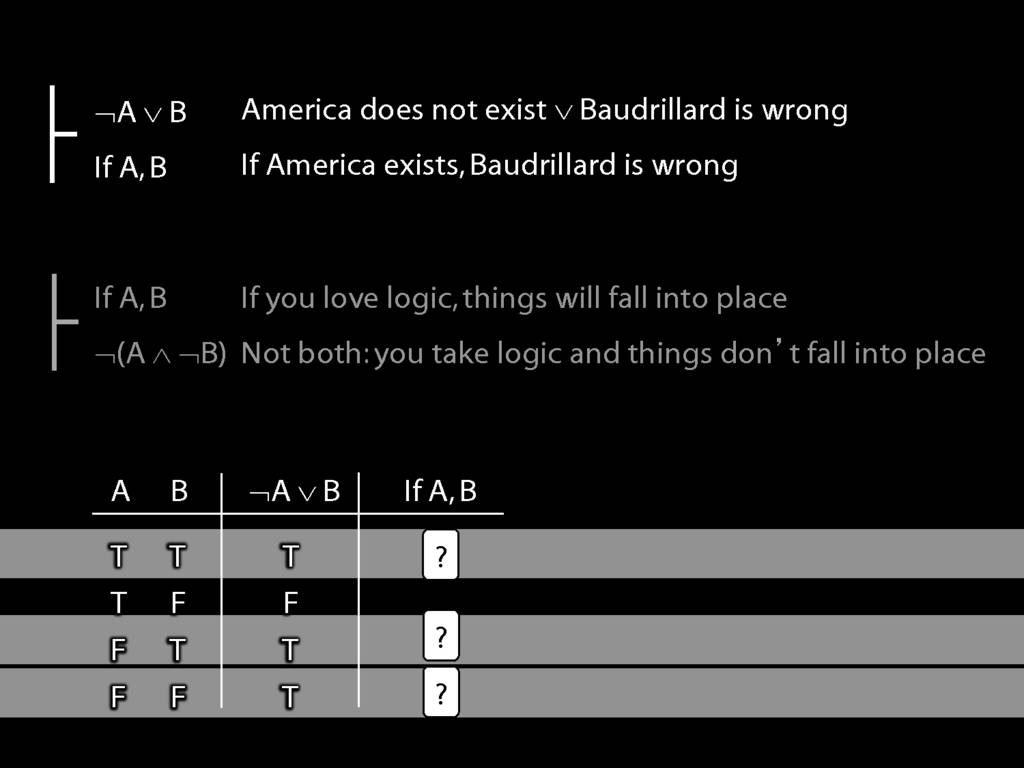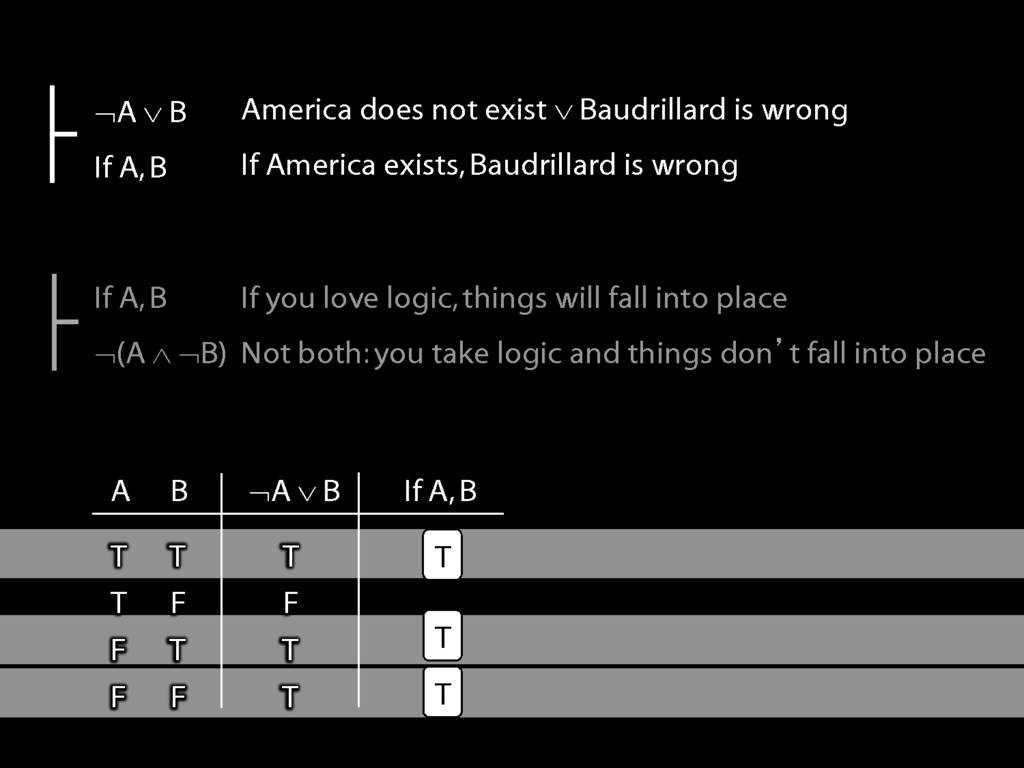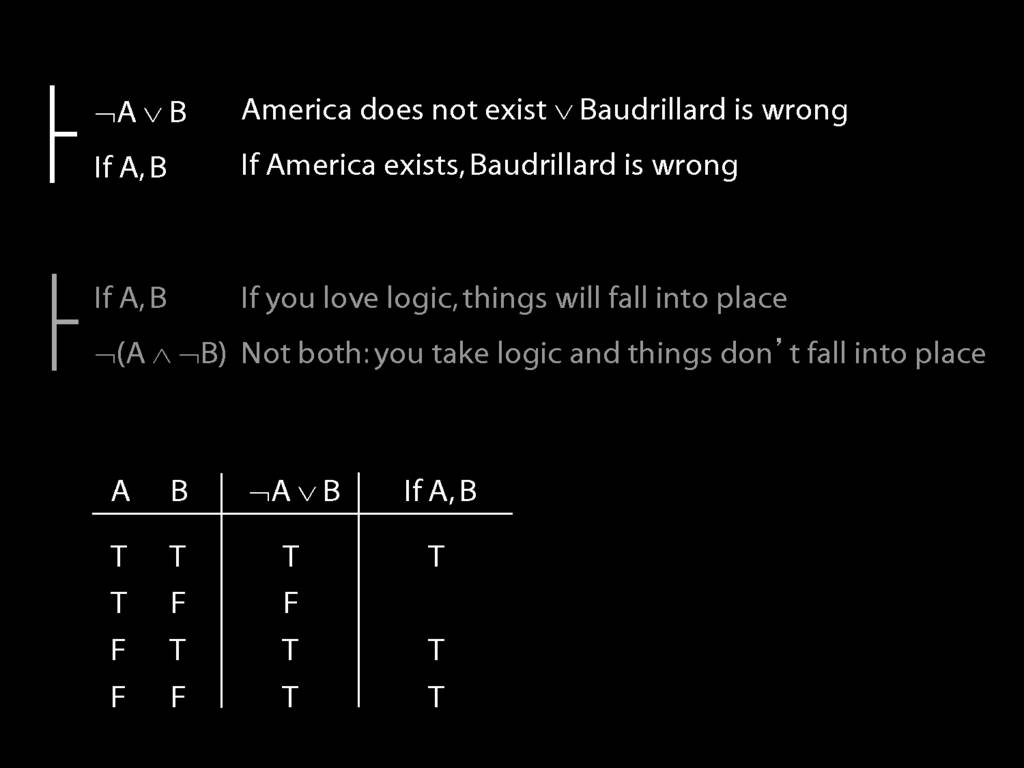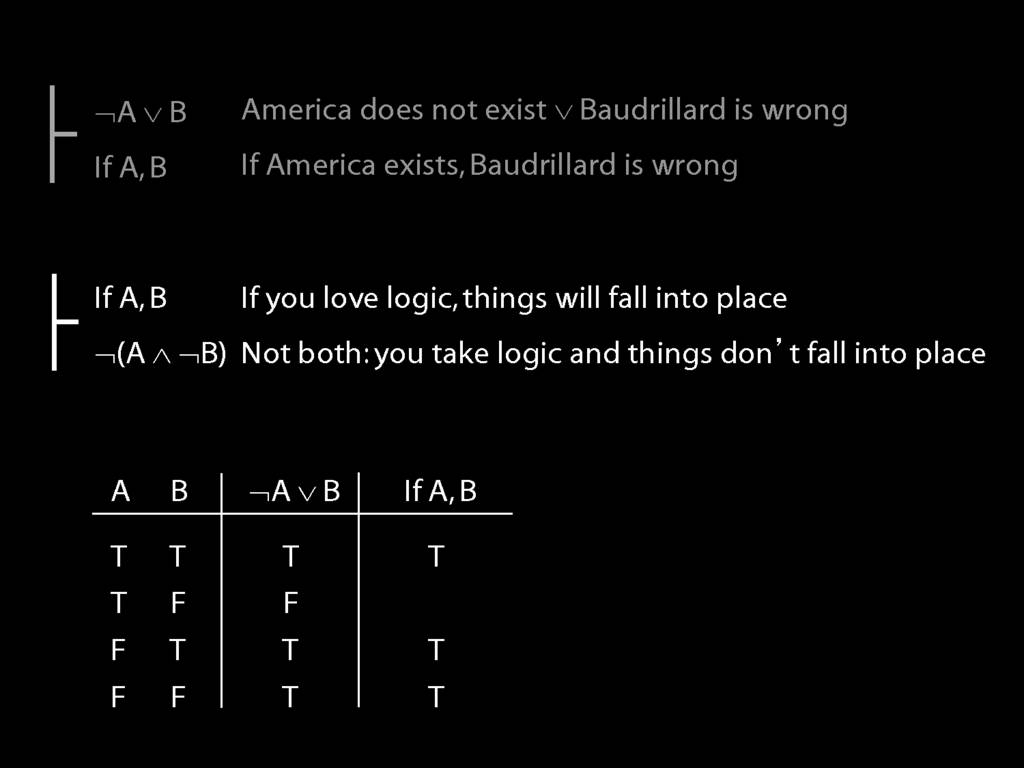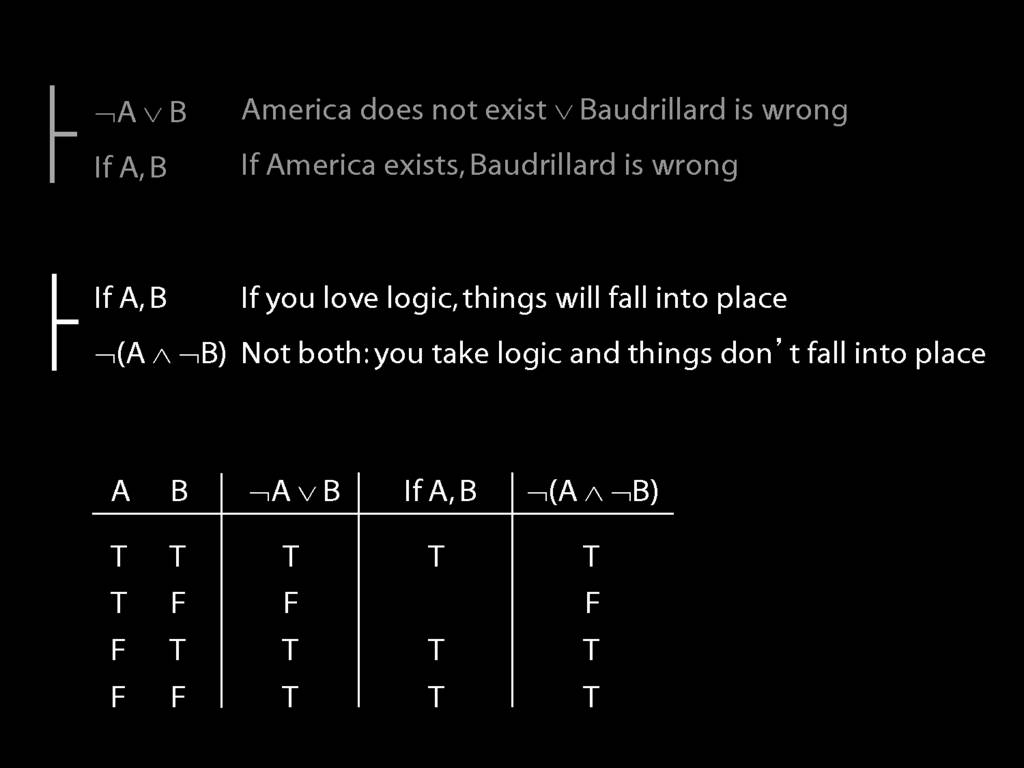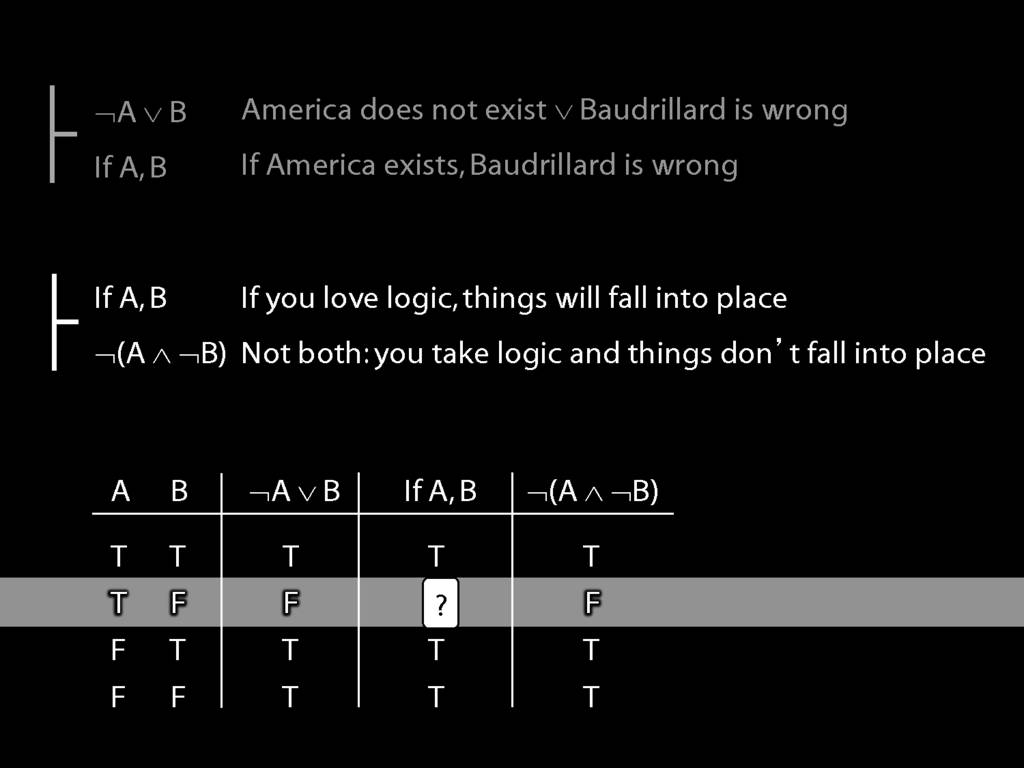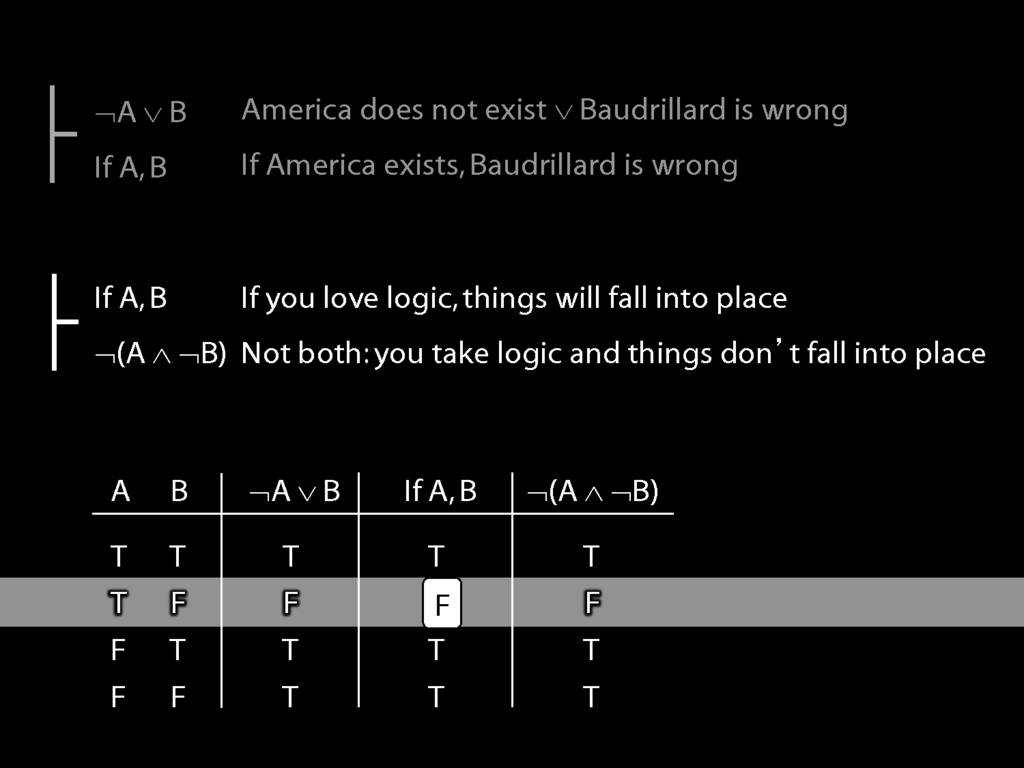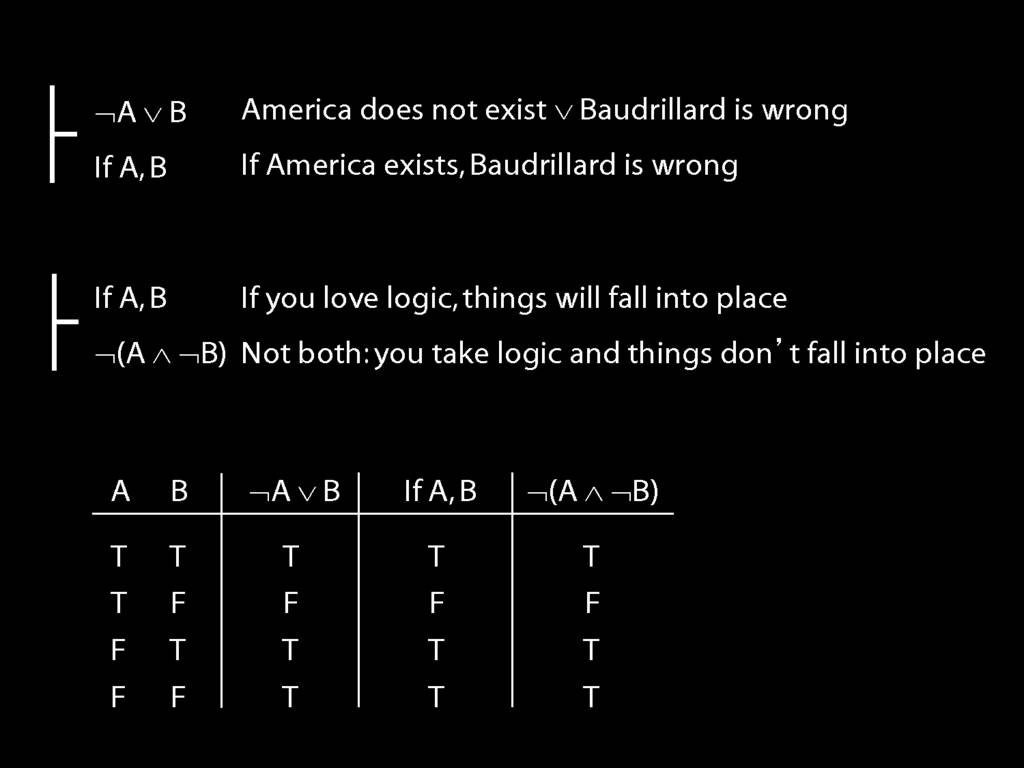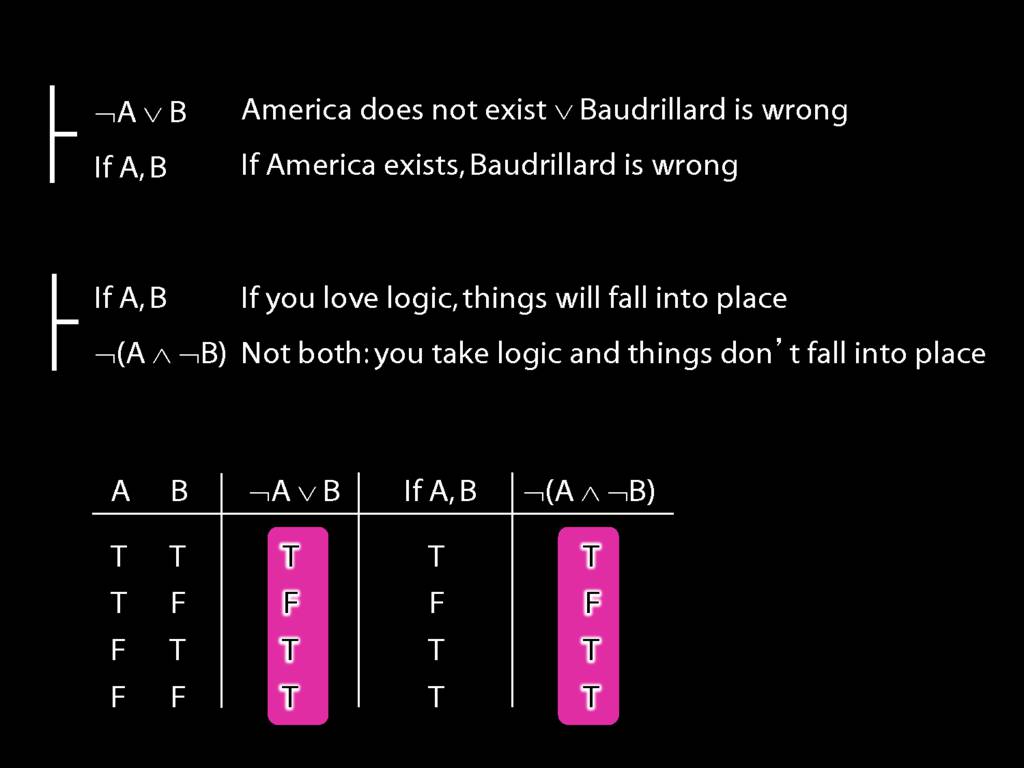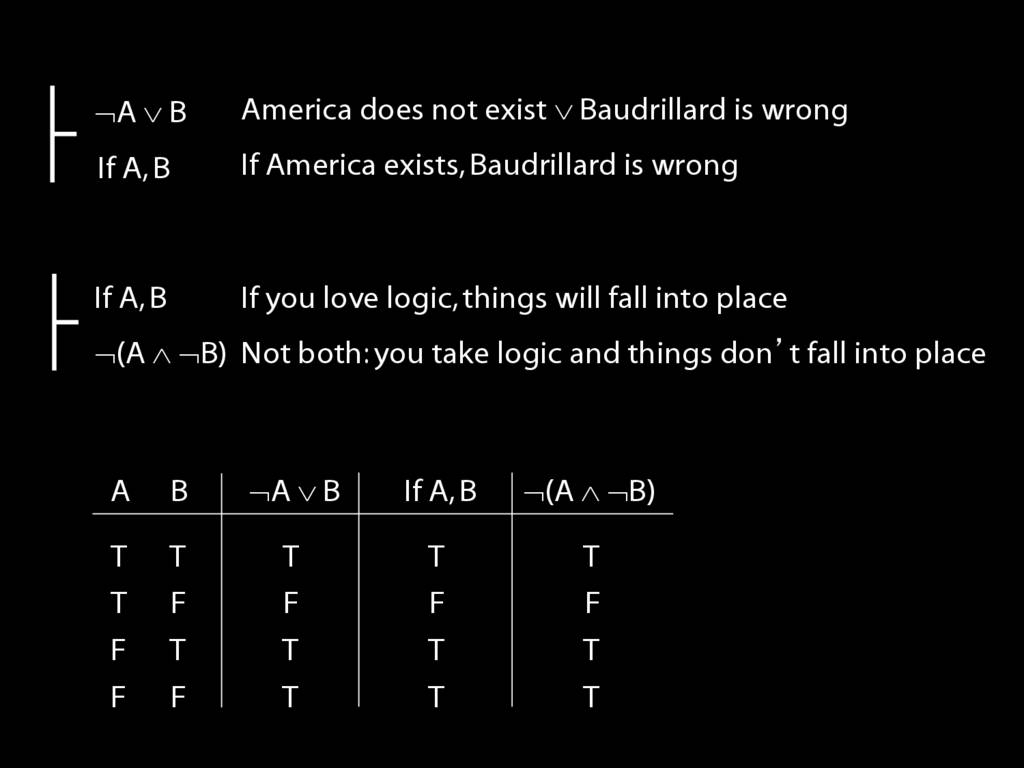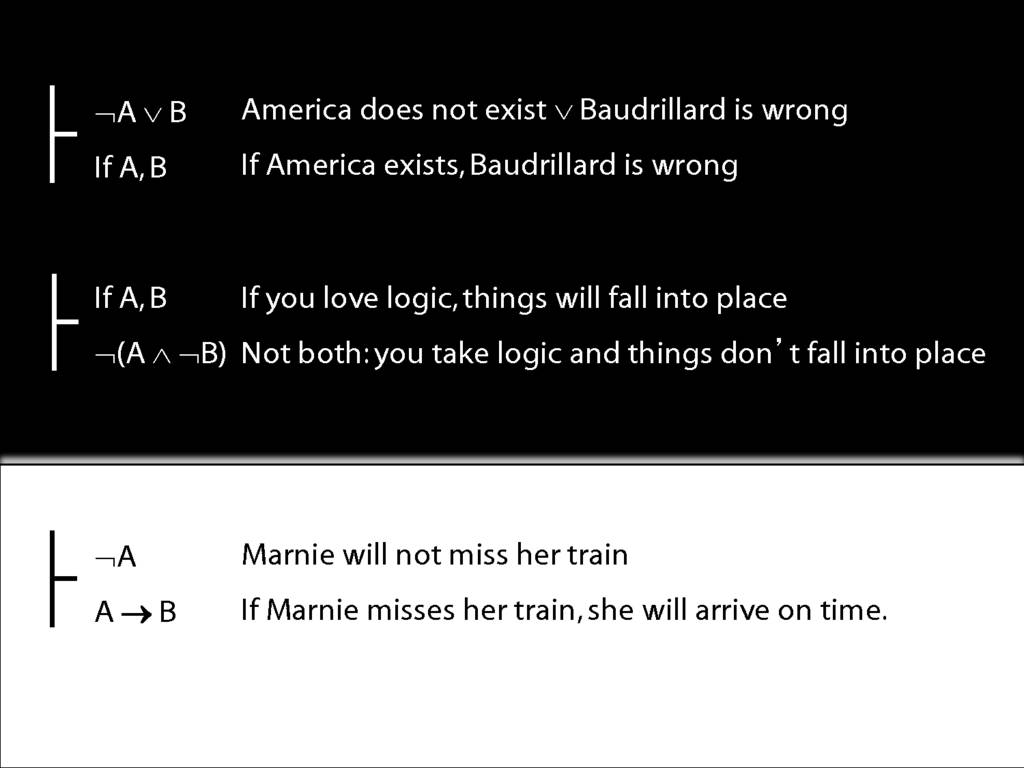Press the right key for the next slide (or swipe left)
also ...
Press the left key to go backwards (or swipe right)
Press n to toggle whether notes are shown (no equivalent if you don't have a keyboard)
Press m or double tap to see a menu of slides

\def \ititle {Logic (PH133)}
\def \isubtitle {Lecture 5}
\begin{center}
{\Large
\textbf{\ititle}: \isubtitle
}
\iemail %
\end{center}
Readings refer to sections of the course textbook, \emph{Language, Proof and Logic}.
\section{Not Or}
\emph{Reading:} §3.7
I was asked, What is the difference between putting the negation outside of parenthesis and putting into individual brackets?
Let's have a look.
‘What is the difference between putting the negation outside of parenthesis and putting into individual brackets?’
Consider this sentence, 'Either the music has stopped or I am dead.'
Either the music has stopped or I am dead.
A ∨ B
Let's suppose we can represent it in awFOL as A ∨ B.
What happens if you deny the whole sentence?
That’s not true.
To capture this denial in awFOL, we put negation outside the brackets.
¬(A ∨ B)Now consider this alternative sentence, 'Either the music has not stopped or I am not dead.'
Either the music has not stopped or I am not dead.
To capture this in awFOL, we put negation inside the brackets.
¬A ∨ ¬BSo now we have a sentence with negation outside the brackets and another one with negation inside the brackets.
And, thinking about the English sentences, you can perhaps see that if we put negation inside the brackets we are not denying the sentence, just asserting a different disjunction.
Let's see how these two differ by constructing truth-tables.
In constructing truth-tables we start with the truth table for disjunction (∨).
| A | B | A ∨ B | ¬(A ∨ B) | ¬A | ¬B | ¬A ∨ ¬B |
| T | T | T | F | F | F | F |
| T | F | T | F | F | T | T |
| F | T | T | F | T | F | T |
| F | F | F | T | T | T | T |
To get the truth table for ¬(A ∨ B) we merely need to flip the truth-values of the truth-table for (A ∨ B).
By contrast, if we want the truth-table for ¬A ∨ ¬B, we need to start with truth-tables for ¬A and for ¬B.
We then combine these two truth tables using disjunction -- so it's True whenever ¬A is True or ¬B is True, and False otherwise.
Now focus just on the truth tables for our two sentences, one with negation inside the brackets the other with negation outside the brackets
The truth of the first denial sentence, ¬(A ∨ B), guarantees that you're alive (B = 'I am dead'), whereas the truth of the second denial, ¬A ∨ ¬B, doesn't entail that you're alive.
Sometimes students decide they'll ignore brackets and hope for the best. But the difference between putting the negation outside of parenthesis and putting into individual brackets is a matter of life or death.
3.19
5.18
\section{What does ‘→’ mean?}
\emph{Reading:} §7.1
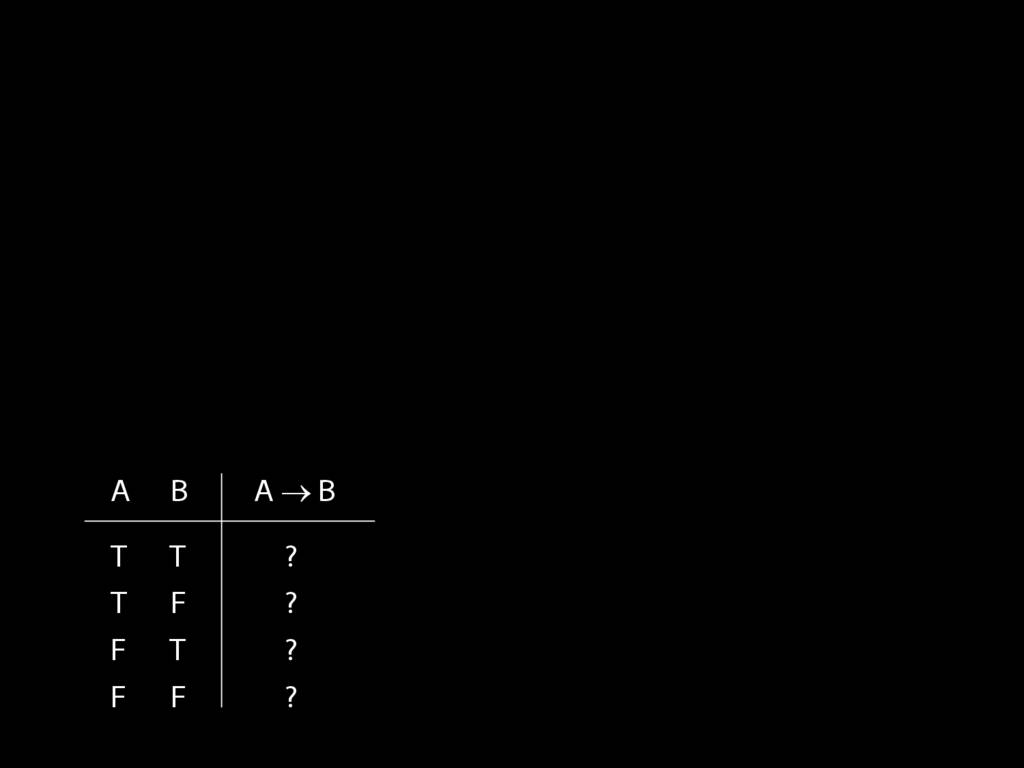
Assuming that the rules of Fitch are such that it is impossible to prove an argument which is not logically valid, the truth table for → is fixed if we accept →Elim and →Intro.
How do the rules of proof for → fix its truth table?
7.1--7.6
8.1 (yes/no answers are ok)
7.2
7.5
7.6
\section{I Met a Philosopher}
\emph{Reading:} §9.2, §9.3, §9.5
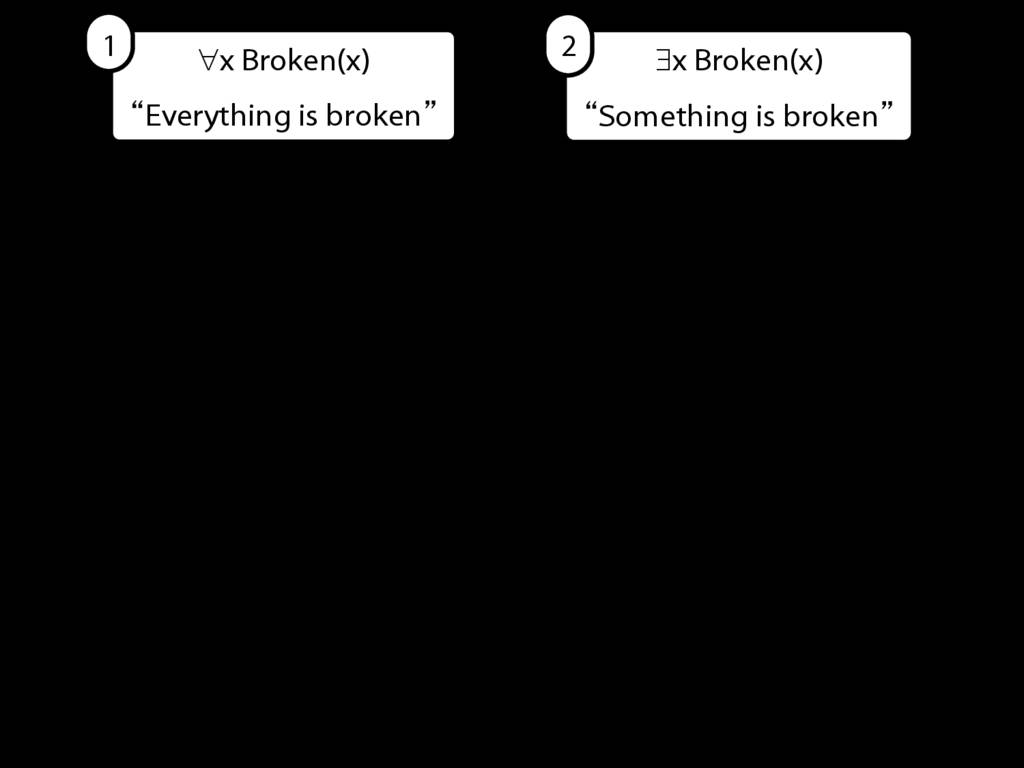
You may remember the two basic forms of quantified sentences we've been considering so far.
These are quite limiting. What happens if we want to say, not that everything is broken, but that everything of mine is broken.
And how could we say, not just that something is broken, but that a red square is broken (say)?
∀x( Circle(x) → Broken(x) )
∀x( Wanderer(x) → Lost(x) )
A square is broken
Something is square and broken
∃x ( Square(x) ∧ Broken(x))
These are variables. I have a terrible conscience about variables because I've been talking about them without explaining what they are.
A red square is broken
Something is red and square and broken
∃x ( Red(x) ∧ Square(x) ∧ Broken(x) )
9.1 odd numbers only
9.2 even numbers only
9.4
9.5
9.8
9.9
9.10
9.12
9.8
9.9
9.10
9.12
9.13
\section{All Squares Are Blue}
\emph{Reading:} §9.2, §9.3, §9.5
9.4--9.5
9.8--9.10
\section{What does ∀ mean?}
\emph{Reading:} §9.4
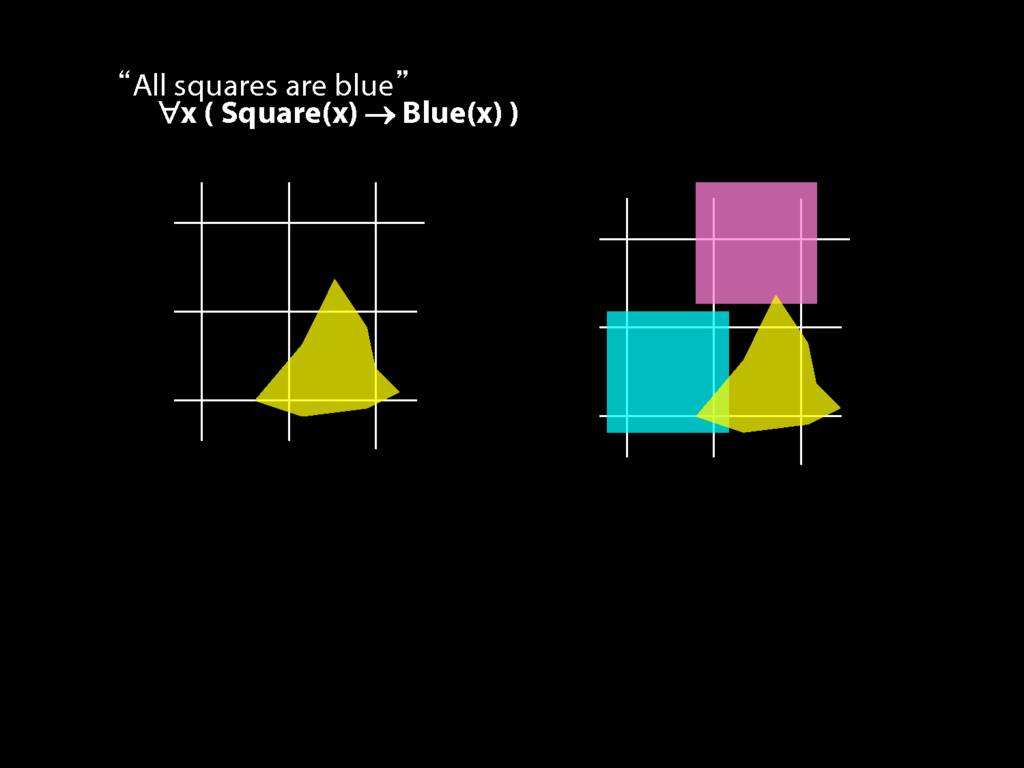
We give the meaning of ∀ by specifying what it takes for a sentence containing ∀ to be true:
\begin{enumerate}
\item Give every object a name.
\item For each name in turn, create a new sentence like this: delete the quantifier and replace all instances of the variable it binds with that name.
\item If ALL of the new sentences are true, so is the original sentence.
\end{enumerate}
\section{Vegetarians Are Evil}
\emph{Reading:} §9.2, §9.3, §9.5
\section{Counterexamples with Quantifiers}
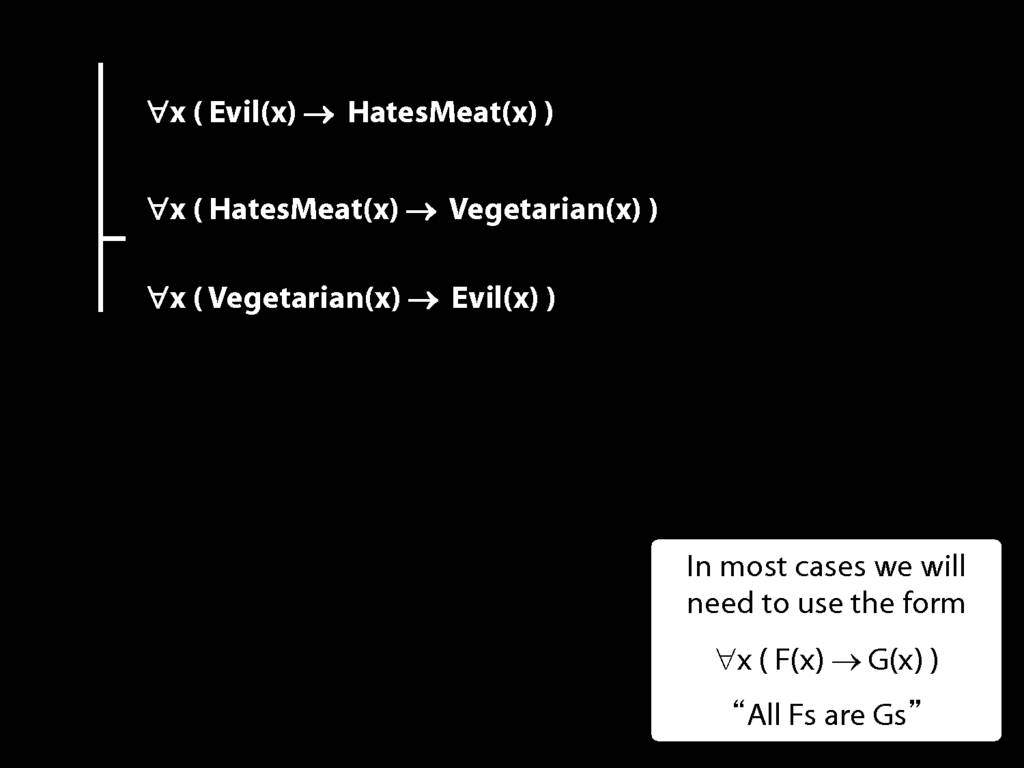
| | Evil(x) | HatesMeat(x) | Vegetarian(x) |
| Ayesha (a) | no | ?no | yes |
HatesMeat(a) → Vegetarian(a)
Joint Action:
Which forms of shared agency underpin our social nature?
(Autumn Term)
Social Cognition:
What makes others’ minds and actions intelligible to us?
(Spring Term)
Origins of Mind: Philosophical Issues in Cognitive Development (PH357)
(http://origins-of-mind.butterfill.com)

We knew that it was invalid ...
Hi, we have been working on the logic exercises ... ended in a 15 minute argument between two maths students and two philosophy students
The exercise is 5.6 which says:
'From P ∧ Q and ¬P, infer R'
We knew that it was invalid because of not being able to infer R when it is not involved at all in the premise,
An argument is logically valid just if there’s no possible situation in which the premises are true and the conclusion false.
however the problem arose when we were discussing the premises.
Is it a contradiction to say that ... that P and Q, then have a second statement that says it's not the case that P?
And if so, then if the premises are contradictory does that automatically make the argument invalid by default?
\section{Not If}
If she has seen it, I am dead.
A → B
If she has seen it, I am not dead.
A → ¬B
| A | B | A → B | ¬(A → B) | A → ¬B |
| T | T | T | F | F |
| T | F | F | T | T |
| F | T | T | F | T |
| F | F | T | F | T |
Only the first negated sentence guarantees that I am alive. Once again, where negation goes is a matter of life and death.

↔ : truth tables and rules
\section{↔ : truth tables and rules}
| A | B | A → B | B → A | (A → B) ∧ (B → A) | A ↔ B |
| T | T | T | T | T | T |
| T | F | F | T | F | F |
| F | T | T | F | F | F |
| F | F | T | T | T | T |
| | 1. | A ↔ B | |
| | 2. | A | |
| | 3. | B | ↔Elim: 1,2 |
| | 1. | A ↔ B | |
| | 2. | B | |
| | 3. | A | ↔Elim: 1,2 |

Does ‘if’ mean what ‘→’ means?
\section{Does ‘if’ mean what ‘→’ means?}
\emph{Reading:} §7.3
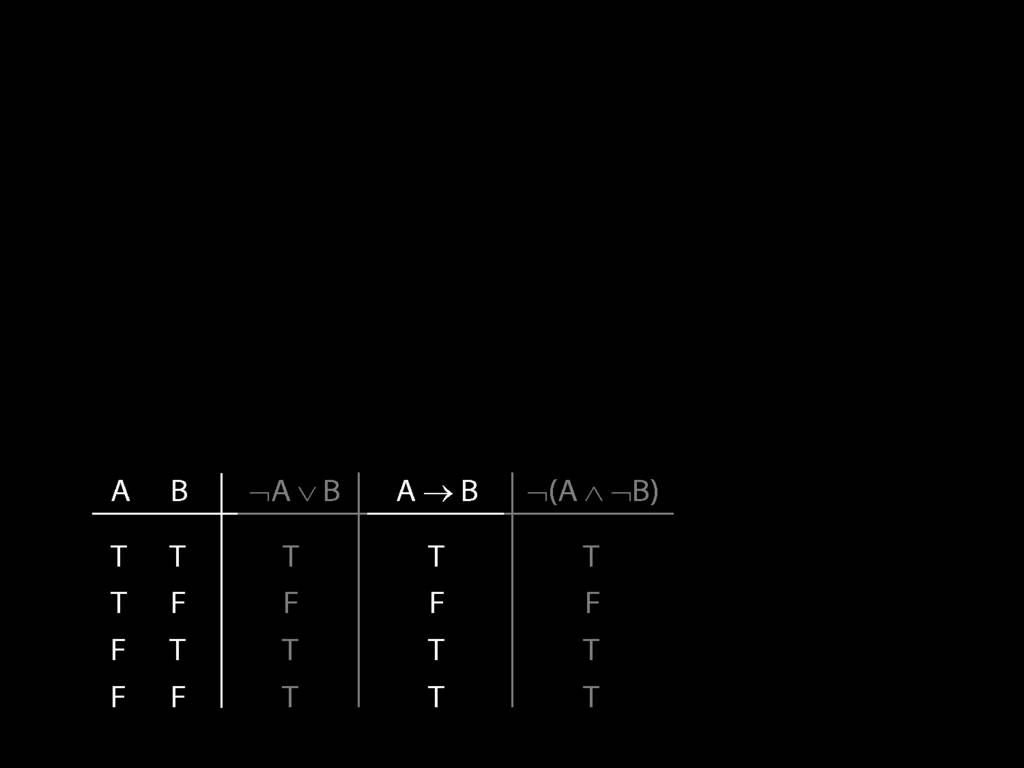
\begin{minipage}{\columnwidth}
These two arguments are valid: does that mean that `if' means what `→' means?
\end{minipage}
\begin{minipage}{\columnwidth}
The English argument isn't valid; the awFOL argument is valid; therefore `if' can't mean what `→' means?
\end{minipage}

Translation with Quantifiers
\section{Translation with Quantifiers}
\emph{Reading:} §9.5, §9.6
\begin{minipage}{\columnwidth}
All discordians weep:
∀x( Dscrdn(x) → Wps(x) )
\end{minipage}
\begin{minipage}{\columnwidth}
All \textbf{quadrumanous} discordians weep:
∀x( ( \textbf{Quadr(x) ∧} Dscrdn(x) ) → Wps(x) )
\end{minipage}
\begin{minipage}{\columnwidth}
All quadrumanous discordians weep \textbf{and wail}:
∀x( ( Quadr(x) ∧ Dscrdn(x) ) → ( Wps(x) \textbf{ ∧ Wls(x)} ) )
\end{minipage}
\begin{minipage}{\columnwidth}
All quadrumanous discordians weep and wail \textbf{except Gillian Deleude}:
∀x( ( Quadr(x) ∧ Dscrdn(x) \textbf{∧ ¬(x=a)} ) → ( Wps(x) ∧ Wls(x) ) )
\end{minipage}
Some persuasive and useful arguments are not valid.
∃x(Persuasive(x) ∧ Useful(x) ∧ Argument(x) ∧ ¬Valid(x))
All discordians weep.
∀x( Dscrdn(x) → Wps(x) )
All quadrumanous discordians weep.
∀x( (Quadr(x)∧ Dscrdn(x) ) → Wps(x) )
All quadrumanous discordians weep and wail.
∀x( ( Quadr(x) ∧ Dscrdn(x) ) → ( Wps(x) ∧ Wls(x) ) )
All quadrumanous discordians weep and wail except Gillian Deleude.
∀x( ( Quadr(x) ∧ Dscrdn(x) ∧ ¬(x=a) ) → ( Wps(x) ∧ Wls(x) ) )
9.4–-9.5
9.8–-9.9
9.12-–9.13




